







We’re very proud of the editorial spread we deliver from across the vast Asian continent with each issue. No matter how big or small the project, whether we visited in person or gathered content remotely, all contributions are highly valued as we create a snapshot of the pro AV industry across the regions. Having said that, there are two features in this issue that deserve a particular mention. In September 2022, our intrepid Singaporean reporter Thomas Mittelmann attended F1 as it roared through the streets of the island state, discovering exactly how all those thousands (five, to be exact) of support staff, broadcasters and drivers stay connected throughout the speed, exhilaration and burning rubber of the race (p44). It’s a fascinating insight into one of the world’s top sporting events.
Thousands of kilometres north (again, five!),
as for filmmakers in light of new tax breaks offered by the Mongolian government (p54). It looks set to really raise the stakes of what’s possible in this remote region and, with input from Quested, SSL and Wes Lachan Design Group, it’s a truly international project.
Our January–February 2023 issue also starts off the new year with the first fruits of Richard Lawn’s recent trip to Southeast Asia – a concert deep in a Javanese forest (p48) and a full report from InfoComm SEA (p60); hope you enjoy.
Wishing you all a very happy and prosperous 2023.
Email: cmoss@proavl-asia.com


13609001455
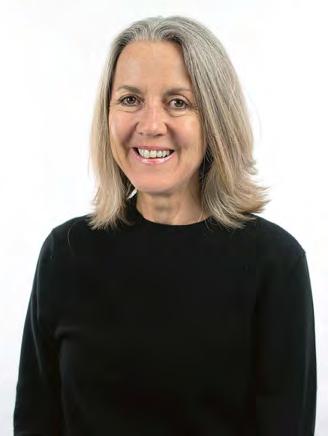
Beijing manager T: +86 10 8652 5184 frank@proaudioasia.com.cn






Smode Tech, the company behind the real-time compositing and media server platform SMODE, has solidified its recent growth in the Asian market by opening an office in Japan. Through a new company, Smode Japan, led by Jamie Goodenough, Smode Tech hopes to capitalise on increased interest among Japanese media, events and virtual production companies in SMODE.
Since its recent launch, Smode Japan has helped its clients open two new greenscreen studios, as well as one large-scale xR studio. In addition, the company also recently helped ecommerce giant Rakuten organise a livestreaming AR content project. SMODE, in combination with a green screen, was also used on a bi-monthly TV broadcast for the football World Cup.
Looking beyond Japan, Smode is supporting Japanese companies to expand its business to other Asian countries. It is also working with a new partner in Korea, DIGITALHURB, to grow the xR market, allowing clients to blend together virtual and physical worlds in live production environments.


“Having been active in Japan for a number of years through Jamie’s independent representation, we are thrilled to officially announce a dedicated Smode Japan office,” commented Francis Maes, CEO of Smode Tech. “Japan has always been at the forefront of the adoption of immersive and creative technologies, so it is a perfect fit for our realtime compositing platform which is pushing the boundaries of what is possible in an AV or broadcast environment. We can’t wait to work with the talented visual arts community in Japan to help bring their grand designs to life.”
Joining Goodenough, whose company Headfull has been a SMODE partner since 2019, at Smode Japan is Nagano-based Yasu Tsukihara, who has been appointed head of training and support.
Initially, Smode Japan will focus on targeted key customers and work closely with them to develop more use cases, which will encourage further adoption of the SMODE workflow in the Japanese market, added Maes. “Japan’s pro AV community can be risk averse, and the

Kramer has announced the completion of a global strategic partnership agreement with Vega Global. Under this agreement, Kramer grants Vega Global authorisation to design, implement and support the entire Kramer solutions portfolio. By tapping into Vega Global’s wide network of AV and IT resellers, this partnership will strengthen Kramer’s solutions offering to markets globally. With over 20 offices across Asia, Oceania and the Middle East, Vega Global has an extensive market presence that also includes key verticals like Enterprise and Education, aligning with Kramer’s market focus, objectives and business strategies.
Gilad Yron, Kramer CEO, said: “I am thrilled and honoured that Kramer is partnering with Vega to redefine how people engage with the world. The high-value combination of Vega Global’s market reach and technical expertise together with Kramer’s broad portfolio of industry-leading audio and visual solutions, will greatly benefit organisations who are looking at deploying technology solutions to enable the hybrid workplace. This is just the beginning of a long and successful journey together.”
Huaming Gu, chief executive officer of Vega Global, added: “I am excited about Vega Global’s partnership with Kramer. As a business, we always look for partnerships with high quality
and reputable brands that deliver professional services. We are looking for this partnership to enhance the customer experience and add value to our clients and we are looking forward to growing the relationship together.”
Echoing the same sentiments, Matthew Deayton, deputy chief executive officer of Vega Global, shared: “We are pleased to partner with Kramer, they have extensive coverage across the APAC and MEA regions. As companies embrace the new hybrid modes of work, having strong collaborations with quality brands is key to delivering best-of-breed solutions and seamless experiences for our customers.”
www.kramerav.com www.vega-global.com
market is naturally drawn to more established and trusted methods and workflows,” he explained. “We are conscious that SMODE can be perceived as a disruptive technology, as it offers new creative ways of working, blending the traditionally separate disciplines of creation and operation. Our goal is to build a high level
www.smode.io

Q-SYS has announced the opening of its new office in Bengaluru, India. This 2,200m2 facility will be the new hub for the SAARC region with sales and marketing, training, support, logistics, operations, as well as software development. In addition, it will house three state-of-the-art testing labs, two software quality assurance (SQA) labs and a first-class training space for integrators, consultants and end users to learn more about Q-SYS technologies.
“The adoption of Q-SYS in India has grown tremendously over the past few years, thanks to the increased awareness and business potential in the region,” said Rajesh Mittal, managing director, Q-SYS India. “We are pleased to move into this new facility which will accommodate our substantial growth, increase support capabilities to better serve our customers, as well as continue to proliferate Q-SYS with bestin-class training.”
“The Bengaluru office is an integral part of development for the software-based Q-SYS audio, video and control platform,” said John White, senior vice president, research and development, Q-SYS. “This new facility gives our team the space to expand R&D capabilities, add software development and, in turn, continually grow Q-SYS with the innovative capabilities our customers require.”
Q-SYS has also launched its Technology Partner Program with integration partners representing a growing list of Q-SYS plugins. As part of the programme, plugins will receive endorsement badges indicating they have been verified or certified and offer integration with the Q-SYS Platform.
These partners now have access to the Q-SYS Technology Partner Hub, a centralised portal with relevant, up-to-date resources for training, solution development and marketing. These resources should make it easier to collaborate with Q-SYS, get support and accelerate go-to-market reach.
Not all wireless is created equal. Audio professionals can encounter challenges using traditional RF technology, but with Evolution Wireless Digital, fundamental limitations of wireless systems are resolved using new technology that is nothing short of groundbreaking. With the EW-DX line, there will be even more professional features for nearly any budget or application.
Discover why EW-DX is the future of wireless. Visit sennheiser.com/ew-dx to learn more about the latest members in the Evolution Wireless Digital series.
 The Evolution Wireless Digital Series
The Evolution Wireless Digital Series

disguise Learn offers certification in the form of printed certificates and digital badges that get posted to the attendees’ LinkedIn network upon successful completion of each module.
“We are proud to launch disguise Learn and offer an easier and better way for users to begin their learning journey with us. Now, both new and existing users can get the best out of our software and hardware solutions and feel fully supported within the disguise ecosystem,” added disguise chief experience officer, Alex Wills. “The pace of innovation
disguise, the technology platform enabling live experiences and virtual productions, has reengineered its learning programme with a new offering named disguise Learn. disguise Learn’s new inclassroom and online courses provide an improved experience offering dedicated learning pathways for virtual production, extended reality, broadcast graphics, location-based experiences and live events so users can pick a learning pathway most relevant to their chosen industry application.
“Within the last three years, we’ve helped power more than 600 real-time productions in over 50 countries. With disguise Learn, we want to share all we’ve learned with our


20 years of industry expertise and make it as easy as possible for anyone to become an expert in disguise workflows. With our new, industry-tailored learning pathways, learners can apply newfound knowledge to whichever projects they work in, including xR and virtual production as well as locationbased experiences and live shows,” said disguise training manager for EMEA, Alex Lapthorne.
disguise Learn offers a blended approach with both online and classroom learning for all levels of experience. The online offering comes free of charge and now includes more easily consumable learning content presented in different formats. Users of
A new report by Research Dive has forecasted the Asia Pacific Meeting, Incentive, Conference and Event (MICE) industry to hit $501.3 billion by 2028, growing at a CAGR of 6.7%. The report attributes the growth to Asian nations having undergone speedy globalisation, executing significant infrastructure development, and the recovery of the hospitality and tourism industry.
“Now that MICE and live entertainment are back in full swing, we felt it was the perfect time to host the Harman Connect Day 2022 in Hanoi and showcase many of the new products that we launched during the past two years,” said Amar Subash, vice president and managing director of Harman Professional, Asia Pacific and India.
The first Harman Connect Day 2022 took place at the InterContinental Hanoi Landmark72 hotel on 9 November. The event welcomed hundreds of guests representing dealers and systems integrators that offer solutions for professional audio, video and lighting systems in Vietnam. There was a series of product demonstrations showcasing the latest technologies from Harman brands like JBL and AMX, catering to a wide range of industries such as government, education, live entertainment and hospitality.

recently equipped with Harman audio solutions include CP Group’s office in the Bien Hoa 2 Industrial Zone, Dong Nai province and the fivestar Hyatt Regency Nha Trang hotel.
Maintaining steady investment in research and development, even amidst a pandemic, has led to Harman refreshing a big part of its professional products portfolio over the last two
Following that, Harman’s focus switched to the JBL portable PA category, refreshing the EON One all-in-one column PA and expanding that range with the PRX One column PA. The company continued on this growth streak by launching the EON700 Series and the PRX900 Series.
For the Tour and Performance Audio category, Harman launched the JBL SRX900 and the A6, completing the JBL VTX A Series just in time
for the return of concerts and large-scale live performance events. The JBL Install category also saw new models being added to the Control Contractor Speaker series, with more announcements expected into early 2023.
Next, Harman will be focusing on its video and controls portfolio.
During the pandemic, Harman recruited a domestic resource in Vietnam to focus on product training, while building a wide distribution system of proficient business partners that are mobilised to provide local support on product specifications and solutions for sizeable projects. The company intends to continue to grow its coverage in Vietnam across 64 provinces and effectively collaborate with local providers to offer products and timely support to its customers when needed.
Subash added: “Being a subsidiary company of Samsung definitely puts us in a better position when it comes to negotiating with our supply chain. We are also prepared to invest in spot buys and airfreight of microchips and raw materials to our production facilities, when necessary.”
disguise Learn can also enjoy easier access to trainers in different regions, with disguise providing classroom learning in its key locations across EMEA and APAC either through its own trainers or through certified within the media and entertainment space is increasing exponentially and we want as many people as possible harnessing the disguise platform to stay at the very Pacific, Nick Screen, revealed Harman’s post-pandemic growth plan involves investing resources in Southeast Asian countries, with Vietnam as a key focus market. Two projects the MAC Ultra, which is now said to be its flagship fixture.
As part of its efforts towards sustainability, Shure is improving its packaging to be more environmentally friendly. This new initiative will ensure Shure’s products prioritise the use of recyclable and renewable materials. New products will be packaged using 75% recyclable and/or renewable materials in 2023. In addition, the company is also improving packaging sustainability by committing to source a greater portion of its paper and fibre-based packaging from suppliers certified by sustainable forestry organisations, such as FSC, SFI and/or PEFC, with the intention to eliminate non-certified packaging by 2030.

Shure has also pledged to optimise packaging for efficient distribution and logistics, creating
packaging that better fits onto pallets to maximise space, reducing transportation fuel and emissions produced by excess shipments. It is also ensuring existing packaging is greener, for example, replacing plastic inserts with moulded pulp where possible.
The company recently joined the Sustainable Packaging Coalition and conducted an audit to assess sustainability of more than 1,500 different packaging components. Shure has also implemented software solutions to help improve packaging design and distribution efficiency. Environmental impact assessments have been added to other environmental requirements as part of Shure’s standard process.
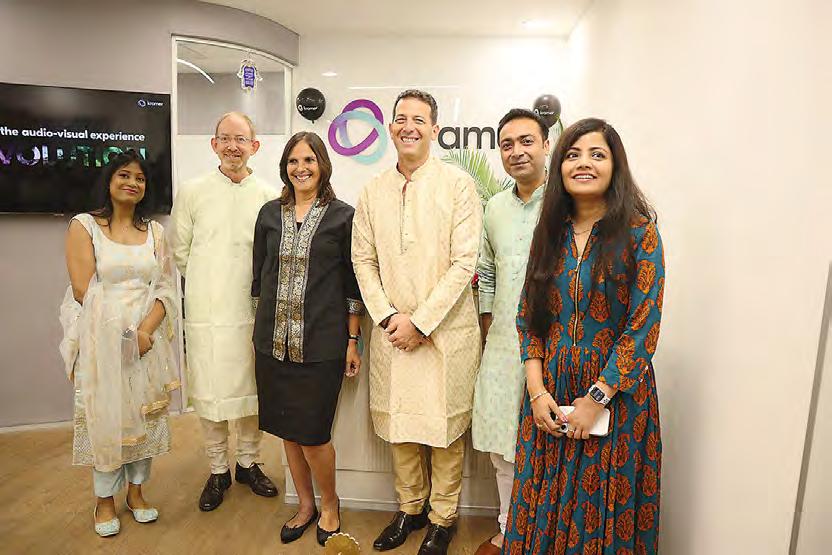
The 1,000m2 R&D centre is an extension to the global R&D organisation, which includes offices in Israel and Canada, and encompasses an R&D lab, sales centre and advanced meeting and collaboration spaces. “We invest a double-digit percentage of revenue every year in innovation. As part of our goal to build strong R&D capabilities around the world, India offers a huge opportunity in terms of talent and extending our geographical reach,” said Kramer CEO, Gilad Yron. “We’re excited about the potential our Noida R&D centre brings to expand our offering in the UCC space as well as other software-
Dorit Bitter, VP of R&D at Kramer, added: “The ‘physi-digi’ world we live in requires innovative solutions that drive productivity and collaboration, both virtually and in-person. Kramer’s vision is to meet this demand by creating technology that powers the world’s most intuitive end-toend audiovisual experiences. Developing software applications, particularly to support the UCC sector, is a top priority, and we’re confident that our new R&D centre in Noida will help us to remain a leader in this field.”
www.kramerav.com

Qwilt has announced a newly signed partnership with Japan Internet Exchange (JPIX), one of the largest internet exchanges in Japan, to improve the quality and delivery capacity of livestreaming, video-on-demand and media applications across Japan using Qwilt’s open caching technology.
JPIX provides an environment for interconnection between Internet Service
Providers (ISPs) and content providers across Japan, enabling optimisation of traffic between
But even before this, Shure was implementing greener packaging. In the 1980s, the company changed the packaging for mixers by eliminating the use of Styrofoam, switched from bleached cardboard to a natural brown colour and used a soy-based ink for the printing on the cardboard box. All the
packaging could be recycled, except for the plastic bag that covered the mixer inside the cardboard container. For more information about Shure’s environmental efforts, visit Shure’s Sustainability Page.
www.shure.com

Technical Direction Company (TDC) took home the Best Technical Achievement Award for its work on Vivid Sydney 2022 at the Australian Event Awards 2022 held in-person The Jackson luxury superyacht in Darling Harbour, Sydney on 23 November. The Australian Event Awards recognise the entire events industry, fostering continued excellence and innovation.
LED screens, wayfinding and super-powered custom-built media server technology for over 27 visual installations and projection artworks across Sydney.
“For 11 years, TDC has worked with Destination NSW to bring Vivid Sydney to life. It’s an evolving production and we are continually innovating,” said Michael Hassett, founder and managing director at TDC.
said: “The innovation and delivery by TDC to enhance this event was first class. The new laser technologies really lifted the colour and resolution of the displays this year and it’s fabulous to hear that this has been achieved with a reduction in energy consumption. The technical achievements were multiple and excellent. Congratulations on a fabulous event.”
For Vivid Sydney 2022, TDC delivered the largest-ever quantity of technology. This included large-scale laser projection mapping,
an important award and recognition of our work. We were amongst a great line-up of shortlisted nominees and award winners,” said Hassett.
www.tdc.com.au
Japan’s largest internet exchanges in terms of traffic volume and the number of customers connected. Through the company’s new partnership with Qwilt, JPIX will deploy Qwilt’s Edge Cloud for Content Delivery solutions in the heart of its exchange network.
transit services and internet exchanges. With over 250 customers, JPIX is said to be one of

www.jpix.ad.jp www.qwilt.com

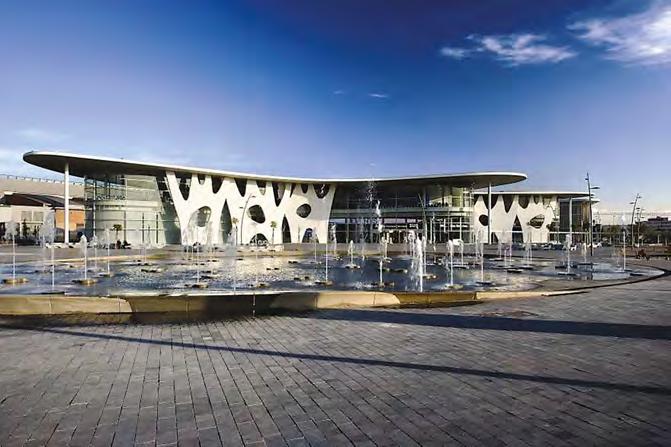

ISE 2023 will see a host of new features focused on the growing relevance of content production and distribution technologies. This new focus sees the event highlighting the more than 70 exhibitors located all around the Fira with offerings in content production and distribution, as well as show floor tours. For 2023, more space has been added to Hall 6 and exhibitors now and in the future will include suppliers of solutions including cameras, camera tracking equipment, switchers, monitors, virtual sets, video networking solutions, intercoms and audio consoles.
Additionally, ISE’s comprehensive conference programme for 2023 will be enhanced with the addition of a new Content Production and Distribution Summit, details of which will be revealed over the coming weeks. The summit’s focus will be around how corporates and institutions –all budding film and content makers – can make the best of this new skill to attract new customers and engage better with their existing customer base.
“Numerous vertical sectors, from corporate and education to retail and hospitality, have begun to create, store and distribute their own video content, and consumer demand for this shows no signs of slowing,” said Mike Blackman, managing director at Integrated Systems Events. “ISE’s Content Production and Distribution offering will show what’s possible, allow visitors to explore the technology available to create something unique and eye-catching and provide a forum to discuss what’s next for the sector.”
The Content Production and Distribution Zone joins ISE’s other Technology Zones on the show floor that include Audio (Hall 7); Content Production & Distribution (Hall 6); Digital Signage & DOOH (Hall 6); Lighting & Staging (Hall 7); Multi-Technology (Halls 3 and 5); Residential & Smart Building (Hall 2); and Unified Communication and Education Technology (Hall 2).
Also new for 2023, the Impact Lounge will offer visitors the chance to meet with organisations making a difference in the industry. This includes Women in Live Music (WILM) and ISE sustainability partner SAVe and The Circle Society. The lounge will provide a space for visitors to connect with these organisations that are looking to change things for the better and to find out more about the work they’re doing and the difference it’s already making.
www.iseurope.org

IP-A1 series consists of a variety of commercial-grade IP audio endpoints, which can be used as an independent audio system or a fully integrated audio communication system to be configured and operated in conjunction with external systems and platforms such as security video monitoring, access control, digital signage or fire alarm systems.
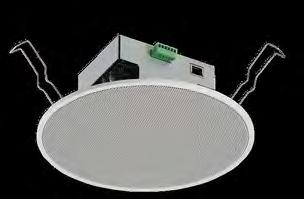

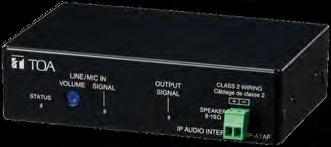
Be it a simple PA system with just a single endpoint device or a community wide audio communication system configured with large number of endpoints, the TOA IP-A1 series is server-less and highly scalable.
We supply sound, not equipment.
TOAasiapacific www.toa.com.sg

Hewshott has reached a new milestone as it celebrates 20 years as a company. Led by original founder Peter Hunt, Hewshott has grown to become one of the industry’s well-known independent acoustics, AV, IT and theatre consultancy practices.
“As I think back, it strikes me that our mission today is no different from our vision when I opened the door of our Farnham office for the first time in 2002. I wanted to make consulting about delivering longterm solutions, not just projects. Today, ‘Believe in Better’ reflects the continued aspiration to embrace the bigger picture –
WORLD
The SDVoE Alliance has announced that Farlink Wireless Technology has joined as an adopting member. Founded in 2020, Farlink Technology is a Hong Kong-based technology company with multiple branch offices established in mainland China. Since its establishment, the company has been striving for multi-dimensioned development, providing one-stop diversified solutions and is
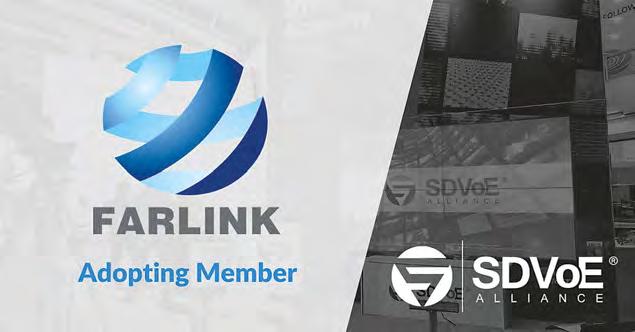
committed to solving the business needs of customers.
Farlink’s core research and development technical team is formed by senior practitioners in the IoT industry. It has also collaborated with professors from well-known universities in Hong Kong to develop and design Farlink-branded network products, supporting the company’s scientific research strength.
A spokesperson for SDVoE said: “It’s great to see a company recognise the link between
flexibility and scalability over traditional approaches. The encoders can simply be applied for the product development of multimonitor broadcasts or distributed videowall systems. Combining the Farlink high-speed wireless network solution with SDVoE encoders and decoders, high-resolution video/audio sources can be transmitted flawlessly over distance, to remote monitors and other equipment.”
www.sdvoe.org

better consulting, better design, better execution, better engagement, better experience, better value, better client experience. I’m surrounded by the very best people who work hard to maintain our grounded approach, and we drive a culture of learning and accountability across all our offices,” stated Hunt, who also dons the hats of group CEO and managing director of the Australia and Singapore operations.
Hewshott has five global offices that are home to a 30-strong team of specialists across all four disciplines of acoustics, AV, IT and theatre. The company plans
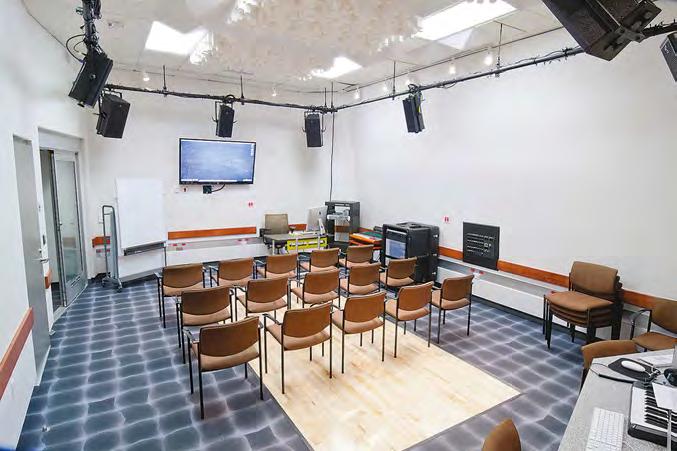
on celebrating 20 years in business by highlighting 20 keystone projects completed over the past two decades in its “20 years, 20 projects” campaign. The campaign will serve to honour Hewshott’s past and inspire the company’s future.
“The past 20 years have been exciting and rewarding on so many fronts. With that said, I am even more excited about our future and where we are going. The acceleration of technology convergence is allowing us to innovate and think beyond the obvious every day,” added Hunt.
www.hewshott.com
Meyer Sound has announced a reboot of its education programme, with a full programme of workshops and training sessions scheduled at the Berkeley headquarters as well as overseas, and the formation of partnerships with educational institutions. Many of the sessions will be led by two long-time fixtures in the company’s education programme, director of system optimisation Bob McCarthy and senior technical seminar instructor Magu Ramirez, now joined by senior technical support and education specialist, Merlijn Van Veen. “We were forced to shift most of our focus to online platforms during the peak Covid months,” said Meyer Sound training and education manager, Robyn Bykofsky, “but, in 2023, we will be back with a greatly expanded programme of in-person training sessions, with
most organised and presented by Meyer Sound but with others presented in collaboration with our partner schools or through industry and professional associations.
“The exact structure of the partnerships will differ from school to school,” Bykofsky noted, “but, in all cases, the goal is to ensure that the coming generation of sound professionals, as well as those already working in the industry, have the skills and knowledge they need to give audiences the best possible sonic experience, regardless of the products used.”
Meyer Sound also will continue to sponsor educational offerings in partnership with USITT and AVIXA.
www.meyersound.com
Mackie has acquired plugin developer Babelson Audio and its library of processing plugins, including digital emulations of vintage tube EQ and saturation, multiband compression, reverbs, harmonisers, analogue delay and more.
Mackie will continue to support new versions of Babelson’s existing plugins,
with plans to continue to introduce new plugins made by the same people. In the meantime, all requests for product support should be made to Mackie tech support.
Alex Nelson, Mackie CEO, said: “This acquisition allows us to provide solutions for customers using DAW software but,
just as importantly, it deepens our bench for hardware-based processing in future products. With the addition of Babelson plugins to the Mackie family, we are excited to be able to offer our users some of the most powerful, versatile and bestsounding tools available for their music production needs.”
Babelson founder, Thomas Ceyhan, concluded: “The Mackie brand has always been synonymous with creativity, great sound and great value, and I can think of no better partner for bringing these great products to a broader audience.”





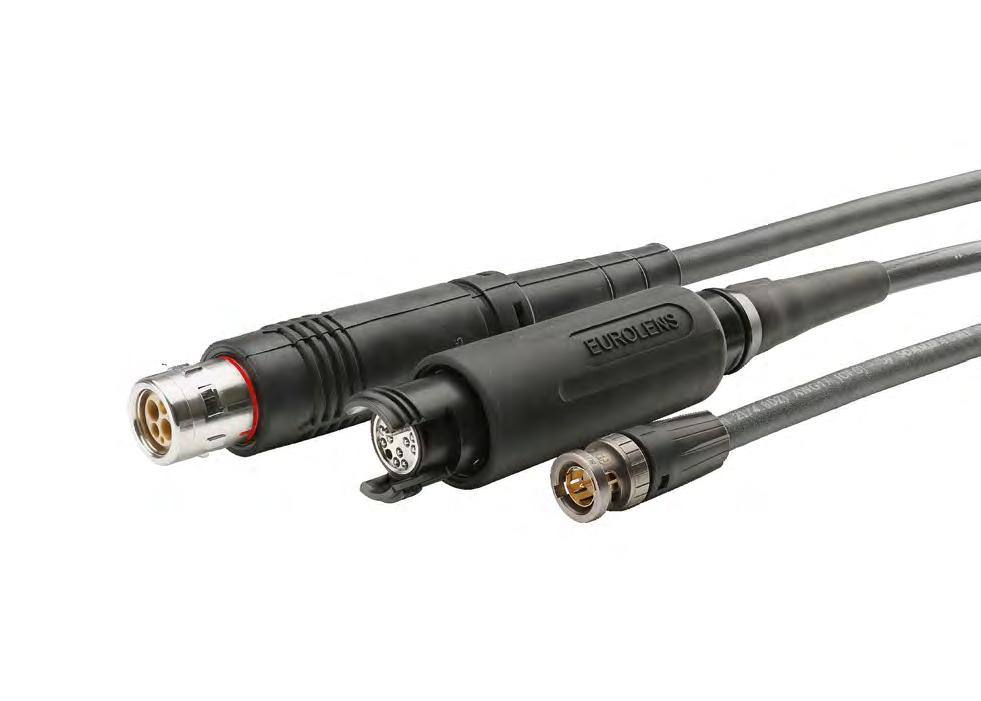
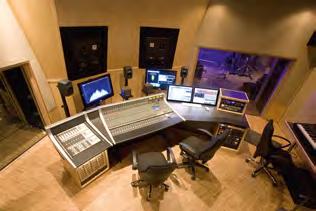



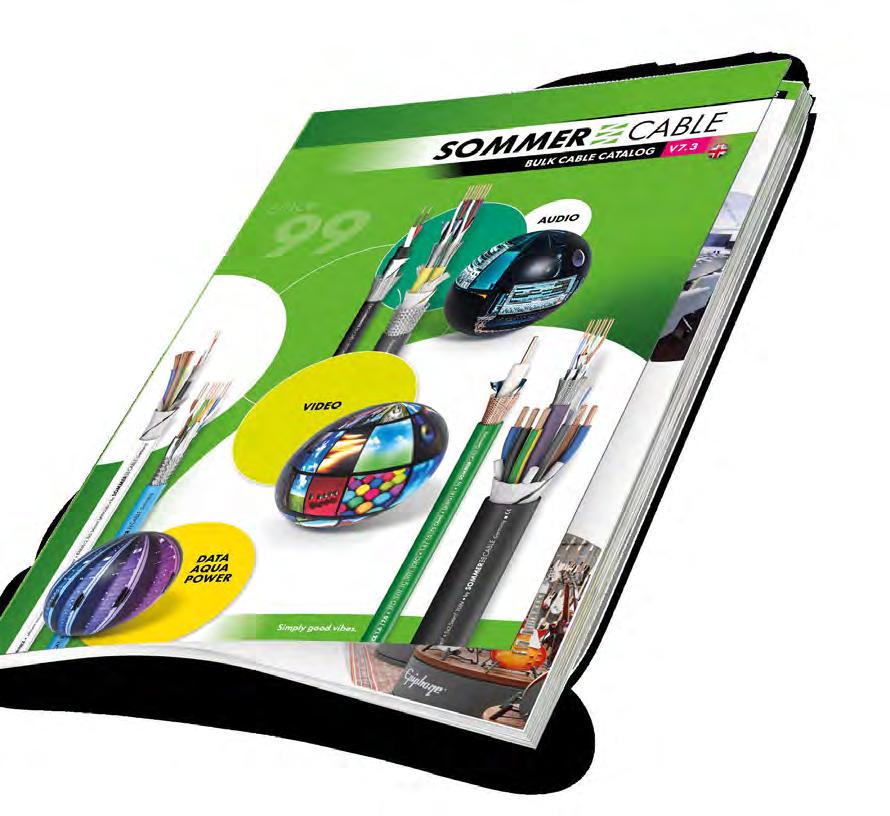

Adam Hall Group continues to expand its international sales network with Suara Visual Indonesia (SVI), gaining an experienced distribution partner in Indonesia. SVI will take over the exclusive distribution for LD Systems, Cameo and Palmer with immediate effect.
Founded in 1982, SVI offers a wide range of manufacturers, products and services to customers in the touring, broadcast, retail, hospitality and corporate sectors. In addition to international sales activities – including for Samsung Professional Display – SVI is also responsible as an integrator for the planning and implementation of numerous installation projects in Indonesia.
“As the leading distributor of commercial audio, visual and lighting in Indonesia, we are very excited to be part of the Adam Hall family,” said Setiawan Winarto, CEO of

partners and systems integrators to cover lots of new opportunities in B2B and B2G projects across Indonesia with LD Systems, Cameo and Palmer.”
Glenn Lin, business development manager, Asia Pacific, added: “With SVI, we are gaining a real big player that perfectly covers the diverse Indonesian market with its large portfolio and experienced team. In this way, SVI will optimally support us in positioning the LD Systems, Cameo and Palmer brands even more internationally. We are looking forward to the future cooperation and the first reference projects in Indonesia.”
www.adamhall.com www.cameolight.com www.ld-systems.com www.palmer-germany.com www.svi-indonesia.com
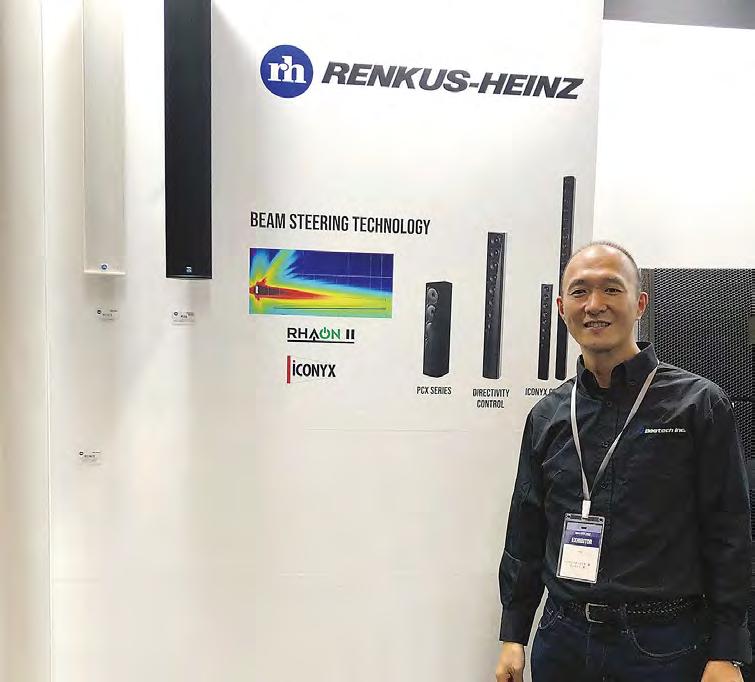
In a move to further strengthen its connections within the Japanese audio market and deliver on its promise to bring the best customer experience possible to every region, Renkus-Heinz has announced a partnership with Japanese distributor Beetech Inc. To kick off the new partnership, Beetech Inc exhibited the manufacturer’s beam-steering technology at Inter BEE 2022 from 16–18 November, where attendees had the opportunity to
NewTek, also part of the Vizrt Group, has announced a partnership with AVA Distribution (AVAD) to broaden NewTek’s presence in Australia and New Zealand. NewTek is said to be experiencing a significant uplift in demand from the pro AV markets as video content
“AVAD has a longstanding reputation in pro AV markets in the region and adding NewTek and NDI streaming solutions offers significant added value to their partners and customers. We are very pleased to add them to our growing partner ecosystem to further position NewTek as a leading and trusted tech vendor in the ANZ region and look forward to our collaboration with AVAD strengthening that position significantly,” said a spokesperson for NewTek.
“AVA Distribution is delighted to be chosen by NewTek to distribute its products in Australia. We are now able to offer our pro AV resellers a


“Renkus-Heinz and Beetech Inc are the perfect pair,” added Takayuki Ozaki, managing director, Beetech Inc. “This partnership will bring the most advanced beam-steering technology to Japan and we can’t wait for our customers to experience the Renkus-Heinz sound solution.”
creation and video consumption continue to grow exponentially.
AVAD is a wholesale distribution company for AV products based in Melbourne and Brisbane and represents a wide range of consumer and professional AV products in the region. As a newly named NewTek distribution partner, AVAD will help deliver NewTek products to
complete range of video production solutions to satisfy the growing demand from corporate, education and government organisations producing professional quality video,” stated Santo Pappalardo, managing director at AVAD.
www.avad.com.au www.newtek.com
The showroom is fully equipped, showcasing 1 SOUND’s Cannon Coaxial Series
subwoofers (MiniSUB5 and Floor Subwoofer)
well as a tower system comprised of 1 SOUND’s cardioid Tower line array columns and the SUB310.
“The audio market in Vietnam is growing fast. Personally, I feel that 1 SOUND is a high-quality product, providing accurate sound and high-end impressive design, suitable to meet demand in the Vietnam market,” said Cuong.
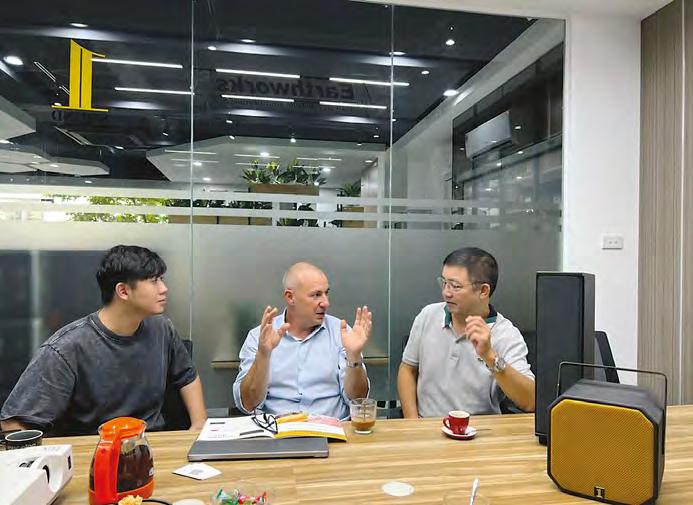
“1 SOUND only introduced the brand internationally in July 2022, and the feedback was immediately great everywhere in the world, in the EU and the Middle East, and most of all in Asia. My good friend Cuong from Sonos Libra Vietnam responded immediately to my call to discuss the partnership. I am honoured and delighted to work with them as a distributor, as I see them as a key player within their nation. Their technical skills are very high and I’m sure we will do a great job establishing the brand in the country,” said Dani. “But this is just the beginning – we will announce new partnerships at the beginning of 2023, so stay tuned.”
www.1-sound.com www.sonoslibra.com
1 SOUND has appointed Sonos Libra Vietnam to be its distributor in the country, placing its products in the distributor’s Hanoi office showroom. Leo Dani, sales executive at 1 SOUND, went to meet and train the team and was welcomed by Nguyen Duc Cuong, director of Sonos Libra Vietnam. with installation as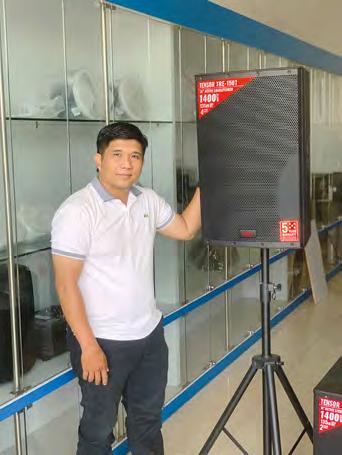
Headstock Group UK-based audio manufacturer HH Electronics has announced the appointment of Koil Corporation as its official distribution partner in South Korea. Koil will work closely with both HH and Generation AV, HH’s appointed sales agency in the region.





“We’re very happy to be embarking on this exciting new partnership with Koil, and look forward to seeing the HH brand continue to grow and thrive within the region,” commented Ian Wright, Headstock’s director of global sales. “As a highly professional, well-respected company with a very talented and experienced team, Koil is the perfect partner for HH in
enthusiastic about the new partnership: “Koil Corporation is thrilled to work with HH Electronics, a company with a long history and clear passion for the audio industry. HH Electronics’ product line-ups will be the optimal choice not only for our sales channels but also for end users.”
James Laney, Headstock CEO, concluded: “We are delighted to be working with Koil. We share a mutual goal to fulfil the potential for HH products in Korea, and look forward to a long and successful partnership.”
HH Electronics, also in partnership with Generation AV, has appointed Fast Technologies to distribute products in Cambodia with DLPro doing the same in Vietnam, evidence of the company’s intention to establish a firm footprint in the region. Wright added: “We’ve only been working with these fine companies for a relatively short time, but they’ve already done incredible work to introduce the HH brand to their respective markets.

www.generationav.net www.hhelectronics.com www.koil.co.kr


FBT has signed a distribution deal with
with a high output of product. It has been a privilege to have seen all their departments and listened to the various models they manufacture,” said Fernando. “We look forward to a long path together and to grow in the Philippines.”

www.fbt.it




Put your equipment on a sound footing with a König & Meyer stand. Robust and durable, it will be your companion for a long time to come. Made in Germany from finest quality materials and according to our high-quality assurance standards. Rely on innovative designs and user-friendly functionality, plus a five-year warranty. www.k-m.de

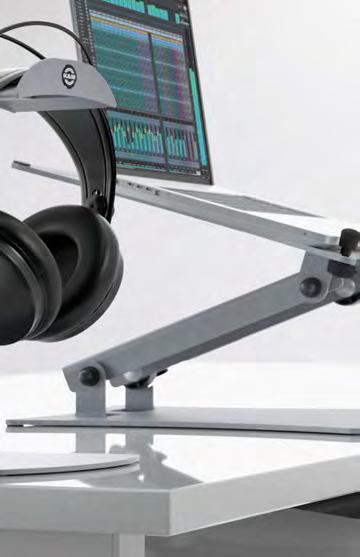
Analog Way has announced the signing of an exclusive distribution agreement in China with Jiangsu R&J Electronics, a professional audio and
promote the production of 8K and XR in the Chinese market to provide the best solution in the broadcast, film and media industries.”
AV United, a pro audio distributor based in Puchong, Selangor, has been appointed as the Malaysian sales partner for d&b audiotechnik. AV United covers live sound, studio, postproduction, location and field recording, broadcast, theatre, corporate and installation applications.

“We are very excited to become a sales partner of d&b audiotechnik and, with the addition of d&b audiotechnik brand to our portfolio, we can continuously elevate the quality of sound systems with innovative audio solutions. We look forward to providing our customers the opportunity to experience and enjoy d&b audio technologies,” said Chin Foo Heng, managing director of AV United.
www.av-united.com www.dbaudio.com
video systems company that specialises in R&D, sales and rental of broadcast equipment for use in live production. The company is also actively involved in live sports, esports, entertainment and recording.
“Analog Way has a powerful processing system that integrates video and audio, allowing users greater flexibility in many scenarios in XR and AR environments,” said Zhu Rong Jun, managing director of Jiangsu R&J Electronics. “Adapting to the current market’s needs, we plan to
“We are delighted to partner with Jiangsu R&J Electronics and we are excited about the opportunities that lie ahead of us in China,” said Guy de Souza, Analog Way’s vice president for Asia.
To further support Jiangsu R&J Electronics, Analog Way will provide technical support to help train its inhouse engineers and set up a service centre to cater to any future servicing requirements.
www.analogway.com

On 19 November 2022 in Phnom Penh, Proel hosted a dealership collaboration event with The Mix of Sharing, which saw artists, rental companies, SI companies and retail shop owners in attendance, with close to 40 people in total. With it being the first time a session of this sort has been organised, Proel felt it was in good hands with local dealer The Mix of Sharing – a well-connected company with access to numerous artists throughout Cambodia. Consultancy company, M-Global, was also in attendance.
The event opened with an introduction to the Proel Group. While most people had heard of Proel, many weren’t aware of the 13 brands working under it until that very day. With Proel covering pro audio, accessories, lights and musical instruments and usually dispatching these in one shipment, the

company wanted attendees to be aware that it could support an entire project.
Furthermore, Proel has its own facility in Italy where its products are manufactured.
Chandan Mahtani, MD at M-Global, said: “I have been active in the Cambodian market for several years and have made contacts with dealers, SIs and artists who have been very supportive of the brands and services we provide. The key here is to give confidence to clients. We explained that we have a good after-sales service backup in the country. Our service centre having stocks of spare parts is a big win. While the Proel brands are perfect for the Cambodian market, what’s most important is the people behind the brands. I would like to thank Sokleang Kry (CEO) and Oeung Chhay (GM) from The Mix of Sharing for helping to create an impact with Proel brands in Cambodia.”
Sokleang Kry, CEO at The Mix of Sharing, concluded: “We have been very impressed with the Proel products. Price versus quality is perfect for Cambodia. We have a showroom and have active displays of the products. Our clients have become repeat buyers and we owe it to the quality and the price point for the success. Working with Proel and M-Global has been a very good experience. Chandan Mahtani keeps us informed of market developments within the region and shares strategies on how to stay ahead.”
Proel has announced a distribution deal with AVE Australia, which will see the two companies collaborating to introduce the Italian-manufactured products into the Australian market. The agreement, which took place in the second quarter of 2022, was again made possible by M-Global.
www.avecorp.com.au www.msproaudio.net www.proelworld.com

QSC has announced the appointment of Hibino Intersound, a subsidiary of Hibino Corporation, as an authorised dealer for the Q-SYS cloudmanageable audio, video and control platform, as well as QSC pro audio



Q-SYS. “With Hibino’s deep knowledge and extensive industry experience, combined with our exceptional partnership, we are confident they will secure new opportunities to create
audio and AV/IT space with solutions that exceed expectations,” said Hiroshi Ikegaki, president and CEO, Hibino Intersound Corporation. “We are thrilled to now offer QSC pro audio and Q-SYS products in Japan and bring a unified software design tool and feature set suitable for companies of any scale. Our aim is to help our customers deploy the best solution to solve their needs, allowing them to focus on their business growth.”
www.qsc.com www.qsys.com


Simone Pratesi, who departed Italian loudspeaker manufacturer B&C after 30 years of service, has joined K-array in the part-time role of CFO. “The people here are so warm and passionate and there is an ambience within K-array that is wonderful to be part of,” said Pratesi of his new role. “During my first 15 years at B&C, I gained valuable experience in sales, purchasing, manufacturing and supply chains. Once B&C had floated on the Italian stock exchange in 2007, however, my role was more specialised in the financial aspects of the business. With my financial experience, I am currently evaluating the most effective ways to raise capital for K-array to enter its next stage of growth.

“When I left my position on the board at B&C, I decided to fulfil other pursuits,” Pratesi explained. “I had decided to make an investment into a company called Reco 3.26
Generation AV is expanding its team with the appointment of Ben Goldsworthy, who has joined as regional sales director and will be based in Singapore. He will manage sales in Japan, Korea, Australia and New Zealand, for all the brands Generation AV represents.

Goldsworthy was previously the assistant director of AV at Wynn Palace Cotai Resort in Macau, where he managed the AV operations, including facilities, installations and events. Prior to his seven years at Wynn, Goldsworthy worked in sales and technical roles across the AV industry, including several years with an AV rental company in Ireland, having started his career as a cinema projectionist.
David McKinney, managing director of Generation AV, commented: “I have known Ben since his time at Wynn and I am excited to be able to welcome him to Generation AV. His passion for everything AV, his attention to detail and his infectious can-do attitude is something that motivates me and the rest of the team. I am really looking forward to Ben meeting our partners and customers across the region.”
of which I am CEO.” The developer specialises in facial, behavioural, emotional and object recognition chains for biometric entrance control. Clientele include the Italian police, security services, stadiums and airports. A phone call from K-array co-founders Massimo Ferrati and Alessandro Tatini in September 2022 was a pivotal moment. “Massimo and Alex wanted to discuss ways in which I could cooperate,” Pratesi continued. “I was curious and welcomed the chance as I realised that I still had a passion for the audio market with so many friends in the business. Because of the musical element, there is a beautiful human spirit in our industry that you take for granted when you are working in it. We decided to work on a trial period basis but, as I’ve known them both for around 35 years, I quickly learnt that they had a strong development plan, which I am helping to deliver for them. K-array has grown
enormously, and I believe that I can help Alex and Massimo to steer an improved financial course. K-scape is a big focus for K-array, and I believe that we will increase the range of products that combine light with sound.”
Pratesi’s vision is currently fixed on the development of K-scape, and he believes the company is about to embark on a major growth curve. “This portfolio of high-value, luxury products is starting to make rapid inroads within the hospitality, corporate and retail sectors,” he said. “In addition to increasing efficiencies, the company will need to produce large volumes in production and that will require capital investment. This growth will be further assisted by developing our in-house skills, taking full control of all manufacturing processes and forming closer relationships with our suppliers.”
www.k-array.com
Goldsworthy commented: “I’m really excited to join the Generation AV team. The brands we represent are truly outstanding and I look forward to getting out into the regional market to create greater awareness and drive growth for our partners. The team and environment that David is developing based here in Singapore is impressive and dynamic. This is certainly a fantastic www.generationav.net

Walters-Storyk Design Group (WSDG) has announced the appointment of Mills Xu to its expanding China representative team. Xu will be joining long-time WSDG China representative, Victor Cañellas, in the role of spearheading new projects in one of the world’s fastest-growing markets for recording studios and audio production facilities.
“We recognise the value of having knowledgeable, local representatives bringing our skills to the attention of an even more diverse client base,” said WSDG COO, Joshua Morris. “Our relationship with Mills made him an obvious choice for this position.”
In addition to co-founding 55TEC in 2017, Xu has built a portfolio of branding and communications projects in China’s
Genelec has appointed Kati Pajukallio as AV business manager as it looks to drive growth in international markets. Pajukallio joined the loudspeaker manufacturer last year, bringing with her a wealth of AV industry experience having previously worked in marketing communications roles for Electrosonic and

As AV business manager, Pajukallio will lead
professional audio industry. “There’s been a rising awareness and appreciation for professional acoustic consultation and facility design within the Chinese market that reflects the rapidly expanding market there,” said WSDG director of business development, Sergio Molho. “A major factor in the success of these projects has been developing an aesthetic and vibe sensibility that appeals to the Chinese pro audio industry,” added WDSG art director, Silvia Molho. “Mills Xu’s wealth of experience in the field of professional architectural acoustics and electrical acoustic systems make him a valuable asset to our global team.”
www.wsdg.com
For over 15 years, GLM loudspeaker manager software has enabled sound engineers across the globe to utilise our Smart Active Monitors and dial in precise mixes that translate flawlessly to other rooms and playback systems. GLM automatically adjusts your monitor’s settings to counteract unwanted room-acoustic effects, ensuring that you hear the sonic truth, no matter where you choose to set up your system.
With the introduction of our powerful new GRADE report, GLM 4.2 offers you the unique possibility to completely understand and transform your entire listening environment – creating detailed readouts in a matter of minutes.
It’s time to mix faster and better.
Get to know GLM, visit www.genelec.com/glm
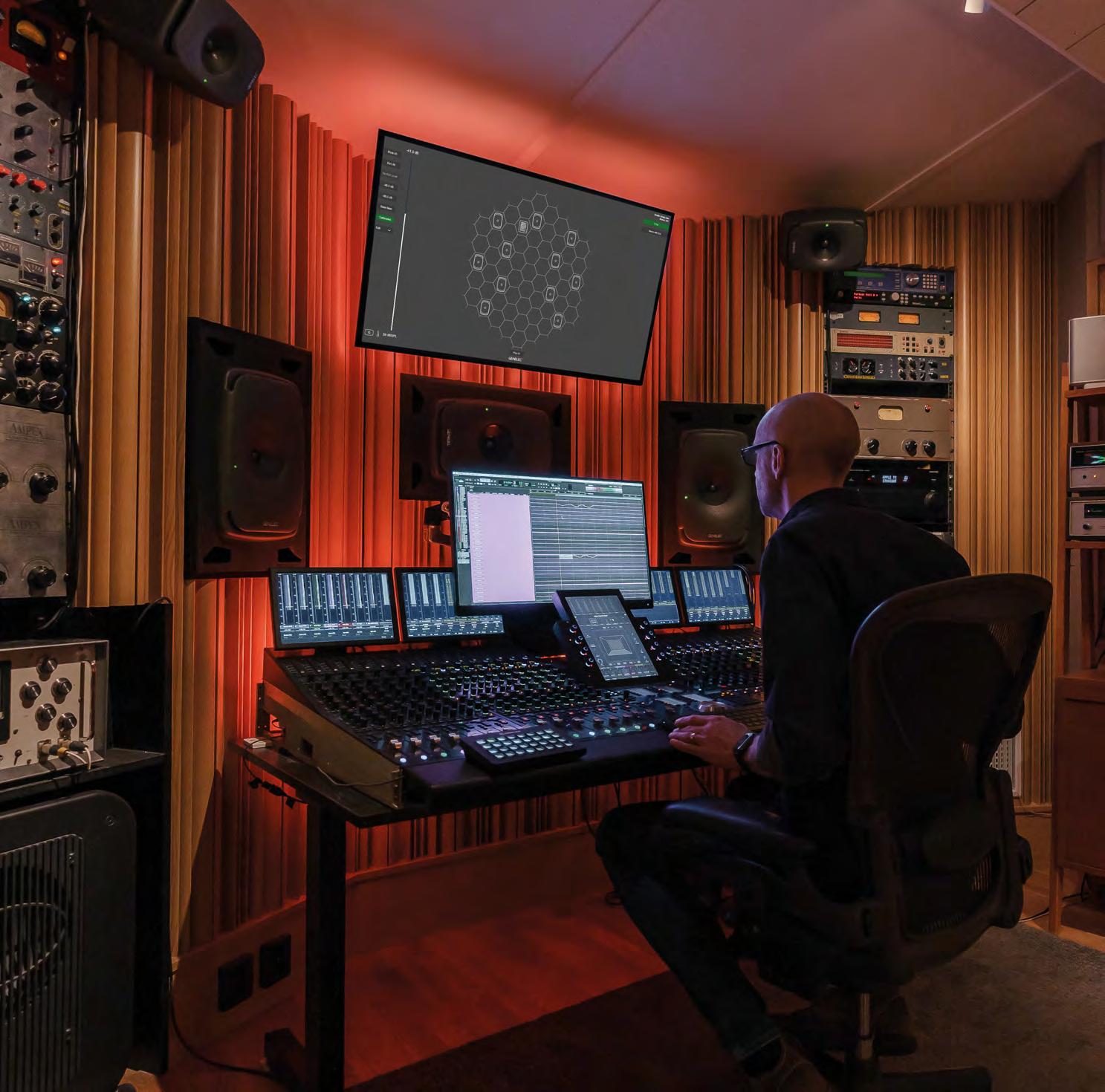
Visionary has announced that Jack Ericson will take over as director of Australia and New Zealand. In this role, he will establish and build customer relationships and support business development in the rapidly growing region. Ericson has numerous years of success in sales, operations and business development in the professional AV industry. Based in Canberra, Australia, he has worked with Diversified, NEC Australia and Crestron Electronics, and understands the unique challenges and priorities for integrators in Australia and New Zealand. Ericson will manage Visionary’s key accounts in the region

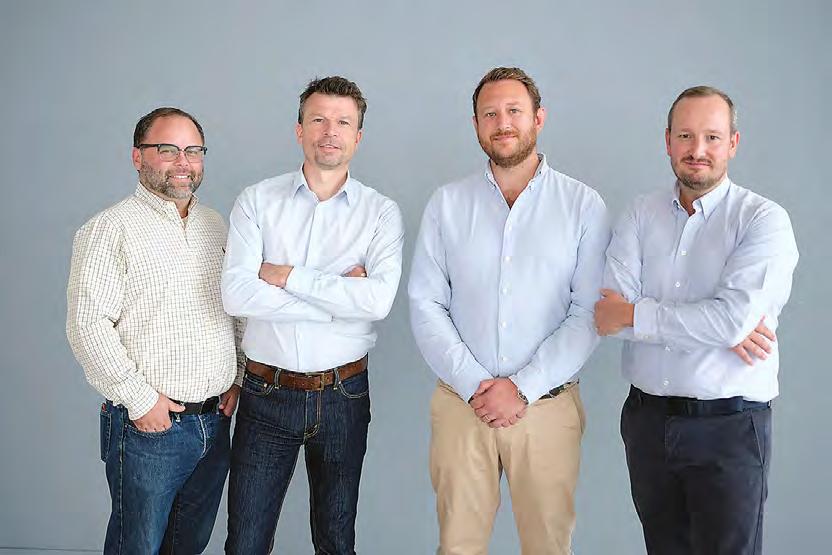
L-Acoustics has unveiled the creation of a new sales organisation to help drive its ambitious vision that will be focused on sales strategy, business development and building territorial sales channels. Under the general management of L-Acoustics CEO Laurent Vaissié, the new team will be split across three divisions: Sales and Sales Operations, Business Development and Strategy
Sales Coordination and Customer Service teams. In the new role, he will drive the overall productivity and effectiveness of the territory sales organisation and lead sales growth. He is supported by David Cooper, director of sales APAC, and BJ Shaver, director of sales Americas,
while expanding its customer base with new opportunities.
“I’m energised to join Visionary. They are at the forefront of AV-over-IP development and constantly looking to expand and improve solutions that accelerate ultra-lowlatency distribution for the professional AV industry,” said Ericson. “The region’s focus on audiovisual technology has never been stronger and it’s an exciting time for Visionary to solve many of the unique challenges that customers are facing. In my new role, I look forward to building lasting relationships with our customers in the region.”
“We are focused on growing business relationships and supporting global end user
customers, consultants and integrators with innovative AV-over-IP distribution solutions,” said Scott Freshman, chief operations officer for Visionary. “Since our inception in 1995, we have built a trusted and reliable professional AV brand. We are excited to strengthen our brand in Australia and New Zealand with feature-rich solutions, personable customer and technical support, and a continued investment in innovation.”
Visionary said that its latest hire is the next strategic step in expanding business development to support the global AV industry.
www.vsicam.com
Leadership. The new organisation emerges following the retirement of executive director of business development Jochen Frohn who, for the last 14 years, set the vision for the global sales team.
Heading up the Sales and Sales Operations division, Jacob Barfoed has been promoted to global director of sales and sales operations. Having joined L-Acoustics earlier this year to head the company’s EMEA sales, Barfoed now takes responsibility for leading the Territorial Sales Teams, as well as the
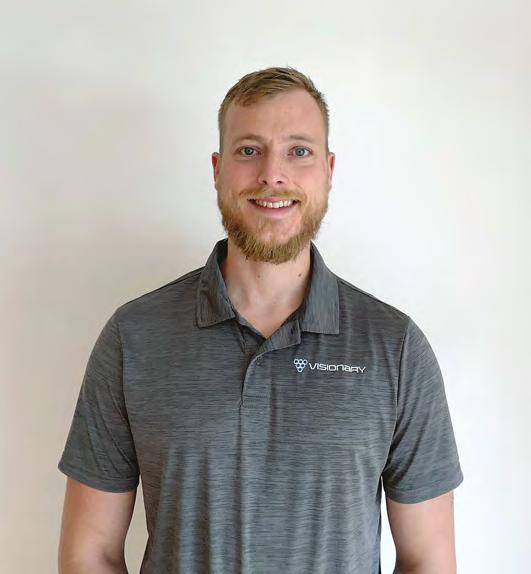
Also reporting to Barfoed, Nick Fichte has been promoted to director of sales for L-Acoustics Creations. Newly integrated into the global sales division, Fichte will spearhead the global sales strategy and development of the growing Creations network of certified integrators, driving growth in the residential, marine and architectural markets. Within the Sales and Sales Operations division, Oksana Mudrak moves into the role of global head of sales coordination.
www.l-acoustics.com
of creative approaches to performance and, in particular, the uses of immersive audio. At d&b audiotechnik, Graefe will work with the Soundscape Enablement Team, headed by Ralf Zuleeg, to provide support on global Soundscape deployments, create market development programmes and integrate field requirements in product development strategies.
“I am thrilled to be a part of such a dynamic company, whose work with Soundscape has been game-changing for the sound industry,” commented Graefe. “In my role as a senior member of the team, I will work to expand Soundscape’s reach, which in turn will provide artists, engineers and designers with a scalable immersive audio platform that provides unparalleled
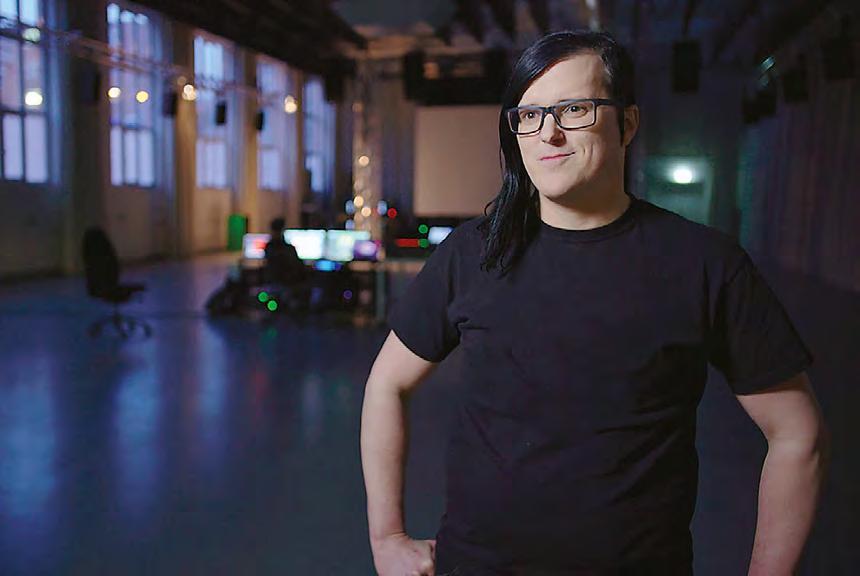
creative opportunities. For me, the biggest benefit of using immersive sound systems is that artists can present their music in the way they want the listener to hear it, expanding the possibilities for sound in creating transformational experiences and as a value to our customers.”
“We are delighted to welcome Serge to d&b. Soundscape’s user base and technology continue to advance, and
In other news, d&b audiotechnik’s head of research and development, Jan Biermann, has been appointed to the board of directors of the Open Control Architecture (OCA) Alliance, the non-profit organisation formed to promote and support the AES70 standard for professional applications. “I am very excited for the opportunity to join the OCA board of directors and reaffirm d&b’s commitment to the O CA and the open public standard for media network control,” said Biermann.
After eight years at the helm, Michael Broadbent will step down as APAC managing director and take up the newly created APAC chairman role, working full time to the end of 2022 and then part time thereafter. Dan Fletcher, general manager of Midwich’s subsidiary, Blonde Robot, will step up as APAC MD.
is in good hands with Dan Fletcher and I look forward to continuing to work with the team and our customers and vendors as APAC chairman,” said Broadbent. Fletcher has worked at Blonde Robot for the past 10 years and is wellestablished as the general manager of Blonde Robot. “I am excited about

VITEC has announced the appointment of Kevin Dowd to the role of regional business development director, APAC. Based in Hong Kong and fluent in Mandarin, French and Japanese, Dowd will use his extensive experience across a range of vertical markets to help drive VITEC’s growth.

“As VITEC continues its growth in APAC, we are pleased to welcome Kevin Dowd to the team,” said Jamie Hind, regional director, APAC at VITEC. “It’s an exciting time for us in the region and Kevin brings a huge amount of experience and knowledge with him – we are looking forward to seeing him help drive the long-term success of VITEC across Asia.”
“After more than 30 years in AV, I thought it was time to slow down and start the journey to retirement. The last eight years of being part of Midwich has been very special and I am proud of what we have been able to achieve and build through dynamic and at times challenging periods. I know the business
the opportunity to continue to build on the excellent work that Michael and the Midwich team have achieved throughout the APAC region and I look forward to working closer with the wider AV industry,” concluded Fletcher.

www.midwich.com.au
Dowd has worked for international technology companies including MultiDyne, RGB Networks, Haivision and Polycom. Having lived in Shanghai and Hong Kong since 1995, Dowd has established a strong network of some of the largest broadcasters, government agencies, financial institutions and telecommunications service providers in APAC, and at the highest levels of local

and central governments in China and throughout Asia. He is also well-versed on the political economy of China, having held positions with the Shanghai Institute of Economic Development and Jiaotong University in Shanghai.
www.vitec.com


experience. Not only is the entire rigging system more advanced and infinitely simplified, but Martin Audio’s DISPLAY software experience is evidently smoother and more user-friendly than many of the other systems out there.
“Moreover, the WPC system is supremely compact and lightweight, making it an absolute dream to work with from a logistical point of view. Setting up the system is extremely simple and quick and, in terms of the sheer performance, the system offers nuanced sound reproduction across the frequency spectrum without compromising on power or fidelity. This enables our team to be ready at all times to rock any kind of event right out of the box, with very minimal adjustments required.”
Production Services, has recently added a WPC line array system from Martin Audio. The rental production company has steadily built a reputation by providing comprehensive technical reinforcement for live events across the state of Maharashtra for many years, with its portfolio of work featuring some of the most prominent Bollywood concerts, award ceremonies, political rallies and corporate functions.
“We’d been wanting to expand our inventory for quite some time now, and when I found the opportunity to experience the latest WPC line array system, we knew right then that this system would be the perfect addition to our existing inventory. We were extremely impressed with quality of sound and SPL that the system is capable of delivering, despite its compact and agile form factor. This experience really helped us double-down on our decision
Established in 1980 as Stage Lighting Inoue, SLI is a stalwart in the pro audio and event production market on Kyushu, Japan’s third-largest island. With decades of experience providing sound and lighting services for concerts, ceremonial events and commissioned projects in auditorium halls and hotels, staying up to date with the latest technology is said to be a top priority for the company, as is regular training of engineers and technicians in its 70-employee team.
“I have had many opportunities to hear L-Acoustics systems on recent events at venues like the Fukuoka International Centre and the Marine Messe Fukuoka,” said Akito Kato, sound department manager at SLI.
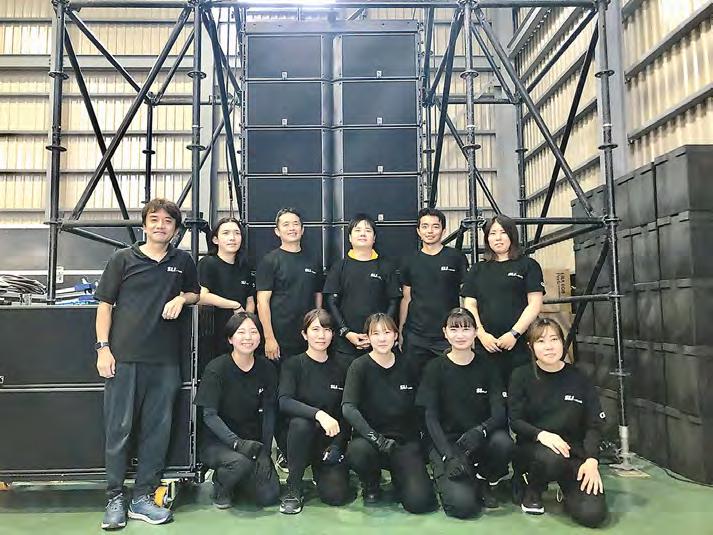
of Global Production Services.
With the first phase of the total system procurement, Global Production Services has acquired eight units of the WPC line array modules, along with four units of SX218 matching pair subwoofers and three units of the iK42 power amplifier. Global Production Services wasted no time in deploying its newly acquired WPC system on the field, as it commissioned the new system for the 37th Foundation Day Celebrations of Kotak
Following its positive on-field experience with deploying its newly acquired Martin Audio WPC system, Ayare affirmed that Global Production Services is poised to acquire a similar configuration system by March this year. This means that by April, the company will have a total of 16 units of the WPC line array modules, eight units of the SX218 subwoofers and six units of the iK42 power amplifiers, thereby allowing it to deploy the expanded WPC system for mid-scale music concerts and similar premium live events.
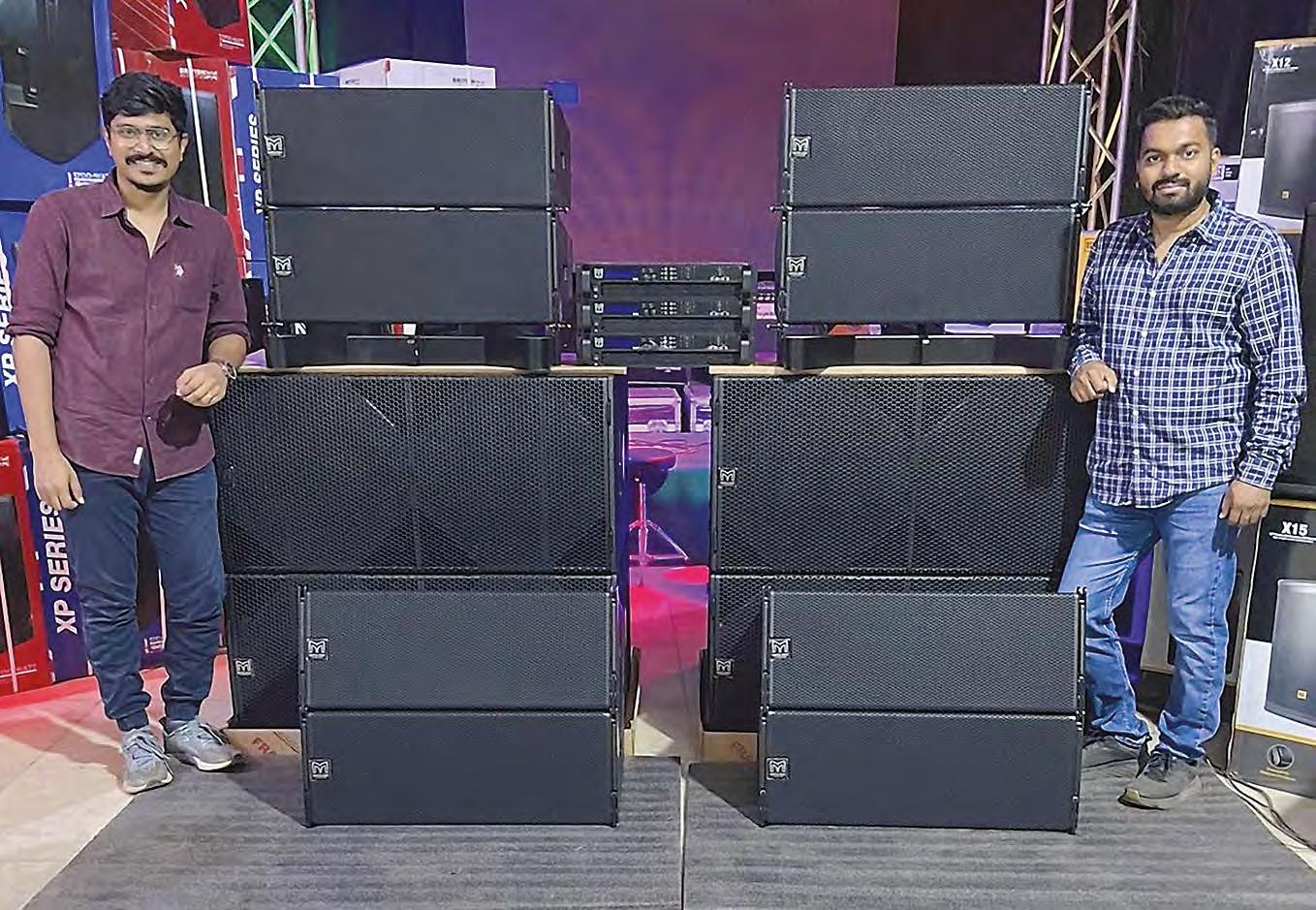
Ayare said: “We’ve been blessed to have one of the best teams of technicians and engineers, and now, with the inclusion of our new Martin Audio WPC system, we’ve equipped ourselves with the capacity to really flaunt our technical prowess. There’s an evident buzz in the market now about the WPC system, and we have received several event inquiries requesting the WPC system. These events are not just restricted to one type, but
which will allow SLI to expand its business by taking on large-scale projects such as music festivals and concerts. Official training was provided by Bestec Audio to ensure SLI engineers are trained to create system designs using Soundvision 3D modelling software and are versed in the latest technology for installation and calibration of systems.
“We have seen L-Acoustics K1 and K2 deployed at a variety of mid-sized productions in the past decade or so, and these high-
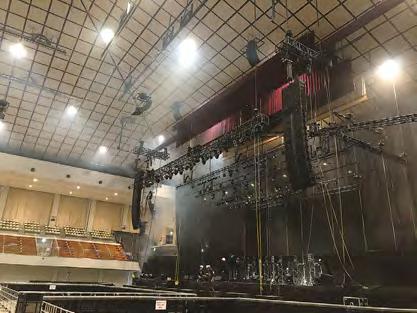

powered systems were always well-reviewed by the clients,” said Kato.
“I am thrilled to own the L-Acoustics K2 and receive comprehensive training for the team. It will open up more doors and position SLI into markets that we’ve never been in before. I look forward to reinvigorating SLI with fresh, new projects now,” concluded Kato.
www.l-acoustics.com www.sli.co.jp
“Its pristine signature sound is instantly recognisable every time.”


A new temporary art gallery has been created in Hong Kong’s Xiqu Centre, honouring the works of Claude Monet, the iconic impressionist painter. Video mapping, immersive experience and digital art creative studio Dirty Monitor and ChillHoYeah Hong Kong, a new company with a passion for experimentalism, have collaborated for the project entitled En Voyage with Claude Monet, which will run for three months onsite based in the West Kowloon District.
Benjamin Bauwens, acting as head of the project, the first one under Dirty Monitor’s D-Mines division, enthused: “This is a hugely exciting idea set to revolutionise the way art can be appreciated – not just by traditional art lovers, but by new, different and diverse audiences who may not necessarily ever think of visiting a traditional art gallery.”
En Voyage with Claude Monet takes elements from 200 of the painter’s ephemeral and multi-layered masterworks. Elements within these paintings are digitally blended into one large 360° digital canvas in a projected show that runs for 36 minutes. It is accompanied by a specially composed soundtrack commissioned by Dirty Monitor and composed, produced and performed by Echo Collective.
The screen measures 5.7m x 94m (HxW), arranged in a large rectangular format. The screen material is an SB Blackout PVC sourced after much research and trialling from fabric specialist Showtex. It is stretched taught across custom frames also supplied by Showtex.
The projections are achieved using 14 Panasonic PT-RCQ10 machines which support uncompressed 4K signal input via HDMI or DIGITAL LINK terminals, streamlining the 4K playback. These are all rigged on a central truss in the roof of the venue for optimal

For supporting projections across the entire gallery floor, six of Robe’s ProMotion digital moving head effects and video projectors were selected. A 7:1 surround audio installation was installed by local company, Shalom AV Technology. Before entering the main projection area, people pass through an Info Room where
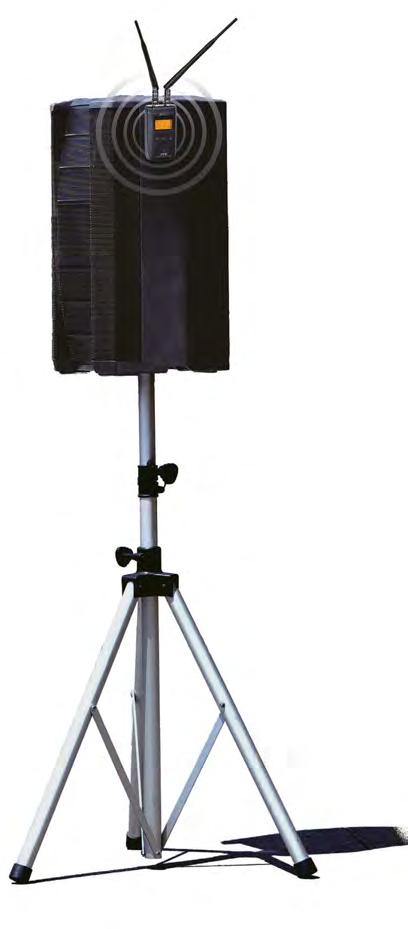
about Monet and his travels, and, at the end, there is another area where guests can take a 10-minute VR trip with the artist.


The main technical challenge was in rendering the images in the very highest-quality detail required to bring the large-scale projections alive, and the team felt immense pressure in representing such a well-known artist:
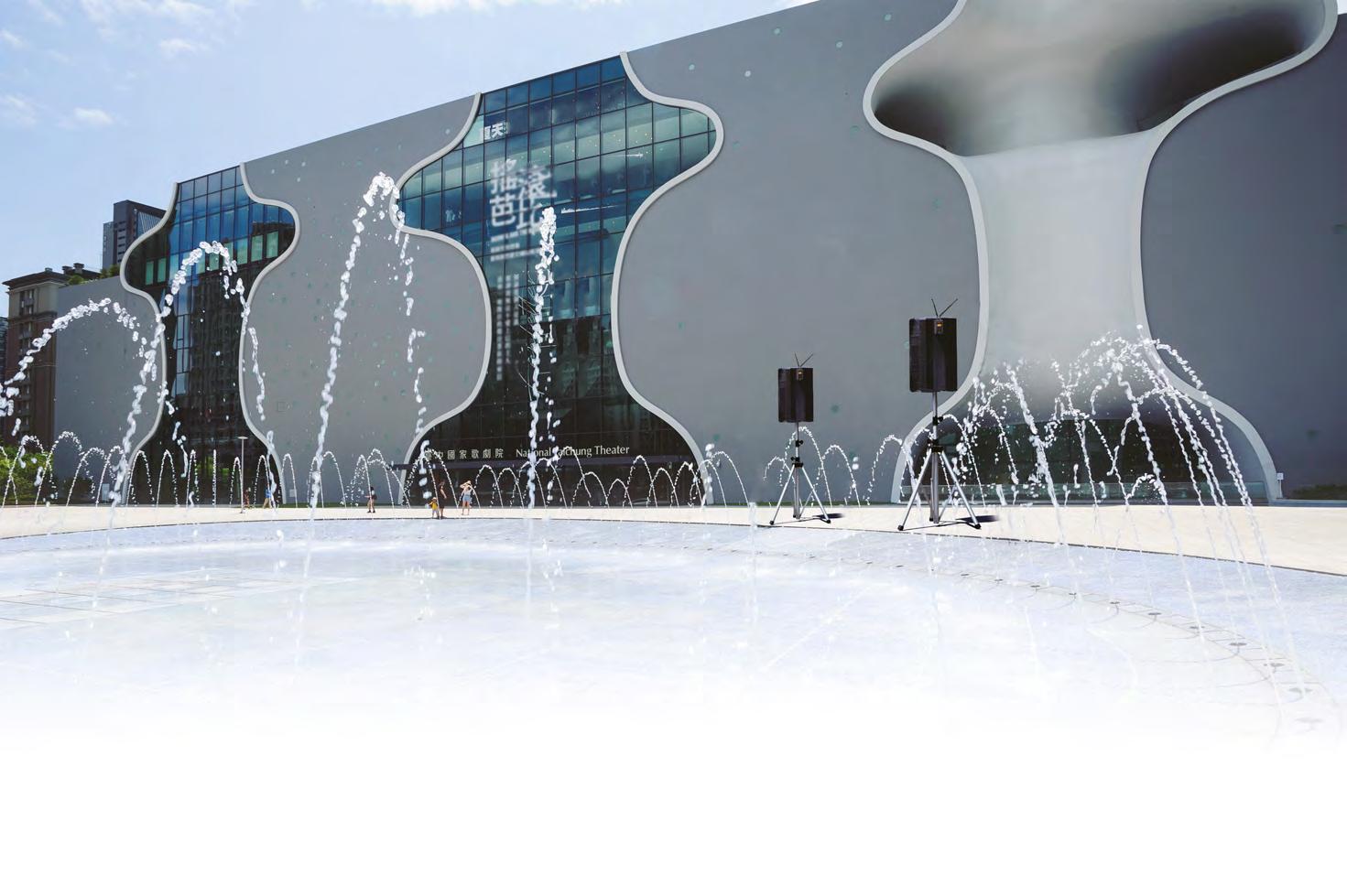
“Throughout Monet’s life and travels, he was accompanied by his loved ones, so wives, family and friends are all part of his work and this was the foundation for our main narrative theme for this immersive show,” said creative lead, Audrey Ballez. “Visually, the setting is limitless. It is like facing the panoramic view that Monet himself saw while painting those landscapes. The hope is that, after visiting the immersive experience, people will want to know more about this amazing painter and character.”
The project took around six months of hard work from 15 visual artists. After its debut in Hong Kong, the gallery will move onto more venues in Southeast Asia, and then to the rest of the world.

 CHINA
CHINA
A signature landmark newly established by the China government in 2021, Nantong Grand Theatre was created in an effort to boost art and cultural development in Nantong, Jiangsu Province. Situated in the city centre, the theatre was designed by the late master architect Paul Andreu who was also the chief architect of the National Centre for the Performing Arts in China. The venue has been outfitted with a wide variety of ETC equipment that includes controls, lighting fixtures, dimmers and a networking system.
The theatre spans 111,000m 2 and houses five main venues, including an opera house, concert hall, drama hall, children’s theatre and a multipurpose hall. Two sets of compact GIO @5 consoles with 4K outputs are installed in the multipurpose function hall to provide a reliable controlling experience for different events and occasions. The venue owner also picked Ion XE 20s with 2K outputs for the concert hall and the children’s theatre. All ETC consoles run on the same Eos system so users can enjoy an identical and seamless operating experience no matter which venue they are controlling.
“Our team was impressed by the powerful magic sheet functionality because Eos makes programming, control and playback much easier than before,” the owner commented.
Source Four LED Series 2 Lustr with CYC adapters equip the Opera House, lighting up the stage and creating moodenhancing effects. Additional Source Four LED luminaires were selected for the concert hall, drama hall and other venues in the theatre. Thanks to the addition of a lime-green LED emitter in ETC’s x7 Color System, it also broadens the range of colour rendering in the red and blue ends of the colour spectrum, so that brighter and livelier colours can reportedly be created for professional opera performances. The venue owner
was said to be amazed by the nuance and vivid colours attributed to the unique LED array.


To provide stable and reliable dimming control for the renowned art and cultural hub, Sensor3 Power Control system with ThruPower modules were installed. This system is able to manage the power of all types of lighting fixtures installed, including incandescent, moving light, LED circuits, switched loads, motor loads and constant circuits.

www.etcconnect.com
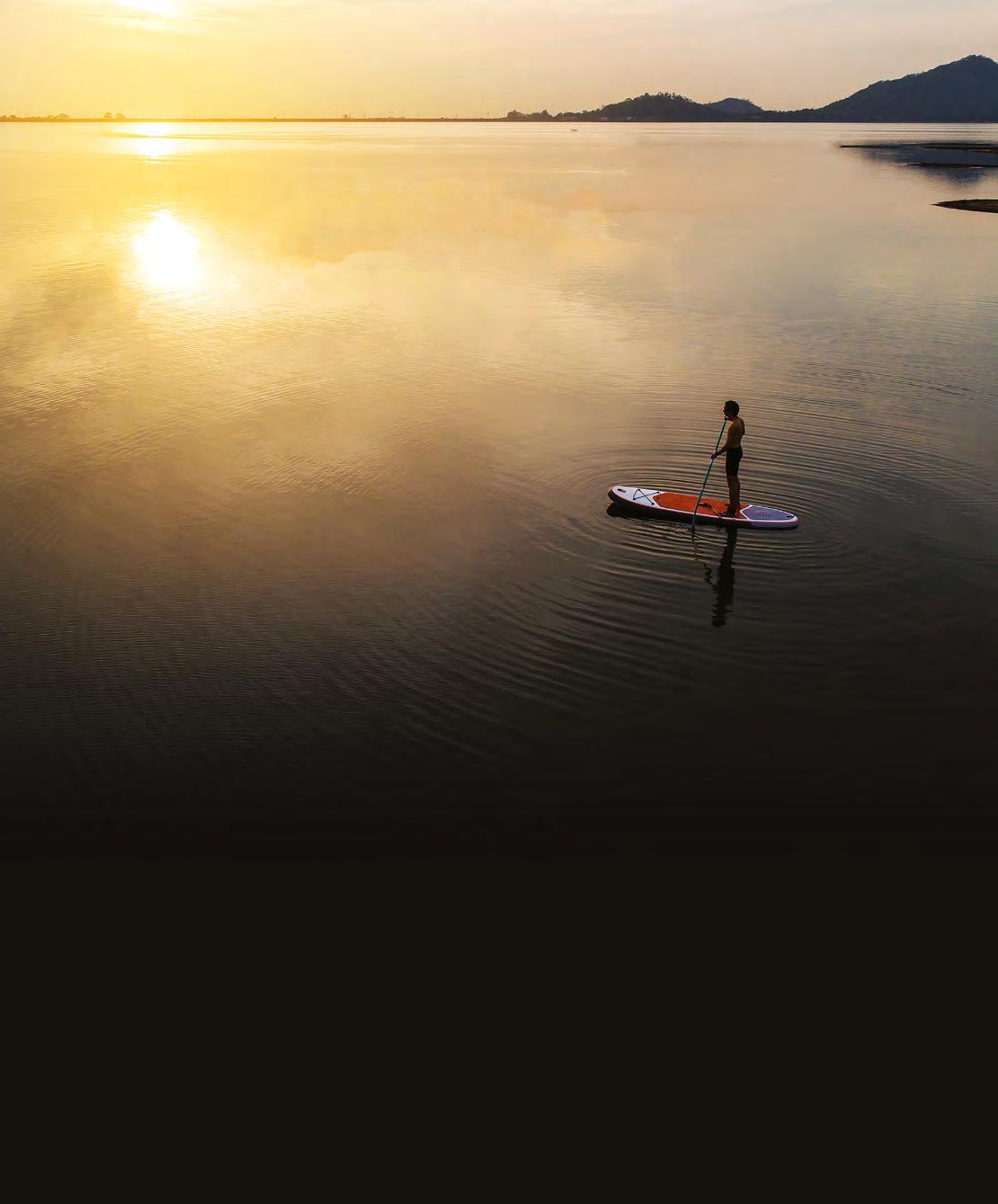
Challenging environments demand greater control. Pushing the limits of reliable performance, our complete video wall control solutions manage control room applications at any size, whether monitoring traffic, process control or security surveillance.
We make life easier for system integrators whilst enabling control room operators to focus on their core objectives.



The Enchanted Garden 2022 event ran from 25 November–21 December in Roma Street Parkland, featuring nearly 8,000m2 of custom-made lighting, audio, special effects, digital light sculptures, lasers, projections and holograms in the heart of Brisbane. An all-new Luna Light Journey experience, the organiser City Parklands Services partnered with Laservision once again to bring the park to life – including a celebration of the local Eastern Water Dragons in Guardians of the Park.
“After the success of last year’s presentation, we knew we needed to upthe-ante and really deliver more for the community. In partnership with the team at City Parklands Services, we made this year’s journey even more exciting with more magical holograms, hidden totems to discover and a story that inspires people with the natural beauty of the park. Guardians of the Park celebrates the local Eastern Water Dragons that transform into their true magical selves, taking on the colours and characteristics of the park’s natural elements: water, trees, rocks and
www.laservision.com.au
The third floor of Taipei’s Nan Shan Plaza – the second tallest skyscraper in Taipei after Taipei 101 – has been made into a vast and open exhibition space. With ceilings that are 8.5m high, the venue occupies a total of 56m2 but doesn’t feature beams or support columns, creating a challenge for any sound design proposal.
The space required a sound system that was compact and stable. Following talks with audio installation company, Imagepro System Technology Corp, organisers decided Powersoft met the needs of the project.
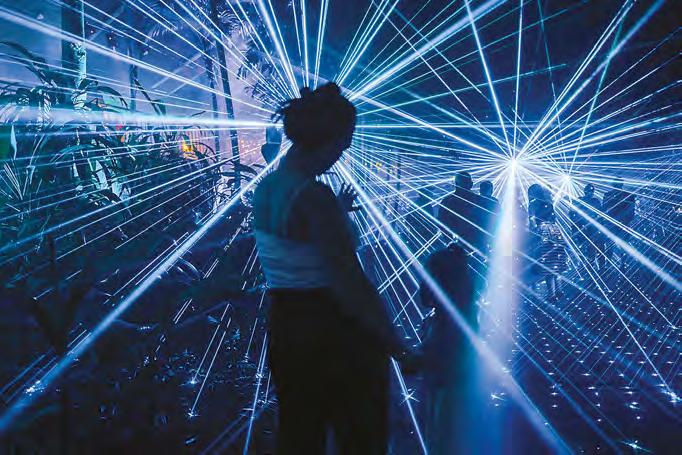
the high quality of the Powersoft products and the excellent sound performance”.
The inauguration of the new administrative headquarters for the Phnom Penh Municipal Police Commissariat took place recently in the Cambodian capital. The deputy prime minister, senators and members of the National Assembly were all present to see the culmination of a three-year project to deliver the 10-storey construction, which was completed at a cost of US$14 million. Comprising multiple rooms across 1,850m2, the facility required high-quality audio reinforcement for its many meeting and conference spaces, which include designated international meeting and conference rooms.
After careful consideration, experienced AV consultant and integrator Sounin Development GP of Phnom Penh was engaged to design, supply and install the system. After consultation with distribution partner Fast Technologies, AV engineer Sounin Chann chose a variety of HH Electronics loudspeakers to meet the comprehensive brief.
HH TNi-W6 6.5-inch passive surface-mount wall speakers featured prominently, with 32
units installed across four rooms on level 8, with a further eight each for the International Meeting and Conference Rooms respectively on levels 9 and 10. A total of 100 8-inch HH TNi-W8 surface-mount wall speakers covered rooms on five floors (20 per floor) with the scheme completed by the deployment of 100 HH TNi-C8 8-inch ceiling speakers across a further five floors (20 per floor).

Ian Wright, global sales director for HH Electronics, was said to be impressed: “Sounin Development supported by Fast Technologies completed great work for this large and very important project. We’re delighted and proud of the fact that almost 250 HH loudspeakers were deployed at what is a very prestigious new site. The installation demonstrates the extent to which our surface-mount and ceiling speaker ranges are a go-to product for schemes that require easy to install, versatile, powerful, professional-level reinforcement at a very competitive cost.”
www.hhelectronics.com
Working hand-in-hand with Imagepro’s Yung-Chin Hsu and the Plaza’s project leader Wen-Shan Tseng, Victor Shih of Powersoft’s distributor in Taiwan, Seapower Technology, planned and designed a discreet sound system in accordance with the requirements of the space, built around the efficiency of three Powersoft amplifiers, controlled by Powersoft’s ArmoníaPlus software.
In just two months, the team had created an audio environment with in-depth but simple control that was said to have delighted the customer. The event management team within the Taipei Nan Shan Plaza are “very happy with

The main PA serving the exhibition hall is comprised of a left and right pair of Peavey VR-112 line arrays featuring four cabinets per side, each flown with a VR-218F sub. This array was matched with a single Danteenabled Powersoft X8 amplification system. As Imagepro’s Hsu explained: “We considered only the Powersoft X8 for this position, as the top amplifier in the world. Providing eight channels of up to 41,600W output power under the impedance of 2Ω, this is amazing efficiency that only Powersoft can reach so easily.”
Transforming the multifunctional space from an art exhibition hall into an arena, a further 16 Community DP8 pendant speakers are ceiling-flown. Powered by a Powersoft Quattrocanali 2404 DSP+D four-channel matrix amplifier, this supporting audio system can be mixed in with the main system for press conferences and larger events. With Armonía, the ability to tailor the sound and manage the system is possible from a remote, decentralised location.
www.powersoft.com
“Having produced and delivered the multiple award-winning show at Roma Street Parkland in 2021, we challenged ourselves this year to create a truly unique experience and immersive offering for the community.
it is a true testament to the success of our Luna Light Journey shows,” commented Laservision owner, Shannon Brooks.
When I mixed an orchestra, I felt like each instrument on stage was naturally reproduced. WPC is easy to mix for any genre of music, is perfectly sized to take anywhere and always delivers clear and consistent sound.

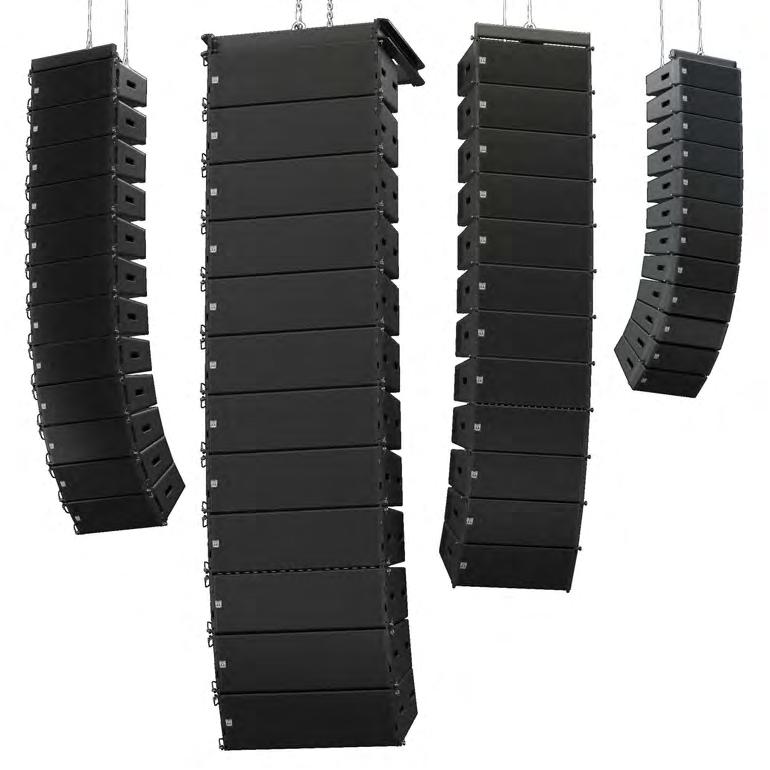



Baird. The two-storey location features high ceilings, timber flooring and floor-toceiling windows inspired by the colonial heritage precinct across the street from

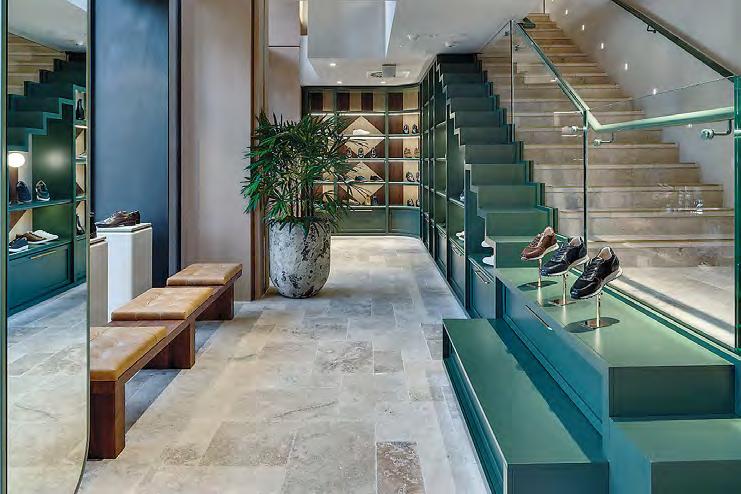
Baird and her team, the C Series from Renkus-Heinz was specified and installed. Seven Renkus-Heinz CX41 speakers were strategically distributed around the store.


Rock in Japan, the country’s largest festival, has made a return after a two-year Covid-related hiatus. This year, however, the five-day celebration was reborn as an urbanstyle festival in a new location, having moved to Soga Sports Park in coastal Chiba, rather than Hitachinaka.

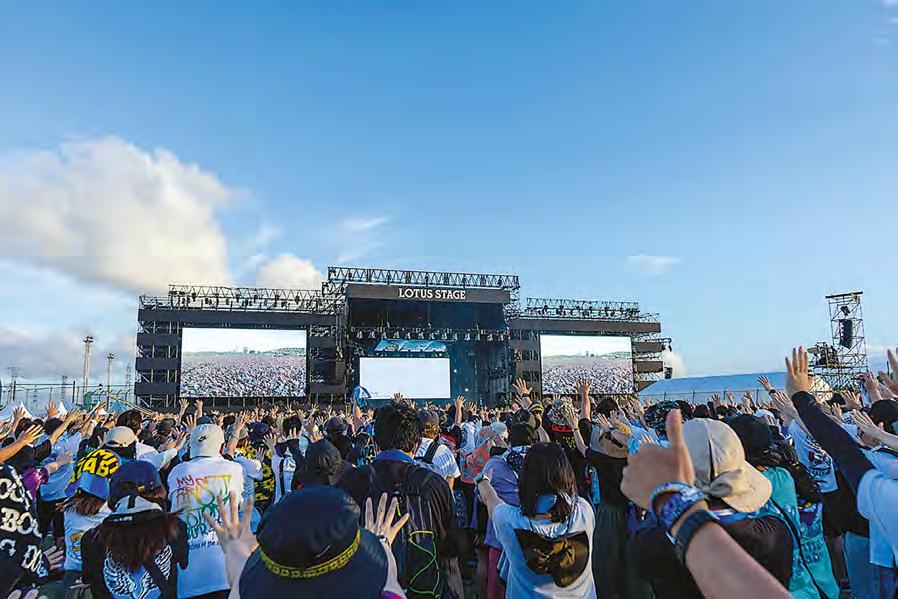
The change of location had proved a concern for those managing and promoting the shows, with Soga Sports Park near residences and in a densely populated shopping area, which isn’t ideal for the nature of a rock festival. The potential for noise pollution issues weighed heavily on the production team.
“We had to adopt a completely different approach,” stated Shuzo Fujii, president of sound production company, MSI Japan. “Up until now, we have always focused on how far we could throw our MLA loudspeaker array, but this time we had to think in an opposite direction.”






With Tomoya Shitakubo – who also acted as system tech – in charge of the design, MSI devised a unique solution which had not been adopted previously, importing several delay towers and developing a







promoter is our client and he has specified MLA for the past 10 years,” stated Shuzo Fujii, who also acted as chief engineer for the event. “Everybody had faith that MLA would be able to overcome this difficult problem.”




The two main stages were both equipped
level, starting at the FOH mix position, and sufficient power was distributed across the entire venue, meeting the required SPL and
The Street Theatre in Canberra has invested in new lighting fixtures from Italian brand Prolights. The theatre commissions, develops, produces and presents a wide variety of work. Having hired an LED lighting rig for a three-month concert series taking place in early 2022, the venue made the decision to bite the bullet and invest in a solution of its own. The result is the purchase of several VersaPar fixtures that allow the team to be able to respond to key moments in a performance, as well as easily colour mix and adjust focus.
As a theatre producer, The Street Theatre also has a commitment to sustainability by working more efficiently and cost effectively. “Being able to replace a large portion of our


halogen lighting inventory with quality LED products was a driving factor in this area,” explained technical manager, James Tighe. “We’ve been able to remove around 30kW of power from our standard rig as we move towards a hybrid lighting model. The feature that ultimately placed the VersaPar over other LED PAR products was the zoom function,” he said. “We needed a precise lighting fixture that our designers could use across a range of applications. The dimming curve on the VersaPar is also a lot smoother than other products we tested, which is a great feature to have in theatrical lighting.”
Prior to purchase, Tighe received a demo unit from Prolight’s Australian distributor, Show
The village of Modhera in Gujarat has been hailed as the country’s first village with round-the-clock solar power, delivering sustainable energy to more than 1,300 homes and government buildings. To celebrate, a 3D projection show run entirely on solar power at the village’s Sun Temple, was set up to relay village history dating back to 1617.

rendering, with 2D and 3D projection mapping workflows. Pixera’s integrated VIOSO auto-calibration technology offers a variety of calibration modes depending on the surface: flat or curved screens, 3D models and irregular surfaces such as rocks or, in this instance, an entire building facade.
Thai indie-pop band Safeplanet launched their new album recently, entitled Cap, Capo, Cigarettes and Beer, aided by the Safeplanet Experience – a Bangkok-based launch party that aimed to immerse and further connect the band with their fanbase.

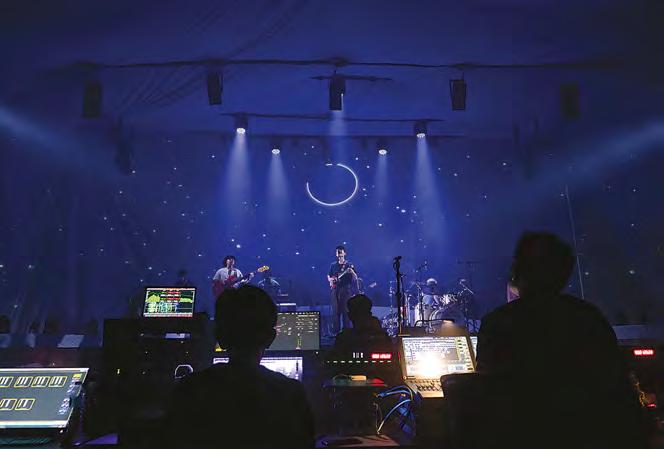
For the sound system, Safeplanet’s management called on Sonos Libra. The distributor focused on utilising the Adamson Fletcher Machine to provide localisation of key channels on the stage, as well as to provide a much larger sweet spot than in a traditional stereo system. Other equipment included five Adamson IS series loudspeakers, four E219 subwoofers, an E Rack and an Allen & Heath DX32 with Prime Output Cards.
Technology, and then went on to order another eight. “The lights have been a fantastic addition to our inventory, and it’s been great to see the product being taken up so readily by our designers,” added Tighe. “They’ve been a strong addition to our lighting designs, and it’s been great to see how creative our lighting team can get with just a little added versatility.”
www.prolights.it
This system assisted the band’s existing Allen & Heath dLive DM0 and GX4816.
Sonos Libra had the opportunity to test the
“The brief we received from the client, Tourism Corporation of Gujarat, was to produce a multimedia 3D projection mapping show about the past, present and future of Modhera’s Sun Temple,” explained Pratik Wadhwa, CEO, Modern Stage Services (Projects). “The structure of the temple is completely unique and working on a heritage site comes with many of its own challenges, so we needed to ensure the best kit was chosen for the project.”
Five Christie D20WU-HS projectors were installed with weatherproof, outdoor architectural lights from Harman Pro to illuminate the temple’s façade and create a mirror effect in the water in front of the monument. All content was delivered using
“The pre-visualisation feature helps us deliver our ideas to the clients,” explained Wadhwa of his choice of software. “With this tool, clients are able to fully envisage the end result before we start working onsite, which is an invaluable tool for us.”
The team at Modern Stage Services overcame many challenges and restrictions while working on the heritage monument.
“The Sun Temple was built hundreds of years ago so of course there were no AutoCAD drawings to work with,” he continued. “That’s why we needed the very best software for compositing, mapping and media processing to help us realise the client’s brief. We are so pleased with how the Pixera software handled the intricacies of this project in such a userfriendly way.”
system prior to the event with the band’s FOH engineer, Nonpawit “Te” Wijitruttagan, who was keen to learn new ways of experiencing sound. Safeplanet were said to be extremely pleased with the outcome, in which several hardcore fans commented that it was “the best sounding show they had heard to date”.
Alfonso Martín, CEO of Sonos Libra, said: “The future of audio is certainly in immersive sound,
especially for these kinds of events where the artist wants to make a big impression and really connect to their fan base. The overall outcome was overwhelmingly positive, especially for the first deployment of the system and we are looking forward to the next event coming soon.”
www.adamsonsystems.com www.sonoslibra.com
Tucked in the lush environment of CapitaSpring’s Green Oasis with sky-high city views, Sol & Luna is a Latin European Bistro that serves French, Italian, Portuguese and Spanish all-day fare. In addition to an interior restaurant area, the outdoor patio can be used as a garden destination for weddings, corporate and social events.
Executive Group was contracted to provide the audio solution for Sol & Luna and, in doing so, had no hesitation proposing an ElectroVoice background music system.
The 100V operation is powered by a single Dynacord C3600 amplifier, with the restaurant served by four EV C8.2 ceiling speakers and two C10.1 subwoofers. Although the restaurant normally streams a Spotify music source, audio mixing is also performed on a Yamaha MG10XU console. The outdoor area has adopted an EV Evolve 50 portable plug-and-play system for events.
Higher up the Singaporean tower on the 51st level, 1-Arden is noted for its greenery and skyline views of Marina Bay. Three zones are also distinguished from one another by their audio reinforcement. Powered by a
Dynacord C3600 FDi amplifier, the restaurant area is served by nine EV C8.2 ceiling speakers, while the bar and lounge area is catered for by three EV C8.2 speakers and a C10.1 subwoofer for hosting DJs from the outdoor area furnished with another EV Evolve 50 system during weekend evenings.

The 1-Arden outdoor terrace garden extends along a winding path called Cloud Trail to the 55th level and is used for weddings and events. Executive Group has installed 16 weatherised EVID 6.2T dual 6-inch speakers in addition to four discreetly positioned S10.1 subwoofers. Housed in ABS vented enclosures, the daisy-chained EVID 6.2T models are powered by a single EV CPS8.5 amplifier.

“We like to rigorously test all the systems we install,” said Executive Group’s Adri Bellamy. “The EV systems not only offer consistently high audio quality, but they showed no signs of fatigue over seven weeks of continual operation.”
www.1-arden.sg www.electrovoice.com www.executivegroup.com www.solandluna.sg
SINGAPORE Cloud Trail is furnished with an EVID weatherised speaker solution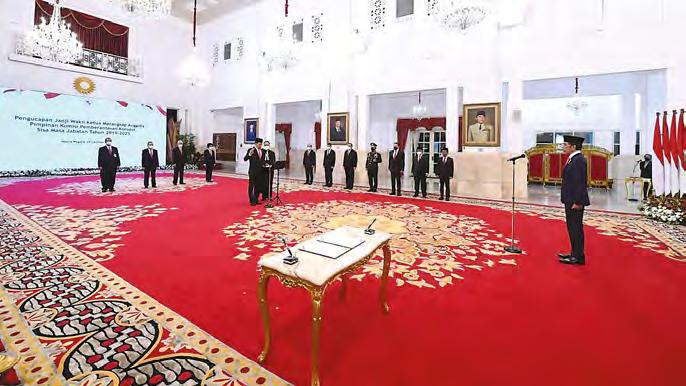
The Negara Palace is the 200-year-old official residence of the Indonesian president where dinner functions and entertaining of dignitaries, ambassadors and ministers takes place. Being a musical nation, background and foreground music is a key feature of both the current and past presidents. Installed in 2008 by Kairos Multi Jaya, the EAW DSA loudspeaker and Allen & Heath iLive console systems were earmarked for an upgrade in 2021.
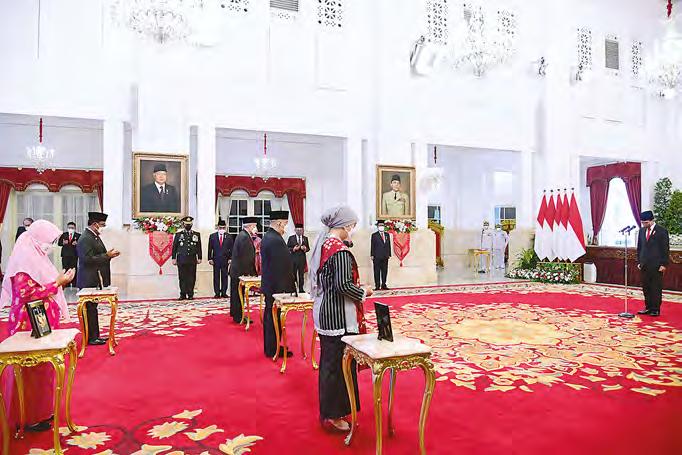
Promedia Innovative Solutions (PIS) was awarded the contract to design, supply and install the digital audio system into the palace. “It’s an old colonial building without blueprints or power consumption plans, so designing a system in a high-profile building is more than challenging,” highlighted PIS managing director, Yosua Yan Heriyanto. “The former consultant initially proposed a line array solution, but weight and aesthetics factored in this being dismissed. The interior décor is floral, so the speaker enclosures had to blend in as much as possible. As a result, PIS had to carefully balance acoustic, aesthetic and artistic considerations.”
The main auditorium is now outfitted with an unobtrusive d&b audiotechnik column speaker solution in a white finish. Powered by two 30D DSP amplifiers that are centrally racked with other d&b amplifier models, two arrays comprising four 24C enclosures and dual 24C-E column extensions are reinforced in the lower frequencies by two 18S subwoofers. “The resultant column speaker and subwoofer combination provides a wide frequency response, depth of clarity and detailed speech intelligibility,” confirmed Heriyanto. Room-to-room audio consistency is aimed for with the incorporation of further 24C columns powered by 10D DSP amplifiers in the Ruang Janwan dining and Ruang Indonesia rooms. The corridor zones, meanwhile, are
fitted with 8S 8-inch point source cabinets. Finally, the outdoor terrace incorporates four 10S-WR weather-resistant 10-inch enclosures. Interfacing the Dante networks and AES3 digital audio signals, a DS10 audio network bridge distributes Ethernet control data across the entire IP-addressable audio network.
Having enjoyed the virtues of an iLive 144 control surface mixing console for over 13 years, the palace technicians stated a preference for the same technology and intuitive GUI interface. As such, an Allen & Heath dLive S7000 was selected for its flexible architecture, FPGA processing core, dual redundancy, control and Dante networking options. The Harmony user interface comes with gesture control, integrating screen and wrap-around controls with a 12-inch capacitive touchscreen and configurable widget areas for scenes, meters and FX.
The S7000 receives its DSP from a DM64 MixRack incorporating common configuration, setup and show files.
The 96kHz/96-bit XCVI Core provides futureproofed capacity for 128 inputs with full processing and 16 dedicated stereo FX returns, offering 160 inputs to mix, together with a fully configurable 64 mix bus architecture with full processing on all 64 mix channels. An MPS16 power supply
extends the redundant features and the inclusion of a Surge-X sequencer promotes a stable electrical current. Remote control functionality of the audio parameters from an iPad touchscreen was made possible by installing an Asus router.
The microphone system has also been upgraded with a Shure ULX-D series platform incorporating Beta 58 handheld transmitters. Finally, a Proel V12-Free active 12-inch battery-powered loudspeaker combined with a beyerdynamic TV56 wireless microphone can be used for portable, plug-and-play scenarios. “Owing to the stop–start restrictions during the pandemic, the works were repeatedly delayed. Being such a high-profile application, high hygiene standards further inhibited our progress, but we persevered, and it comes as a relief that we ultimately exceeded the palace’s expectations,” concluded Heriyanto. “President Joko Widodo loves music and, in particular, heavy metal such as Metallica, which we really enjoyed listening to during our work onsite.”
www.promediasolution.com
Kangbashi District, in Ordos in China’s Inner Mongolia Autonomous Region, was once known as “the empty city” because it lay mostly uninhabited until a complete overhaul took place in 2004. A metropolis of apartments, office towers, sports fields, museums and theatres was built, and the area soon became a tourist destination, internationally known for its Kangbashi Fountain Square.
Every evening at 8–9pm, tourists and locals gather to witness the fountain show that takes place, reflected in the Ulan Mulan Lake that runs through the city. The fountain itself consists of 2,970 sub-fountain nozzles and 1,678 underwater lights reaching up to 230m – said to be the highest known fountain in Asia. Music plays in sync with lighting and projections, bringing this opulent district to life.
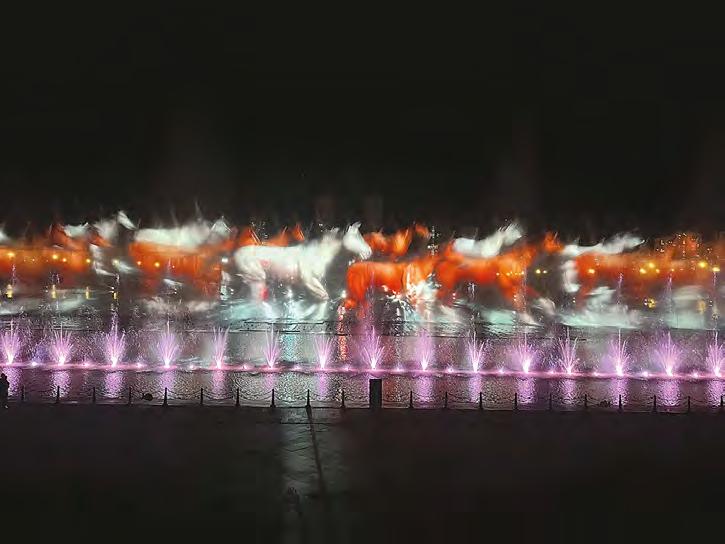
This year, to celebrate the National Day festival, the show’s organisers enlisted the help of Digital Projection to achieve a dreamlike water curtain projection show. Twenty-
eight M-Vision Lasers were introduced to the installation to cast content onto a vast “screen” of water, created by multiple water jets measuring 200m x 20m (WxH).
Mark Wadsworth, vice president of global marketing, Digital Projection, attributes the ColorBoost and Red Laser technology as one of the reasons why the M-Vision Lasers were selected for the project: “The customer needed the very best and reliable projectors to display content onto the waterfall-like curtain,” he said. “The intelligent colour processing delivers the most realistic and saturated colours, something very important for a unique project of this complexity and grandeur.
“It’s fantastic to see the M-Vision laser performing well in such demanding conditions as these,” concluded Wadsworth. “It shows how reliable and high performing these projectors are, even in the most challenging of applications.”
When Monster Dive Studio, a Japanese web and live video production company, began receiving more and more calls to use its livestreaming studio, it became clear that there was a need for additional production equipment. Requiring products that would fit its budget, produce quality livestreams and provide flexibility to the evolving production requirements of the clients it supports, Monster Dive turned to NewTek, which met these specifications.
Located in Tokyo, the 150m 2 Monster Dive Studio may not seem particularly spacious, but the interior is designed to be transformed for different clients on any given day, including live video game commentary, product announcements, interviews or seminars. Monster Dive chose the NewTek TriCaster 2 Elite video production system to serve as the heart of its studio operations.
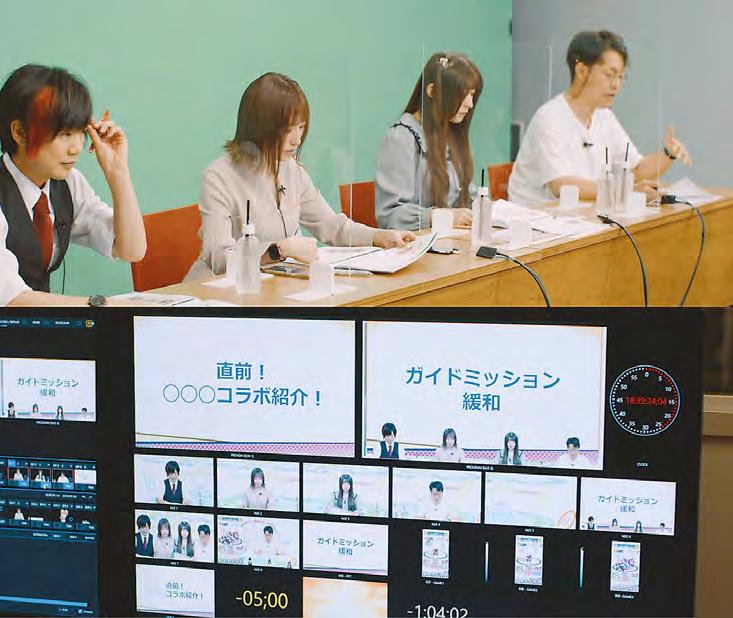
A more complex production may include multiple camera angles, conference calling capabilities, microphones, teleprompters or tally lights to tell speakers which camera is live. Staff members on smaller production teams, like Monster Dive, often must manage multiple tasks, and its production director enjoys the flexibility the TriCaster offers, to streamline the workflow.
“A single NewTek TriCaster can switch cameras, overlay text and run a video
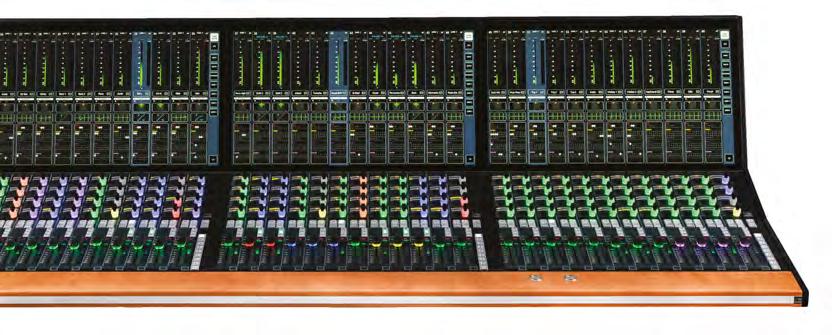
be able to make real-time adjustments, which also makes the show talent feel integral to the production.
“In many cases, Japan’s live production businesses are run out of compact studios like ours. As the TriCaster continues to evolve and add feature improvements, it is becoming the industry standard for web streaming. We’ve had a lot of computer game promotions being produced in our studio and TriCaster has continued to stay the standard setup even as the number of operators has been increasing,” Okajima shared.
In addition, Monster Dive uses the TriCaster 2 Mini Advanced, NC1 Studio I/O Module, the 3Play 3P1 and the NewTek NDI PTZ1 camera within the studio.

“We continue to see a broad range of organisations including businesses, governments and events adopt live broadcast productions to communicate their messages to the world. The NewTek TriCaster line is a powerful production system ideal for production organisations like Monster Dive, and we’re pleased to play a role in supporting its growth,” said Liam Hayter, senior product manager at NewTek.
www.newtek.com

An immersive mixing environment constructed at Sydney’s Forbes Street Studios has included the installation of a 9.1.4 Genelec Smart Active Monitoring system to meet the increasing commercial demand for Dolby Atmos mixing. To create the space, the Forbes Street team called in Sound Spaces as the acoustic consultant and Sounds Easy to supply the equipment, working closely with local Genelec distributor Studio Connections.


“The studio is owned by Universal Music, which worked with Dolby from the outset to create the Dolby Atmos Music format and was the earliest company to begin mixing music across all genres and catalogues in the format,” explained studio manager, Anthony Garvin. “So, it made sense for us to be kitted out as a go-to destination for Atmos music mixing in Australia.
“We had many pairs of Genelecs in the studio already,” Garvin added. “They’re one of the few brands that all our producers and engineers generally agree on, and of those, certainly the best for multichannel configurations.”
With the brand chosen, it was the Atmos specifications that led to the selection of 13 8351 three-way coaxial

were the smallest for our room that would meet Dolby’s SPL requirements,” noted Garvin. “Similarly, the 7382 was literally the smallest sub to meet Dolby’s SPL requirements for the room. And if you’ve seen the 7382, that’s a crazy thought, it’s huge.
Street has seen a steady flow of immersive work. Crucially, the new space has also proved to be a hit with the studio’s engineers. “It’s been really impressive,” said Callum Howell, one of its busiest spatial mixers. “I can’t believe how well things translate from our system
But we have no regrets, it happily got us to where we wanted to go.”
The system was initially calibrated using the Finnish manufacturer’s GLM 4 software and the value of GLM’s loudspeaker management has been seen with its continued daily use. “We are using GLM in quite a simple but extremely helpful way,” said the studio manager. “It boots the monitors up for us when we turn our computer on and turns them off when we shut down. Plus, it’s extremely helpful for troubleshooting and avoids having to get around the back
onto other playback mediums. It’s a big weight off your shoulders to know that the monitoring has your back when you’re working on a new system in a new format.”
Christie laser projectors have transformed a forest in Shanghai’s Fengxian new town into a nighttime attraction that invites visitors to rediscover the beauty of nature and ancient Chinese mythology.

Entitled Oriens Lumina, it is Shanghai’s first forest-themed immersive night tourism venue and a new addition to the Lumina series of enchanted night walks developed by Montreal-based multimedia entertainment studio, Moment Factory, in collaboration with Deng Yu Culture Communication, an

by The Classic of Mountains and Seas, an ancient book about mythic geography and beasts, and the Chinese yin and yang theory of the five elements. It combines digital projections, lighting, animation, sound and special effects to transform the woodland adjacent to Jiukeshu Future Art Center into an artful venue that aims to deliver a dream-like, multisensory experience for visitors. The digital projections are accomplished by a fleet of Christie 3DLP and 1DLP laser projectors comprising the Crimson WU31, 4K10HS, DWU1612-HS and DWU1082-GS deployed across all five themed zones to present an array of vivid and lifelike visuals. The projectors were
supplied by Christie’s trusted partner, Zhongqing Yingye Group, which also provided onsite technical support for this project.
“Christie’s high-performance and reliable 3DLP and 1DLP laser projectors, with their long-lasting laser illumination, compact footprint, quiet operation and omnidirectional capabilities, are well-suited to bring the immersive environments of Oriens Lumina to life,” said Yueyi Wu, representative for Eastern China, Zhongqing Yingye Group. “We are pleased that the amazing projections blended beautifully with nature and will enable visitors to enjoy an exciting, interactive and emotional experience.”
Minfeng Zhang, project coordinator of Oriens , added: “We are delighted to bring visitors on an exploratory journey where they can experience various types of illuminations, including projection mapping, that are used to deliver engaging stories depicted in The Classic of Mountains and Seas Combined with music and sound effects, visitors can better appreciate the natural landscape that has been infused with regional heritage and ancient mythology.”
Visitors can explore the five themed zones at their own pace, which include “Many Moons”, “Woodland Maze”, “Magnetic Storm”, “Hidden Temple” and “Magnolia Renaissance”, which symbolise the five elements of water, fire, earth, gold and wood. The projectors are installed discreetly among the foliage and fitted in weatherproof enclosures to protect them from extreme weather. Bright and bold images are displayed on large translucent screens set up between the trees to provide maximum visual impact.
www.christiedigital.com


Systems integrator Sound Wurks has designed and installed Bose sound systems for a new cycle studio, Ally, converted from 612m2 of former office space in the CBD’s Manulife Tower. Sound Wurks was commissioned to provide a music system for workouts in the main studio, which offers 70 fixed cycles, as well as a BGM system for the entrance, reception, offices, smaller gymnasium and locker rooms.
Before appointing Sound Wurks, Ally’s management team familiarised itself with other
Singaporean fitness venues treated by the SI. “We knew which audio solution would be best for Ally and proposed several models from the Bose DesignMax series,” explained Sound Wurks’ business development manager, Case Woo. “Bose Professional Singapore provides excellent local support, reliability, warranties and speedy response times, in addition to carrying sufficient stock.”

With its LED effects and low ceiling, the main cycle studio resembles a nightclub when in full session. “For spin classes and high-energy
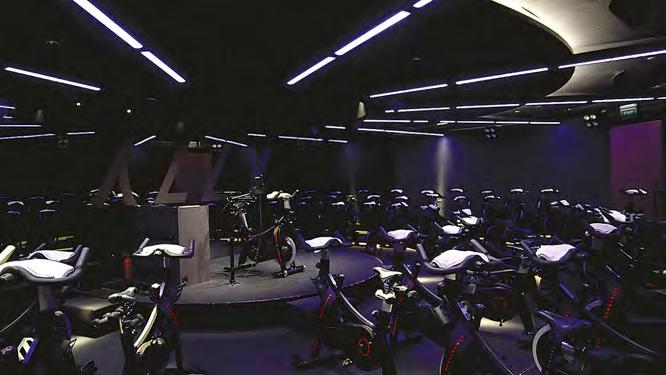
Credited as being the first professional esports venue in China, Hangzhou Esports Center recently opened its doors. The starshipshaped venue is the perfect fit for the futuristic and science-fiction feel of esports but, due to
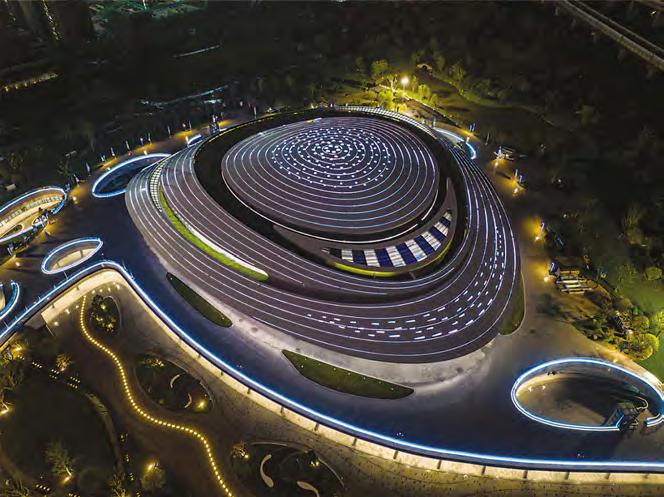
system was designed with EASE 4.4 and EAW Resolution sound field simulation software. The 36 KF810Ps are divided into six groups of six to achieve even coverage, while the single 18-inch subwoofers are hung above each group of full-
studio workouts, the client usually requires near-club-level SPL audio,” continued Woo.
“The ceiling height and relatively small room dimensions restricted both the choice and the range of products we could propose. However, I singled out ceiling-mounted Bose DesignMax DM5SE cabinets with floor-standing MB210 dual 10-inch subwoofers as an ideal pairing because this room required power from compact, unobtrusive enclosures.”
Located in a back of house rack, a ControlSpace ESP880 processor routes
several inputs – including Shure QLX-D wireless microphones for the trainers and a music source in the lobby – to the eight PowerSpace 2600A amplifiers. “Because the amplifiers are powering various DesignMax speakers, the processor is handling the volume levels, the tuning, the EQ and other DSP parameters,” explained Woo.
The low ceilings of the lobby area, shower rooms, changing rooms and toilets required a BGM solution, and DesignMax DMC2-LP 2.25-inch ceiling speakers fulfilled the requirement. “The low profile of these white in-ceiling models was easily installed via the QuickHold mounting mechanism,” said Woo. “In terms of aesthetics, the client is happy as the bezel-less grille matches the interior decoration of the spaces they have been installed in.”
Bose Professional is reporting increased demand from the hospitality, retail and fitness sectors. Bose Professional Singapore training specialist, Jeremy Wong, said: “The latest in-ceiling, surface-mount and pendant models are proving to be very popular throughout these traditional sectors.”
pro.bose.com www.soundwurks.com
TVU Networks’ Nano 5G router has delivered a total of six days of non-stop, live 4K video from the China International Fair for Trade in Services (CIFTIS) in Shougang Park in Beijing. International trade in services has a multitude of changing global rules to navigate, not to mention changing technology. CIFTIS attracts business executives from 71 countries and international organisations.
esports competitions was a challenge. Having been tasked with providing the overall solution for the project, Zhejiang Dafeng Industry, along with AV distributor and provider EZPro, designed and delivered a PA system utilising a range of products from Eastern Acoustic Works (EAW).
The venue’s new PA system consists of 36 EAW KF810P line array systems, 12 SB818P|F single 18-inch subwoofers, six SB180zP compact high-output subwoofers and a variety of fill speakers from EAW’s catalogue. The
On the ground, the six EAW SB180zP subwoofers provide low-frequency energy to enhance the atmosphere during competitions so the players can accurately hear the returned audio signal and response in time. Fill speakers are hung below the LED funnelshaped screens to cover the infield and six portable monitor speakers have been provided for the stage.
Organisers set up a 4K PTZ camera to provide live footage from the trade fair. Real-time coverage of caterpillar-to-butterfly transformations as well as panoramic shots of the area’s unique landscape were broadcast each day. The compact router aimed to create a reliable network for the transmission of the live 4K signals to the media. Over 80 hours of live 4K video were broadcast from Shougang Park over China media platforms including CCTV News, Xinhua News Agency, BTV Beijing Satellite TV as well as social media sites.
Event producers deployed one TVU Nano 5G router at the site of the PTZ camera and one at the broadcast studio in the China National Convention Center. “Producers were able to aggregate multiple communication links from major providers using TVU Nano,” said Paul Shen, CEO, TVU Networks. “Showing viewers real-time video from around the trade fair was a very creative way to attract more attention in a way that fit with the event’s environmental theme. We’re thrilled organisers chose TVU Nano for this application based on their highly successful experience with our technology.”
Using the TVU Nano 5G router, producers created their own public network in the cloud, which also enabled remote control of 4K cameras and the PTZ camera from the broadcast centre.

Creative Technology (CT)
APAC has recently added Tessera S8 LED processors to its existing Brompton Technology inventory. These have already been deployed on two internationally broadcast esports events hosted by Riot Games, bringing processing and image reproduction to the events’ LED video setup.
“Brompton Technology has always been highly thought of in the industry and, with in-camera productions growing rapidly in the last couple of years, it made complete sense to capitalise on the opportunity and invest in Tessera LED processors,” said Juay Minghee, operations director at CT Singapore.
CT chose Tessera S8 LED processors for the flexibility of Brompton’s Tessera feature set and software. It also powered ROE Visual’s DM2, 2.6mm pixel pitch LED panels.
“For League of Legends: MidSeason Invitational [MSI] in Busan, South Korea, we deployed a system that uses over 300 ROE Visual DM2.6 panels together with three Tessera S8s in various configurations, such as nine sets of window-like design, each measuring 1m wide by 2.5m high, and a breakout design overhanging the players and measuring approximately 8m wide by 4m high,” Minghee explained.
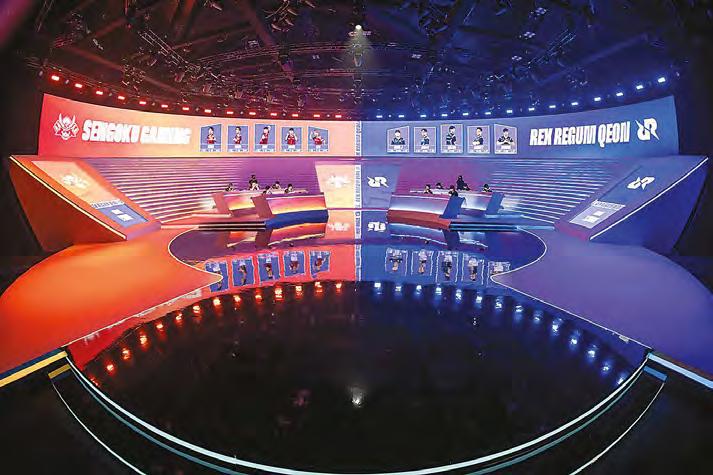
CT then immediately shipped both screen and processors to Singapore for another Riot Games event, the first-ever Wild Rift Icons Global Championship. Originally planned to be hosted in Madrid, the event was moved to Singapore’s Suntec Convention and Exhibition centre due to the Covid pandemic. Here, a giant customised LED wall comprising three rectangular screens, with wings each measuring 6m x 3m and a player walk in LED at 9m x 4m made up of ROE Visual DM2.6 panels and powered by Tessera S8 LED processors, took up key positions around the set.
“We are extremely grateful to Concom, technical producers of Riot Games, for trusting CT to deliver both MSI and Wild Rift Icons,” said Minghee. “Both events were a huge success and were watched by millions of viewers across the globe. To pull off such incredible
productions wouldn’t have been possible without the support of the CT APAC team, our local partners and freelancers.
“Using Tessera S8 LED processors gave us complete peace of mind in terms of colour control and the ability to deliver a top notch incamera visual performance, which were the key objectives for both events,” Minghee concluded.
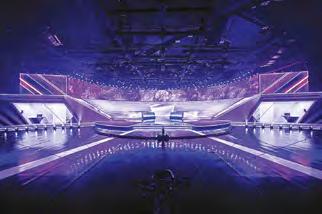
“We are very pleased with our investment in Brompton; the processors have been a breeze to work with and we look forward to using them on many more projects.”
www.bromptontech.com www.ct-group.com/apac

If you build the loudest, widest-bandwidth compression driver yet - engineers are going to want it smaller. After four years of development, two patents, and a reinvention of our in-house simulation techniques, B&C Speakers is proud to present the DCX354.
Smaller, lighter, more ef cient, and surprisingly capable. Enjoy no-compromise point and line-source behavior from 400Hz to 20kHz at new high SPLs.
made in Italy


Fully booked for the first two months, Isola by Signor Sassi attracts a well-heeled crowd of tourists and Thais alike. In the evening, the Ploenchit Road restaurant is distinctively illuminated in an intense blue. Distinguishing itself from most other finedining restaurants, the décor blends Italian and Moroccan elements together with rattan chairs and lemons hanging from the ceiling.
Hanging lemons and ornate interiors, however, clashed with loudspeaker selection. As such, general manager Simone Del Ferro turned to Bangkok-based distributor and systems integrator, Aura Visual System (AVS). Sound engineer Pakphoom proposed a zoned loudspeaker solution from Void Acoustics with an Allen & Heath AHM-16 16x16 processing matrix at its heart. In addition to the main restaurant, the rear VIP rooms, terrace, entrance and corridors are integrated with aesthetically sympathetic loudspeaker outputs offering consistency without delay.
The main restaurant is fitted with four pairs of Void Venu 8 cabinets. Finished in white and weighing 12kg, the compact 8-inch models ticked the unobtrusive box having been fixed horizontally courtesy of the


rotatable 90° x 60° (HxV) HF waveguide behind the lemons. Capable of producing 121dB (continuous) SPL and augmented in the lower frequencies by a pair of Venu 115 15-inch subwoofers tucked away below the oyster bar, the eight Venu 8 cabinets cater for the house DJ who is more than capable of pushing the needle into the red should patrons desire.
Bias Q1 four-channel DSP+Dante amplifiers power the Venu 8 and 115 combination in 16Ω highimpedance mode. “The four pairs of Venu 6 speakers are delayed down the long dining room from the DJ and bar area,” explained Pakphoom.
The outdoor dining terrace and entrance zones comprise wall-mounted Void Cyclone 55 fibreglass weatherised enclosures fixed above each window. Selected for their IP55-rated capabilities, aesthetics and impressive frequency response (70Hz–23kHz; ±3dB), the lower frequencies have been extended down to 40Hz with
the addition of floor-mounted 12-inch Cyclone bass subs. The VIP rooms and corridors are equipped with Cirrus 6.1 two-way 6.5-inch ceiling speakers.
The restaurant manager can access volume control, source select and recall presets from the front panel screen of the AHM-16 matrix with its four programmable SoftKeys. “We have customised the GUI of the touchscreen controllers to make them blend in with the floral and lemon wallpaper décor,” added Pakphoom. “Ease-of-use operation was a very important factor. The restaurant manager does not need to be concerned with Automatic Noise Compensation, processing with crossover filter, delay, limiter and delays on every input and zone. They simply want to change the volume or source in between greeting guests and overseeing dining operations.”
www.allen-heath.com www.voidacoustics.com
For contemporary artist Phạm Minh Hiế d&b Soundscape became a vessel for his artistic expression, when through a collaboration representing the awakening of Vietnamese contemporary art culture, Phạm was commissioned to create an installation for the unveiling of a new art space based in Hanoi called The Outpost. The installation, which runs from 29 November 2022–28 February 2023, seeks to respect the past of Vietnam, recognise the present and dream of the future by bringing together six Vietnamese contemporary artists of all ages and demographics.
Phạm’s work titled The Contemporary is a “total installation” that takes audiences on a journey through the history of artistic expression in his home country, with the audience guided by footsteps of “wanderers”, helping them picture the Vietnamese contemporary art landscape. The installation uses d&b Soundscape to bring the sound of these invisible wanderers alive as they roam the exhibit.
“With traditional sound systems using level panning, it would have been impossible to achieve spatialisation so quickly,” said Ningru (Ning) Guo, sound designer for the production.


“d&b Soundscape is a great system for this purpose since it supports object-based audio and is easy to use for scenarios where audio needs to be moved around the space seamlessly. In The Contemporary, the sound system is placed in different rooms, and we have to send content across these rooms to trigger much bigger sound events to achieve a tsunami of sound. Soundscape’s visualisation of sound makes it much easier for everyone involved in this project to understand how sound travels from one room to another and
recognise the physicality and movements of the sound sources and follow them. Even though my wanderers are invisible, I want their presences to be vividly signalled through sound, and d&b had the capacity to deliver that.”
Complementing Soundscape, the team also utilised d&b’s xS-Series. This is the first time d&b has worked on an art installation in Vietnam, with this exhibition pushing the

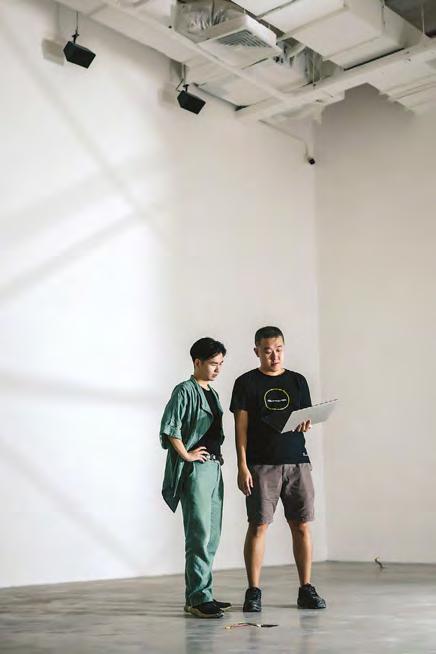
By using En-Scene, a sound object positioning tool, Phạm could work with the individual placement and movement of up to 64 sound objects. As audiences make their way through the non-linear exhibit, these ethereal presences will be heard not seen as Soundscape aims to captivate visitors with this sensory experience.
“Because I wanted my wanderers to move very precisely in different directions, only Soundscape would allow me to do that,” commented Phạm. “I needed a system that lets me move the sound so the audience can
to take on. “d&b had faith in me as a young creator and supported my work,” said Phạm.
“They believed in my vision and wanted the technology to work with me and for me, rather than me being constrained by its limitations. For me that was incredibly motivating, and I look forward to continuing to work with d&b and using Soundscape to explore the horizons of creating immersive experiences for my installations.”
The G20 Bali Summit was held in Nusa Dua, Bali, Indonesia, on 15–16 November 2022 under the theme “Recover Together, Recover Stronger”. It provided the opportunity for world leaders to meet in-person and focus on this year’s three key priorities: global health architecture, digital transformations and sustainable energy transitions. Discussions included topics such as the war in Ukraine and its impact on the global economy, global demand for energy supplies, food security and funding for future pandemic prevention, preparedness and response.
G20 Bali Leaders made the following joint declaration: “We recognised, as large global economies, that collectively we carry responsibilities and that our cooperation was necessary to global economic recovery, to tackle global challenges and lay a foundation for strong, sustainable, balanced and inclusive growth.”
Participating world leaders included Joko Widodo, host and president of Indonesia, Anthony Albanese, prime minister of Australia, Xi Jinping, president of China, Narendra Modi, prime minister of India, Fumio Kishida, prime minister of Japan, Yoon Suk-yeol, president of South Korea, Joe Biden, president of the United States and Rishki Sunak, prime minister of the United Kingdom. There were many more guest countries and international organisations in attendance.
For the meeting, the client needed one fully integrated system to capture audio and
that they would automatically pan to the active speaker upon activating their microphone. The meeting was captured in Full HD 1080p60 video.

Interpreters worked in Audipack Silent 9300 Soundproof Interpreter Booths, which Congress feel are “the best you can get”.
Inside the booths, interpreters worked using Bosch DCN-IDESK Interpreter Desks. Due to the venue’s layout, the booths and equipment were two floors away from the main ballroom itself, which meant that giving the interpreters’ live audio and vision of the ballroom required extensive cabling and organisation.
For leaders, the languages were provided through the conference microphone ISO 20108:2017 and the Bosch Integrus Infrared language distribution system was chosen to distribute the language feeds to delegates. Congress sent audio through the transmitter to truss-mounted radiators, which beamed a strong, secure infrared signal throughout the room. Delegates tuned in using lightweight receivers with headphones and with a button on the side could toggle between channels 0–17. A small card came along with each receiver to indicate their preferred language channel.
With an event of this scale, the allocation and scheduling of equipment to be brought in started weeks out from event day. The required equipment was sourced from each of Congress’s three warehouses in Indonesia, Singapore and Australia, all while supporting other ongoing jobs. The technical producers flew in from the three locations to support the event. Azren Asbori, technical producer at Congress, said: “We learned from the preliminary G20 meetings leading up to the leaders’ summit that there were bound to be last-minute changes, so we expected them. When they came, we were prepared and had extra equipment on-hand to fulfil any additional needs.
video of the delegates, as well as provide 17 channels of simultaneous interpretation so that each delegate could participate in the meeting in their own language, using their own interpreters. For microphones, audiovisual solutions provider, Congress, selected Bosch DCNM-MMD2 Dicentis Multimedia devices equipped with conference-style, long microphone stems. They were also pre-programmed with a graphic to display the Indonesian presidency’s G20 branding.
For cameras, Congress used Avonic CM70IP-B PTZ cameras and pre-programmed them according to the seating arrangements, so
Besides the key equipment, Congress used various hardware and software to integrate the system, manage cameras, queue microphones and ensure clean, stable audio/video feeds. The delegates were able to communicate seamlessly in Indonesian, English, Russian, Hindi, Chinese, German, variations of Spanish, French and Arabic, Korean, Japanese, Italian, Turkish and Khmer.

The main summit took place in the Candi Ballroom at The Apurva Kempinski Bali. To prepare for the setup, Congress studied the floorplans and created a custom schematic to ensure its cameras and microphones worked best in the client’s desired placement. It also carefully considered the best places to truss-mount its radiators to ensure coverage, even when security from various countries brought in jamming equipment, which is to be expected given the event’s high profile.
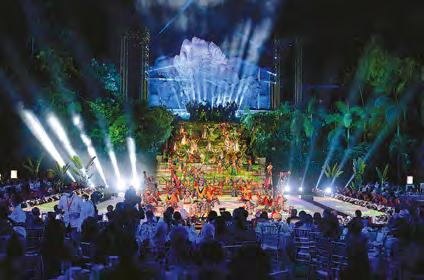
“In the ballroom, we provided 17 simultaneous language channels made for participating leaders, delegates and distributed to the press in the room. Each world leader and invited guest had a conference microphone to speak into and a PTZ camera nearby. President Volodymyr Zelensky of Ukraine called into the meeting via Webex and brought an English to Ukrainian interpreter who also joined virtually. To accommodate this, we added some hybrid integrations and an additional layer of language integration to the meeting.”
Congress built a team of trained technical producers from its Australian, Indonesian and Singaporean offices for G20. “With all three teams working together, we can share knowledge, and everyone returns with something valuable after the job is finished. This internal learning elevates our standard and drives us further in this industry,” said Asbori.
www.congress.asia www.congress.com.au www.congressrental.id
Congress takes us behind the scenes of what is surely its biggest project yet – The G20 Bali Summit 2023L–R: Narendra Modi, prime minister of India and Joko Widodo, president of Indonesia The Candi Ballroom at The Apurva Kempinski Bali Delegates were treated to a taste of Indonesia
With Zone’s deep digital audio processing and intuitive WebApp, you can deliver easy to use commercial audio sound systems without needing super powers.

Commercial audio. Done differently.
optimal-audio.co.uk
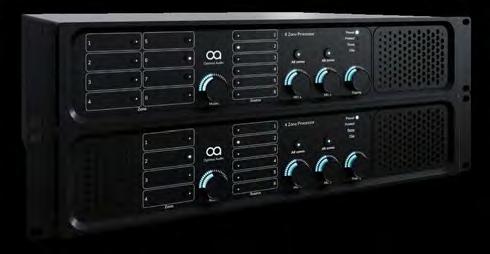
To succeed in an increasingly competitive environment, theatres and performing arts venues will have to attract audiences with value-added experiences they simply can’t get at home, while providing an inspiring and versatile performance space to a range of productions that can vary dramatically from week to week, or even from one day to the next.

As the physical layout of the typical theatre space remains largely unchanged with a stage at the front facing tiered seating, it’s perhaps developments in audio technology that present creatives and venue operators with the best opportunity to engage with audiences on a deeper level, ultimately helping to redefine what might be expected from “a night at the theatre”.
“Immersive audio technologies provide sound and production designers with new opportunities to enhance the drama and draw the audience into the story-telling,” says Deffarges. “With Yamaha AFC Enhance, venues can transform the acoustics of the space, delivering an optimal sonic environment for every type of production. And AFC Image enables the manipulation and placement of sound sources in that space, revolutionising the way that audiences experience a production, for instance with sound that tracks the location of actors.
“Theatres also have an opportunity to share productions with a much wider audience
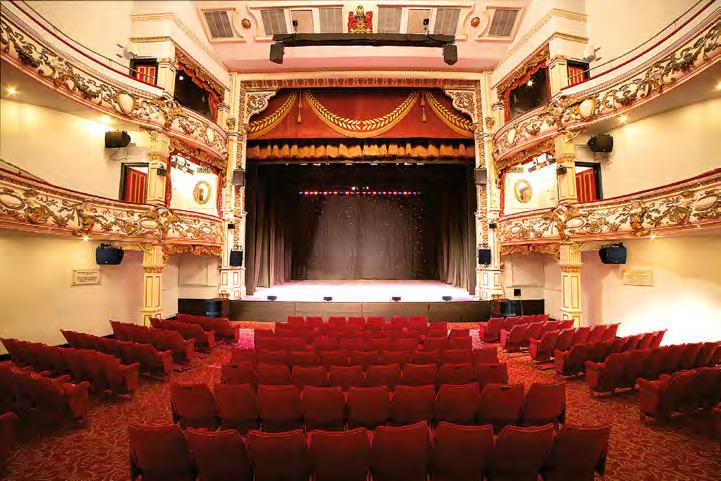
intimacy of the performance for remote viewers by broadcasting in popular surround sound formats.”
As part of the Yamaha Group, NEXO is responsible for the role of “reproduction” in a team of brands that also encompasses sound creation, control and delivery, providing one seamless workflow from pre-production to the opening night.
“With NEXO NS-1, system designers have access to a powerful and intuitive system

supports all NEXO speakers and powered processors,” continues Deffarges. “Working closely with Yamaha AFC Image, it includes AFC Design Assistant which provides the necessary guidelines for the required type, number and placement of speakers to provide a full immersive audio experience for the entire audience.”
NEXO’s product offering in the theatre sound sector ranges from P+ Series point
source speakers to the GEO M Series of three compact line arrays of consistent sonic signature – M6, M10 and M12. Typically characterised by high output from a compact cabinet, NEXO speakers harness a number of patented technologies, including the Hyperbolic Reflector Waveguide which converts the spherical wavefront generated by a highfrequency compression driver into a flat or convex wavefront using an acoustic reflector, allowing speaker cabinet acoustical coupling without interference up to 20kHz.

The company’s ID24 speaker, with its rotatable horn and twin 4-inch drivers mounted in a V-formation, has quickly gained a global reputation as an easily deployable solution for the precision beaming of sound into difficult spaces, particularly under balconies.

“We’re already seeing the trend away from left and right line array hangs and speakers mounted on the proscenium arch to a higher quantity of smaller point source speakers or small clusters distributed throughout the auditorium – and that’s not just to deliver immersive sound productions,” says Deffarges. “Achieving a more consistent coverage of highquality sound enables sound pressure levels to be reduced, while increasing dialogue legibility to allow enhanced expression of nuance and emotion in the performance. This also has the added benefit of helping venues to comply with licensing regulations.”

Also important in the design of a theatre sound system is the availability of a scalable and networkable power and processing solution. NEXO NXAMPs combine four-channnel amplification with linear phase processing presets for all NEXO cabinets, making it easy to configure complex systems combining speakers from different ranges, for instance clusters of GEO M Series line array elements and partner subs at the front, ID24s as front fills and under balconies, and P+ Series around the auditorium.
Based at a purpose-built design and manufacturing campus in Plailly, some 40km to the northeast of Paris, Deffarges and the NEXO Engineering Support Team provide technical services and system design assistance to
a global network of NEXO distributors and installers, typically getting involved with system configuration and the prediction of performance at the project tender stage using NS-1 software, then again for onsite tuning at the commissioning of the system when installed.



“Topping the list of requirements in theatre sound system design are achieving consistent frequency range and SPL coverage throughout the venue and locating the speakers at the points necessary to articulate the location of sources consistent with the sound design of the production,” continues Deffarges. “However, there are plenty of other factors to consider.

“Installing a system of sufficient power to handle everything from stand-up comedy to live music makes venues much more versatile. It’s also important that the system doesn’t obscure sight lines from any seats in the house, and that the cabinets are specified in the correct custom colour to fit in seamlessly with the design of the building, particularly in historic buildings.
“Most excitingly, audio technology is evolving in a way that brings performers and the audience closer together, heightening the drama, sharing the emotions, telling the story. Ultimately, a theatre sound system is successful when the audience doesn’t even know that it’s there.”
the available frequency spectrum, COAV worked closely with Audio-Technica consulting on frequency allocation. As for
condenser lavalier mics, plus several handheld cardioid microphones. Because the COAV team was under extremely
The outputs of the A-T wireless receivers are plugged via XLR into Dante-networked expansion products in the audio room. “That way they’re able to control everything without having to run a lot of really extensive line runs everywhere,”
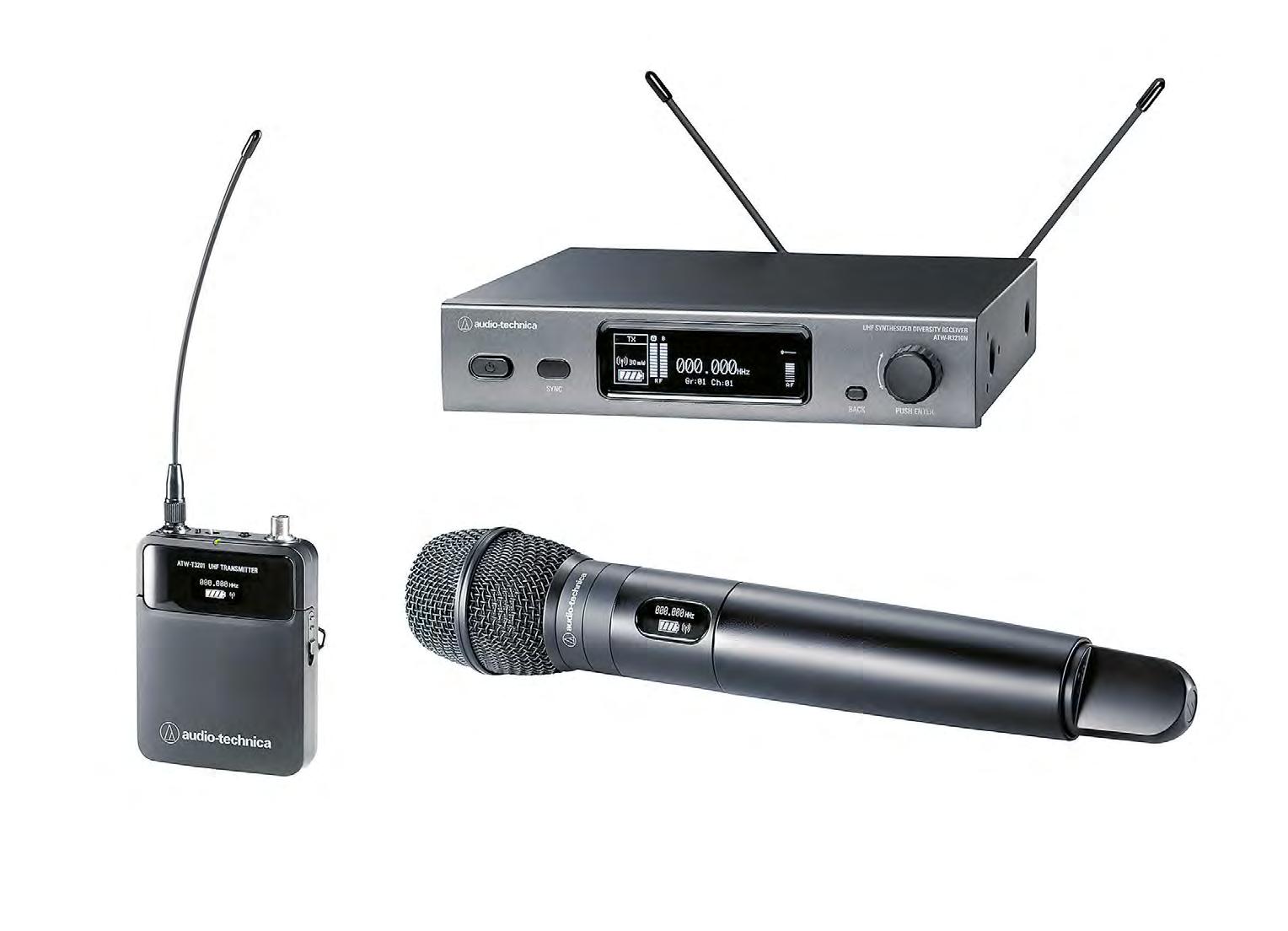
A school district such as Licking Heights expects a 7–10year lifecycle for any AV equipment it purchases, Norrod says. “The district has done a good job of trying to stay ahead of technology – they pick quality over price almost every time. The 3000 Series offers a good return on

Another reason is the ongoing support Norrod receives from Audio-Technica. “The support that we’ve gotten has been truly collaborative. They’ve been able to help us accomplish jobs, working as a team together to get the proper solutions for the client.” Despite the time constraints and, thanks to advance planning, “it was a seamless experience and it went very well. Working closely with Audio-Technica, we were able to plan, deliver and install this system in a very short period of time, and our client really appreciated that.”



TWENTY DRIVERS FROM 10 RACING TEAMS HURTLING 1,000bhp cars around a circuit of turns and straights for up to two hours – that’s Formula 1 in a nutshell. It’s October 2022, and we’re in Singapore as the season’s only F1 nighttime city race takes place for the 12th time. Just over 5km long and wellilluminated, the circuit is bumpy, seriously twisty and dangerously narrow, with hard walls on one and mostly both sides.
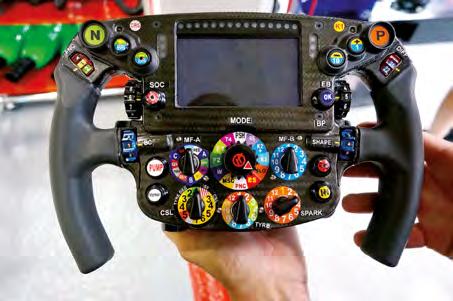

This was only one of 22 Grand Prix races taking place across five continents during the March–November 2022 season.
Nine pairs of back-to-back weekends leave just four days to get all cars, tons of equipment and thousands of people from one track to the next, including packing up on one site and setting up and testing on the next. F1 is a logistical masterpiece: during the usual three practice sessions, qualification and actual Grand Prix, thousands of people trackside and a large number of support people at factories and offices around the globe need live data and video. Around 5,000 people – approximately 1,600 trackside with around 1,400 with radios on air – need to
Thomas Mittelmann attends the Formula
in Singapore’s Marina Bay to discover how Riedel Communications manages to connect legions of people behind the scenesThe steering wheel of Haas’s Mick Schumacher, with SOC talk button Image courtesy of Clive Mason-Getty Images
communicate, split into groups, because not everyone has to hear everything.
Marco Perrone led the strategy engineering at Scuderia AlphaTauri (formerly Scuderia Toro Rosso) for 10 years before becoming the team’s head of sporting direction. “Well-working communication is a must; a basic requirement of our jobs,” he tells me. “It is critical to pass the right messages at the right time to the right people.”

Anything can happen during a Grand Prix: change of weather, vehicle breakdowns, accidents. Even the most capable driver in the fastest car can lose out to a team with a better strategy. A well-timed pitstop can make the difference – for instance, after an incident, while the safety car is out and slowing the pack down. The drivers are too busy controlling their cars to make such decisions. Each team employs specialists – some trackside, some at the team’s home base – who are continuously monitoring cars, drivers and competitors, feeding data into computer simulations so their strategists are prepared to make split-second decisions and instantly inform drivers, pit crew and other relevant people. A second too late could result in a missed opportunity, potentially ruining the race.

Riedel Communications started working with F1 almost 30 years ago and today is one of the few official suppliers to its governing body, the Fédération Internationale de l’Automobile (FIA), providing equipment and expertise for every race weekend for almost all radio and intercom, plus video and data streaming. To accommodate full-service customers like F1, Riedel has created a largely autonomous division, Managed Technologies, under CEO, Lutz Rathmann. “Complexity, the number of races, short logistic times, demand on people and the fact that F1 is all about precision and overperformance make it the largest series of events we work with,” Rathmann explains. “You can’t perform at 99%, you must always be at over 100%. Any mistake or failure can cause distress to others, such as an unfair outcome, the loss of millions of dollars and even threat to lives.”
Jakob Stellbrinck, senior project manager with a focus on “single seater” racing, was part of a racing team prior to 12 years at Riedel working on F1. He manages Riedel’s trackside personnel and processes, and is hands-on with planning, design, setup and operation of the system and its components. “For our operational crew of usually 16, race weekends are mostly a Tuesday to Monday job,” Stellbrinck explains. “Tuesday and Wednesday setup, Thursday testing, Friday to Sunday showtime, Sunday night packing up, Monday morning to the airport. With the next race just a week later, this starts all over in Japan on Tuesday. A crew of three or four is flying in the week before to put the optical fibre in place.”
That’s several kilometres of Riedel-manufactured fibre forming the redundant backbone ring of the entire system around the track and along the pitwall. They also lay fibre runs to the team garages. Depending on track location, it can exceed 12km in total.
“We and our clients – not just F1 – need not only extremely rugged fibre but, in general, very robust equipment which can survive multiple uses in very hostile conditions such as a pitlane,” explains Rathmann. “Vibration, carbon dust, high
temperatures and high humidity; we also want to make sure everything is connected and mounted in the most durable, reliable way.”
The initial install crew sets up a rack to route and patch signals to the garages. Also connecting to the WAN for general internet, it mainly links trackside F1, FIA and the teams to home bases around the globe, plus Riedel Networks’ data centres in Frankfurt and Wuppertal, Germany, via highly protected, end-to-end raw data lines which Riedel also manages. “Worst case, in between Australia and Europe, latency can be up to 240ms,” Stellbrinck says. “It’s physics, speed of light, not a problem for data transmission and, for voice, completely irrelevant. Within Europe it never exceeds 40ms and can even go below 10. Once the link is established, it’s stable and doesn’t vary.”
Riedel’s MediorNet, fibre transceivers and software allow 24/7 supervision from a single point or remotely via a smartphone app. “Should a forklift park on our fibre, we’ll immediately get an alarm,” laughs Stellbrinck. Six fibre sets and two router/patch racks enable leapfrogging in case of tight schedules; with the race in Japan the following weekend, another kit is already being installed and set up there.
As Stellbrinck shows me around, it becomes clear that all major components of the system are preconfigured for quick connection, allowing the Riedel team to stay within the tight timeline. More time is saved by the teams’ nodes, radio and intercom antennas, switcher panels and add-ons like radios and headsets being installed in garage furniture and pitwall stands and travelling with the teams, for easy connection.

At race control, eight Riedel crew ensure race director and stewards receive the audio, video and data they need, including from CCTV cameras installed by Riedel around the track and pitlane and connected to the backbone. The radio system – a digital TETRA main base station serving around 1,400 radios (100 per team and 400 for F1 management), safety and medical cars and track marshals – also sits on the backbone. “TETRA gives us both coverage and capacity,” explains Stellbrinck. “With a single antenna containing one TX and two RX we can cover up to 3km but we’re using more for better separation, putting a big mesh over the entire area including the paddock, where the teams mingle with media and VIPs. With each team using only six or eight radio channels, even with intercom transformed to radio as well, we have many more channels open simultaneously than we require.”

F1, FIA and almost all teams use Riedel Bolero beltpacks for intercom as well as TETRA beltpacks for radio and, depending on the user’s role, with switcher panels provided. While most teams still use the Riedel Artist 1000 Series key panels, Ferrari, Haas and the FIA including race control have upgraded to the all-IP 1200 Series SmartPanels – a trend which Stellbrinck foresees continuing. “The SmartPanel design is based on long studies and F1 customers’ input,” he says. “Being fully IP, with its 2U replacing an entire 150kg rack, it saves on freight and reduces our carbon footprint, aside from simplifying the infrastructure and

“Even if the end result is better, changing technology means extra effort,” cautions Rathmann. “Change of workflow, habitsMarco Perrone of Scuderia AlphaTauri Scuderia AlphaTauri’s Daniela Marabini in the guest area of the garage L–R: Riedel’s Lutz Rathmann and Jakob Stellbrinck at race control
and major technology often only happen during the winter break to not stress the race operations. But once done, the possibilities are endless. The SmartPanels and Control Panel App improve and create new workflows at another level. However, as we move towards software and IP-based solutions, our technology is getting even smarter. Today we can make changes, updates and upgrades even during operations within the season.”
Medical and safety cars and backups are each equipped with two radio systems on two different frequencies for redundancy, with a spare base station. Bernd Mayländer, an accomplished racer himself, has driven the safety car for over 20 years. “The two of us in the safety car are dependent on receiving information since we have to react, often very quickly,” he explains. “The Riedel radios work perfectly, and service and cooperation are professional and reliable.”
Two standard airfreight-sized containers each contain four 19-inch racks from top to bottom. Stellbrinck designed the racks to mount on rails and be pushed backwards or forwards, providing space and easy access from either side, while aircushions underneath absorb vibrations during transport. This is the heart of the Riedel system, where the fibre backbone ring begins and ends. Everything has redundancy, including air-conditioning, power supplies, power generators and battery packs. The first container is dedicated to intercom, with a small replica of Stellbrinck’s race control workplace alongside some servers, network switches and two each Riedel Artist-64 and Artist-1024 nodes, all set for Artist Fibre and AES67. It’s not long since the Artist-1024 replaced the multiple Artist-64s being deployed. “A small, lightweight 2U unit saves several kilograms, reducing airfreight charges as well as F1’s carbon footprint, in line with FIA’s pledges to be net zero by 2030, all the while benefitting from greater redundancy and more,” announces Stellbrinck, happily.
The Artist-1024 frames are loaded with Universal Interface Cards (UIC) with up to 128 ports each. UICs being software-
defined hardware, any card can connect to any switcher panel, wireless Bolero, or be for audio streaming or as controller cards.
“In case one of these cards should ever fail, another circuit inside the UIC or another UIC card would take over, and outside no one would notice,” says Stellbrinck. Most teams are equipped with Artist-1024 units, too, plus a router for access to MPLS to connect with off-site factory personnel and other external locations, in addition to internet access.
Alongside switches, the second container holds more servers and huge amounts of data storage. “We could watch any race from last season, complete with all cameras and sound,” asserts Stellbrinck.
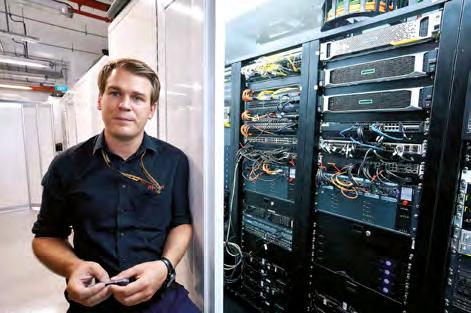
An extensive VM server infrastructure hosts services such as video workflows for the FIA. Up to 130 feeds, from CCTV and video signals received from the FIA, pitlane CCTV, onboard cameras and broadcast video, arrive here. “It all needs to be recorded and stored for reviews and examinations, and reviewers must be able to switch in real time between streams,” adds Rathmann. At the end of the race weekend, all data is transferred by Riedel Networks to its data centre in Wuppertal, giving FIA HQ in Geneva, Switzerland, full access.


Everything – the position of containers, junction points, antennas, cameras – is documented, making setting up in different locations even after pandemic-related absences an easy process.
Alongside technology, the human factor is another of Rathmann’s and Stellbrinck’s greatest interests. “For our co-workers, technical knowledge is very helpful, but an understanding of motorsport and 100% trustworthiness and reliability is also required,” says Stellbrinck. “You have to
understand race operations, demands, priorities and timings,” adds Rathmann. “In case of troubleshooting, you have to act fast, be on the case until it’s solved then debrief, and make sure it will never happen again.” This is particularly true for the six crew members embedded with a racing team, working on their schedule, travelling and virtually living with them.
Leonardo Di Biase, who worked for Ferrari’s F1 with Michael Schumacher, has been Riedel’s communication specialist at Haas since the team’s inception in 2015, working for the past two seasons with Schumacher’s son, Mick. “It’s important for the team to know you well and how you work; it requires trust,” he says. “Vice versa, it helps to know the team members: how they work, what they want or need, so you set up their gear exactly as they prefer. There is no time to sit down and discuss. Everything you do has to be perfect. You cannot make any mistakes. Without audio, you cannot put a car on the track.”
“The biggest challenge is the time constraints for install and setup, and teardown and packing up,” reflects Stellbrinck. “Thanks to optimising equipment, streamlining processes, simplifying complex tasks and standardising connectors and protocols, we have reduced our loadout from eight hours to just over four.”
It didn’t help this time, though. The Singapore Grand Prix ended much later than scheduled because the start was delayed by roughly an hour. Considering it was a night race and the time to freight departure was already tight, Riedel’s off-duty crew worked overtime to help with packing and make the plane. The next race in Japan was already calling.
www.riedel.net
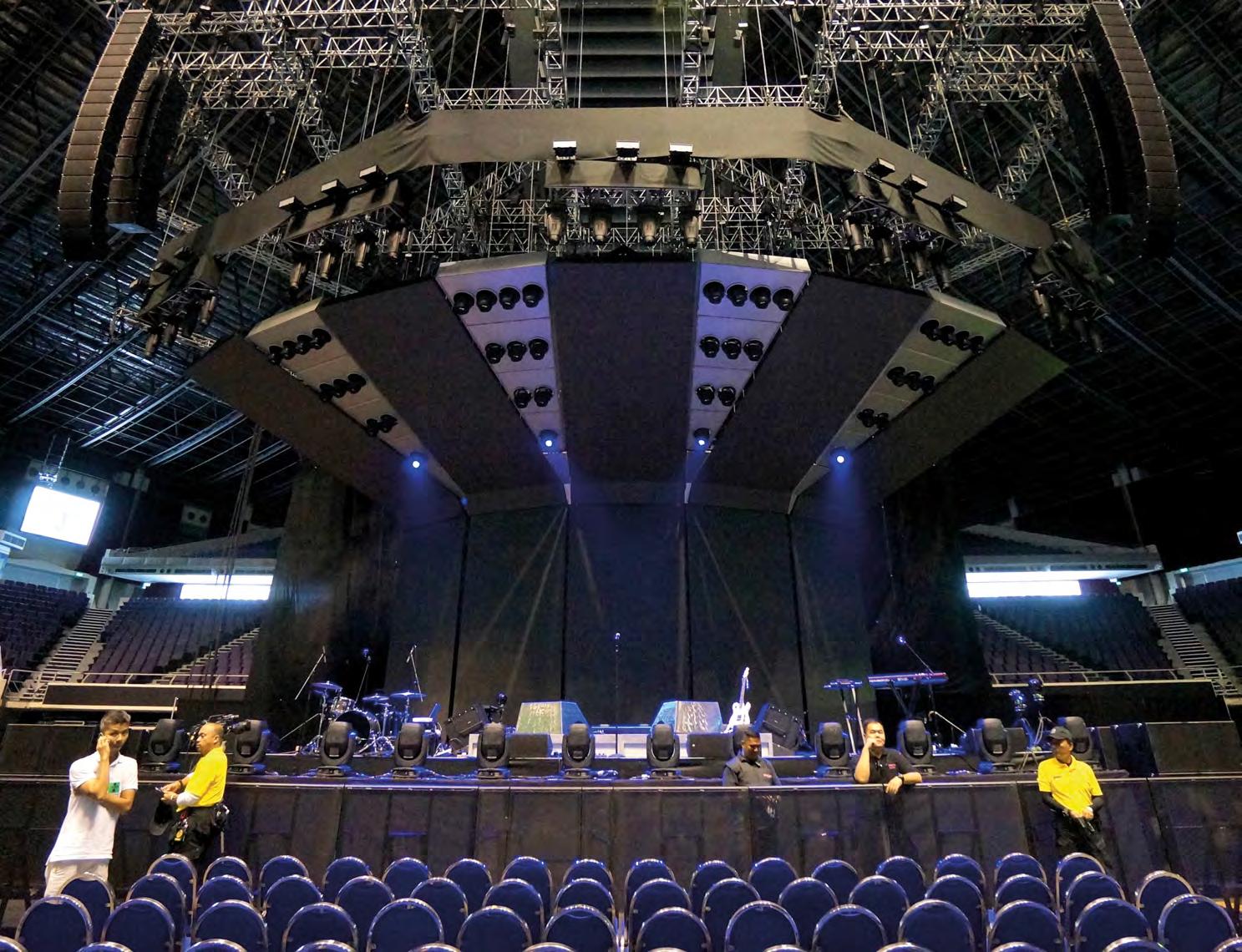


Indonesian superstar Indra Lesmana performed at four spectacular concerts in late 2022, including one in a hillside forest. Richard Lawn reports on the unique set of challenges this location threw up



FOR A FLEDGLING PROMOTER, PUTTING ON FOUR concerts across Indonesia for one of the country’s greatest artists was a huge opportunity as well as a risk. Promoter Reza Bosyang had set up Senyawa Entertainment in 2019 after 15 years working as a crew member in live entertainment, only for the pandemic to call time on the events industry. When he finally found himself back in business, his promotional debut was to be the first of Indra Lesmana’s Legacy Concert shows at Jakarta’s JI Expo, scheduled for August 2022. Unfortunately, the date had to be postponed by two weeks due to the artist contracting Covid. Finally, the mini tour kicked off in September in the Indonesian capital as the nation welcomed back their iconic star. Next, an even greater challenge awaited: transferring the production deep into the Cikole Orchid Forest on a cool hillside near Mount Tangkuban Perahu, just north of the West Java capital, Bandung.
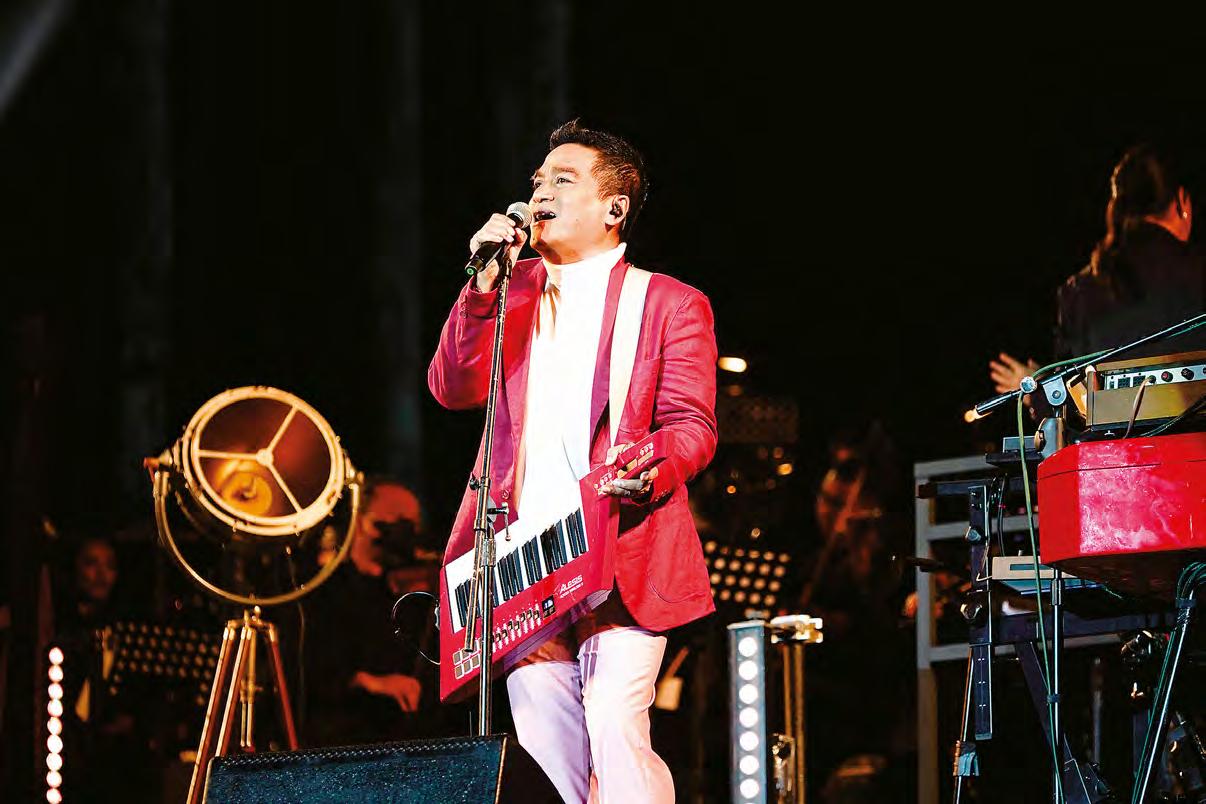
“Indra is a living legend,” says Bosyang of the multi-awardwinning artist who started his career aged 10, racking up an extensive discography and decades of live performances along with TV roles on programmes including Indonesian Idol and Asian Idol. “He’s the most productive artist that Indonesia has, and works across multiple genres: pop, jazz, r&b, heavy metal.” All of which occur in the same concert, meaning that the sound system, as well as the technical expertise and support, need to be second-to-none to cater for the wide spectrum of music. For the 2022 shows, the production team collaborated with 11 different singers – including Lesmana’s daughter, Eva Celia –and around 100 musicians who formed the specially created Indonesia Legacy Orchestra, each of whom had been auditioned by the promoter himself.
It opened at the 2,500-capacity JI
the city where he started his career, moving to Orchid Forest then to the Prambanan temple in Yogyakarta, symbolising Lesmana’s legendary status in the country. The final show was held in Bali, the island that Lesmana has called home for several years.
Located 45 minutes from Bandung, Orchid Forest is richly endowed with tall pines and more than 20,000 orchids, a 23m-high wooden bridge traversing the valley. Due to the hilly, uneven terrain, a concrete platform had to be constructed to support the split-level, 30m x 20m stage, with work beginning
that the concert would look better taking place in the open air, so the stage was constructed without a roof and the production team prayed for good weather; fortunately, their decision was validated. This meant, however, that overhead lights had to be suspended from trusses and kept to a minimum, reinforced by onstage lighting in a design provided by Iwan Hutapea which enhanced the beautiful natural surroundings as night fell.
On the night, the audience of over 10,000 assembled in a natural amphitheatre, having been ferried in from the car park by a series of shuttle buses. All audio equipment was supplied by one of Indonesia’s leading rental companies, Sumber Ria Sound, which had also worked on the previous Jakarta concert with Meyer Sound’s Bob McCarthy, who’d flown in from the US to EQ the Meyer Sound Constellation system at the JI Expo. For the Orchid Forest concert, Sumber Ria provided a J-Series from d&b audiotechnik, with a similar front of house control system as for Jakarta: a DiGiCo SD7 at FOH which, together with four DiGiRacks, took care of the 180 channels coming from all the musicians onstage. Two SD8s with a further four DiGiRacks were used on monitors. The concerts were recorded by monitor engineer Cris Wulur on a system of six Merging Technologies Pyramix DAWs, plus two DiGiGrid MGB interfaces for backup recording via an RME MADI bridge.


Sumber Ria used d&b’s Array Calc to carry out audio simulation in advance, opting for a simple flown L-R system of eight J-Series J8 large-format line array speakers and six J-Sub subwoofers per side with a front fill system of four further J-Series. “We had to raise the PA to 18m,” says Sumber Ria owner Andre Supryanata, adding that local people volunteered their assistance in raising the PA system. At 1,400m, the cool forest temperatures as well as its height above sea level added extra challenges. “We needed to compensate for the weather and elevation while EQing the system,” Supryanata continues.

Monitoring was a mixture of d&b MAX2 wedges together with Shure IEM PSM 900, Aviom and Behringer Powerplay personal monitoring systems. A huge range of microphones from DPA, Shure, AKG and Radial was available to the artists, while Lesmana brought his own inventory of Audio-Technica models to
Bosyang was very grateful to his support team. “I was well supported by Sumber Ria, which I think is the best sound system rental company in Indonesia,” he says. “Iwan Hutapea was the lighting designer, and art director Taba Sanchbachtiar coordinated all the artistic elements of all four shows. We hired four musical
show to the Prambanan Temple at Yogyakarta, using the ancient building’s façade as a backdrop. “It’s going to be amazing,” he says, grinning broadly. And having seen the magic he and his team have created deep in a Javanese forest, we have no reason to believe otherwise.
www.dbaudio.com www.digico.biz
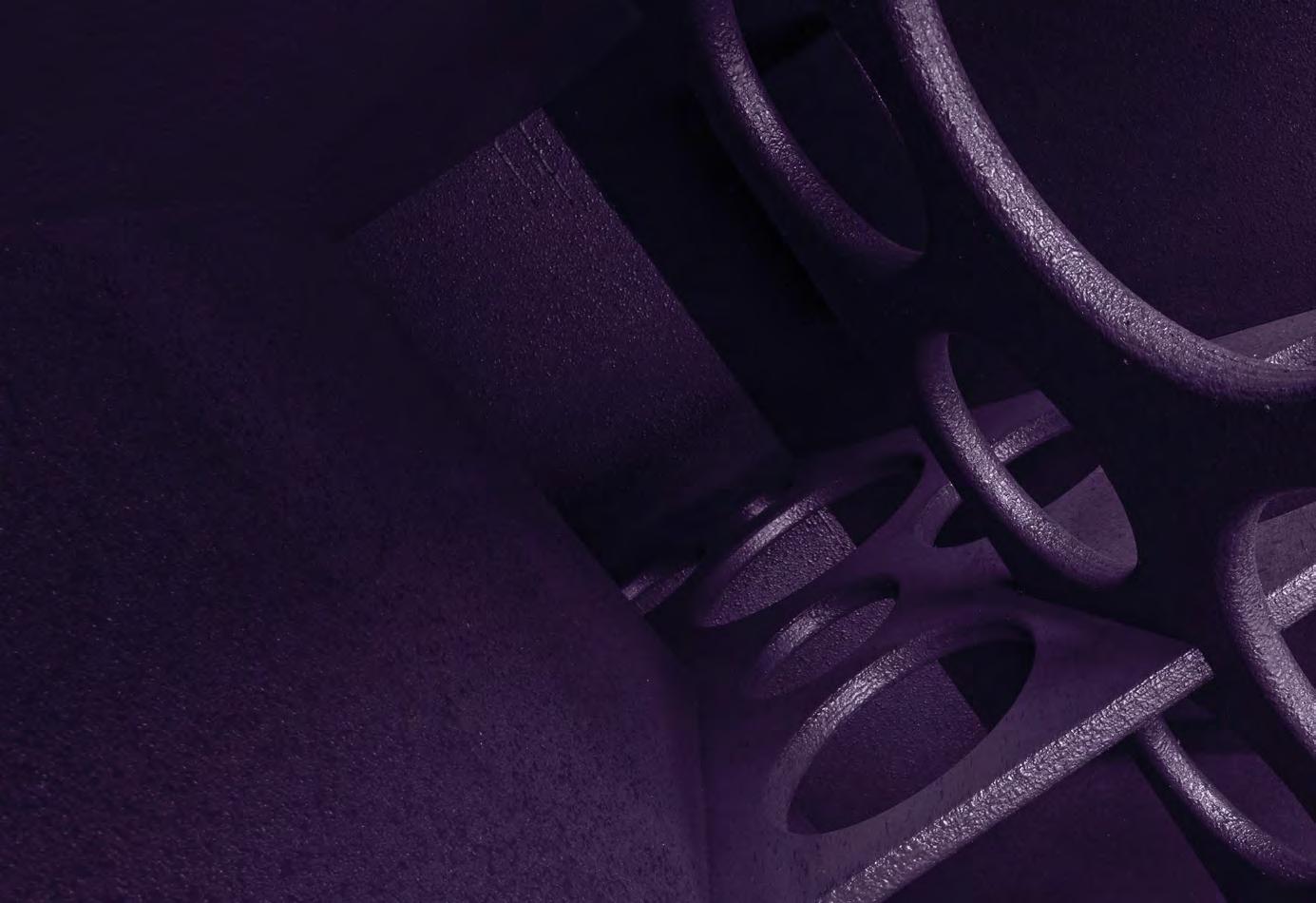
BUILT ON A GRASSED PLINTH ON THE REMAINS OF A dormant volcano, Auckland Museum is one of New Zealand’s – if not the Southern Hemisphere’s – most important museums and war memorials, with collections that explore the history of the country and its military. The building was constructed in the 1920s in the neo-classicist architectural style in the Auckland Domain, a large public park close to the Auckland CBD (central business district).
The museum had decided that its unique collection of Māori and Pacific exhibits needed updated technology to provide visitors with interactive displays throughout the galleries. The initial brief called for a control platform to trigger the BrightSign media players and act as a paging system. It turned to Auckland-based systems integrator DM Acoustic to provide a design and to recommend suitable hardware solutions. DM Acoustic, in turn, recommended a Q-SYS solution from NSL, explaining that not only could it handle the museum’s paging requirements, it could also control all aspects of its AV system.
“DM Acoustic introduced us to the Q-SYS system and carried out design work for some areas of the museum for speaker placement, hardware recommendations and procurement,” explains Liam Brown, AV manager at the Auckland Museum. “We also worked with Australasian Audio Engineering who put together all hardware packages for the gallery fit-outs and experiences and procured equipment for all of the other deployments of Q-SYS amplifiers and speakers through the older galleries.”
The team at DM Acoustic believed that QSC’s Q-SYS would be suitable for the museum’s requirements by allowing seamless AVC (audio, video and control) integration while also providing a futureproof solution that could expand to encompass the museum’s growing requirements. “The galleries that sat on our old analogue system were migrated to Q-SYS amplifiers and speakers to bring them in line with the newly refitted galleries,” explains Brown. Q-SYS control ties together most of the museum’s paging system, exhibitions and interactive displays and has been programmed to be as intuitive as possible. This was an important factor as the exhibitions are ever evolving, meaning that the system should provide an easy solution for the in-house AV team to maintain and make custom changes. Brown personally handled most of the system programming and configuration for Q-SYS, having spent time working with the Q-SYS Core 510i processor before deployment to get to grips with it, building gallery experiences
which use the core for scripting. “Through custom scripting, we are able to schedule digital marketing displays and content, monitor BrightSigns and PC status and integrate further systems such as Philips Dynalite lighting control for use in experiences or general automation and control,” continues the AV manager.
The system runs audio while managing the museum’s Epson projectors, Kramer systems, media players, video playback and other AV elements via dedicated user interfaces.



“Q-SYS was the solution that best fits the museum AV team’s mindset of maintaining and developing a system in-house,” says Brown. “This gives us full control and the highest level of understanding for problem solving. We now have a system that takes inputs from multiple, existing platforms and handles them all seamlessly. There is very little that is not controlled from Q-SYS that my AV team require access to. We have not needed to rely on external resources for Q-SYS programming at any stage of the deployment so far.”
NSL Solutions has provided a variety of speakers for installation throughout Auckland War Memorial Museum, including QSC AC-C4T 4-inch and AC-C6T 6-inch ceiling speakers, which are powerful yet discreet enough to provide an immersive experience for visitors.

Low frequency extension is provided by AD-C81Tw ceiling-mount subwoofers. QSC AD-S4T and AC-S6T surface-mount loudspeakers, together with AD-P6T pendant speakers and AD-S112SW subwoofers, have also been distributed throughout the museum, where they are being used for a wide variety of foreground and background sound reinforcement applications. The speakers can be easily controlled by museum staff via a touch panel or phone app.
The speaker systems are being driven by QSC CXD and CX-Q amplifiers which sit within the Q-SYS ecosystem and provide enough power and flexibility between 100V and low impedance. For live events and presentations, a Shure Axient Digital wireless mic system – again supplied by NSL Solutions – was selected, based on its audio quality paired with IT network-based transport which allows it to integrate into Q-SYS.
The museum’s AV team are now able to design and reconfigure the system to suit their needs while, going forward, Auckland War Memorial Museum has standardised Q-SYS as its central AVC platform for future upgrades.
www.nsl.co.nz www.qsc.com
The Auckland War Memorial Museum Tamaki Paenga Hira or, simply, Auckland Museum, has a new QSC Q-SYS infrastructure supplied by local distributor, NSLEncourage your customers and guests to linger for longer with great sound. Thanks to their wide coverage angle and balanced sound, DQOR speakers provide an inviting ambience whether indoors or outdoors. These modern and dynamic looking installation speakers are available as 3”, 5” and 8” versions in black or white and respectively with two connection variants: low impedance (8 Ohm), or high impedance (70V/100V/16 Ohm) with multiple power taps.



Laservision has created its largest fountain show to date in new Vietnamese tourist destination, MerryLand Quy Nhon. Laservision, which is headquartered in the Sydney suburb of Dural with branches in Hong Kong and Dubai, specialises in supplying technology for world-renowned fountain shows. The company has broken two Guinness World Records: one for the largest water screen projection for 2016’s in Dubai, and the other for Hong Kong’s in Victoria Harbour, which continues to be the world’s largest permanent light and sound show.
With an investment of around US$2.49 billion, MerryLand Quy Nhon is located on the Hai Giang peninsula. Surrounded by ocean and beaches and backed by green hills, the region is gearing up to become a major tourist destination. Laservision worked closely with Hung Thinh Corporation, the Vietnamese real estate developer behind MerryLand Quy Nhon, to create a “musical fountain square” spanning 44,283m running over 840m to fill the Bizhouse Canal District with daily entertainment and musical performances. At the end of the Canal District is the main entertainment area, a 200m-wide lagoon approximately the size of 10 Olympic-sized swimming pools. The lagoon is installed with 300 fountains capable of reaching up to 50m high which, at maximum power, could fill up one Olympic pool in 60 seconds. Unsurprisingly, this is currently Vietnam’s largest and longest immersive water-show venue, with entertainment and large-scale shows planned to run throughout the year.
Since its soft opening in April 2022, the venue has played host to several spectaculars including the Miss World Vietnam beauty pageant, welcoming over 15,000 spectators for the final night’s celebration. The first official fountain performance at MerryLand Quy Nhon, however, was Mystic of the Wonderland, a story about a fisherman’s son who learns about the power of the sea and ways to live in harmony with nature. The audience follows the boy on an epic adventure as he explores mystical worlds and battles evil forces that attempt to disrupt the harmony of nature. The entire story is relayed in an immersive performance which encompasses

sound, light, fire, water and special effects. This is just the first of many themed programmes, musical fountain shows and spectaculars that Laservision and Hung Thinh Corporation are planning to deliver on a nightly basis at MerryLand Quy Nhon.


“The most thrilling moment for us is witnessing a show debut and seeing all the amazed faces light up during the performance,” says Laservision’s CEO, Shannon Brooks. “The years and months of planning, installation, creative development, design, manufacturing and programming turn into a breathtaking, beautiful performance. This installation is a credit to Hung Thinh’s vision and the passion
For the MerryLand project, Laservision designed and installed two of its Guinness award-winning water screens for MerryLand. Coupled with two 20K Panasonic laser projectors, these enhance the immersive qualities and viewing experience for the audience, adding multimedia content to enrich the storytelling aspect of the show. Immersive video content is projected onto the water screens via large-format Panasonic projectors as multiple high-power lasers pulse across the venue. The fountain, water and mist technologies are supported by 12 flame heads reaching up to 20m high, as well
Laservision also developed, manufactured and installed the 300 custom fountains used in the main entertainment area, which can achieve heights of up to 50m as well as supplying the dynamic qualities required for this style of immersive water shows. “By introducing our custom, DMX-controlled robotic nozzles and lighting at each fountain head, we’ve created a variety of looks and water effects,” explains Brooks. “The elegance we get with multiple types of movements and nozzles allows our creative vision to reach its full potential and provide world-class fountain
Partnering with German multimedia show design software developer Syncronorm, Laservision debuted the latest Depence2 control system and Vserver4 hardware. This is being used to control the hundreds of fountains, DMX fixtures, laser projectors, flames and special effects programmed across the entire show, as well as other multiple media protocols travelling over 10km of cable. Syncronorm’s technology also allowed the show programming to be visualised and implemented offsite, which proved crucial to the project’s delivery during the height of the pandemic when travel wasn’t always possible for the creative and programming teams.
within a 25-day period as the President of Vietnam, Nguyen Xuan Phuc, was scheduled to arrive at MerryLand Quy Nhon to view the development – which also has a five-star hotel, an 18-hole golf course and a marina – including a visit to the water show. Fortunately, the distributor had all the system components in stock and was able to complete installation in time for the presidential visit, despite delays and challenges presented by the pandemic.
The main L-R line source system consists of three E15 enclosures and two E219 subwoofers per side, with a centre system of four IS7pw weatherised point source speakers. A further IS7pw per side provides infill between the main L-R system and the L-R outfill setup consisting of three-per-side arrays of four IS10nw weatherised line

array speakers and one IS119w weatherised subwoofer. The entire setup is powered by Lab Gruppen PLM 20K44, D 200:4L, D 120:4L and D 80:4L amplifiers. Van Lam also supplied an Allen & Heath SQ-5 48-channel mixing console for the shows.
MerryLand Quy Nhon is on course to reach its target of entertaining millions of visitors a year in the ongoing journey to transform the region into a leading Asian cultural and entertainment destination by 2030. The fountain spectacular created by Laservision, Adamson and their partners should certainly help to achieve that goal.


www.adamsonsystems.com www.laservision.com.au




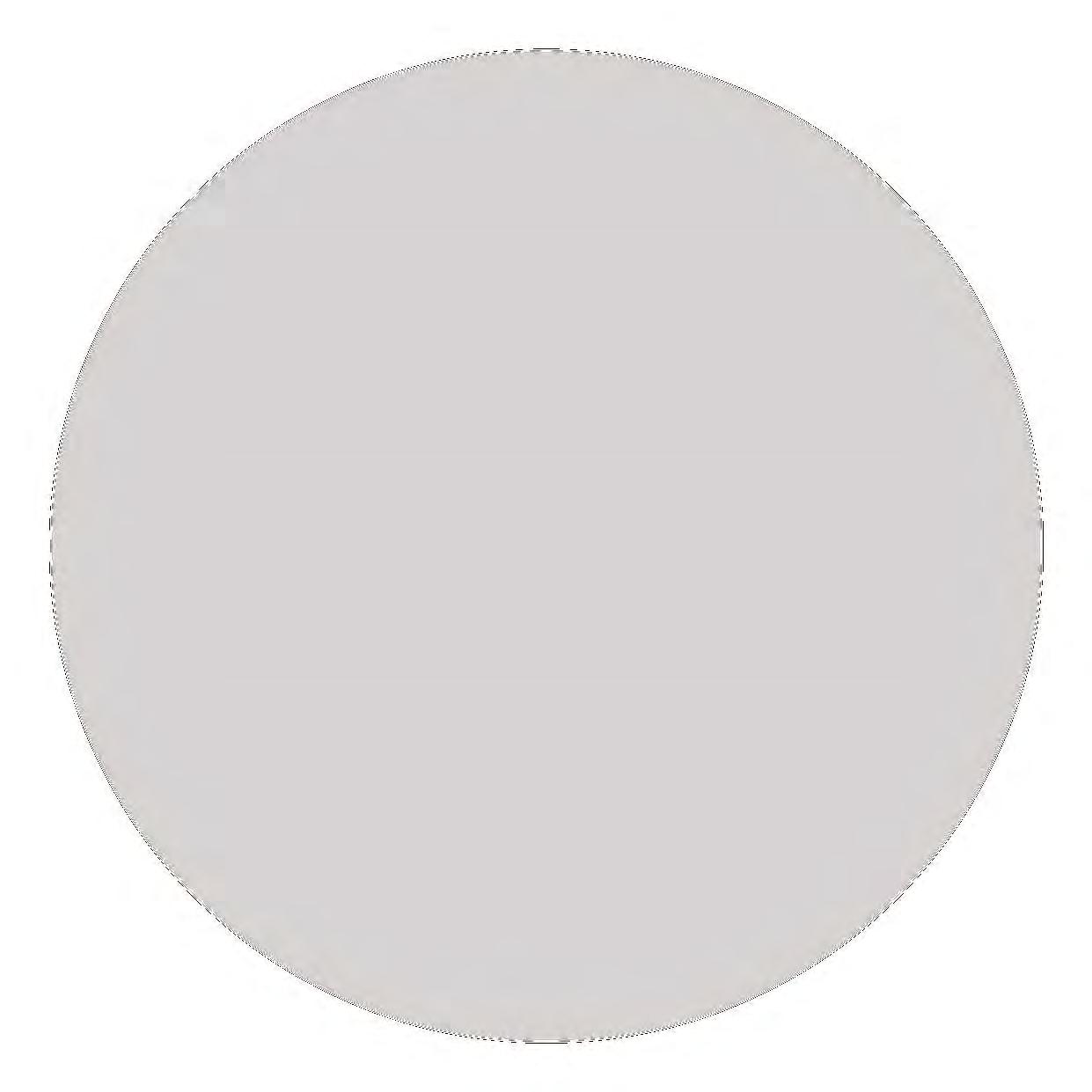
talent at a young age. In 1986, by the time he was eight years old, he was enrolled in the Mongolian Music and Dance College, studying violin and piano before graduating as a professional violinist in 1998. He’d already found fame three years earlier together with three classmates as Mongolian boy band, Camerton, who continued until 2004, releasing 10 albums and EPs. Bold launched his solo career the following year and in 2006 he founded the B Production record label. Alongside this he studied at the Mongolian University of Arts and Culture, produced the #Volume-1 and #Volume-2 projects to support new young artists, released 12 solo albums of new material and a compilation, The Best of Bold eight tours of Asia and Europe and appeared as a judge on the Voice of Mongolia for three seasons. So it should come as no surprise to learn that Bold’s latest project has been to construct the first international-standard recording studio in Mongolia, 440Hz Records, completed in late 2022.

“I founded B Production to create the first comprehensive record label in Mongolia, discovering new artists and organising concerts, events and productions,” says Bold. “Then, as part of our 16th anniversary, we opened our first all-inclusive studio, hired some foreign talent to help us out and opened 440Hz Records to improve the musical quality of Mongolian rock and pop and give it world recognition.”
Bold goes on to explain that the goal of B Production has always been to educate young artists: “The most pressing issues are production, management and financial issues. The recording must start with quality from the
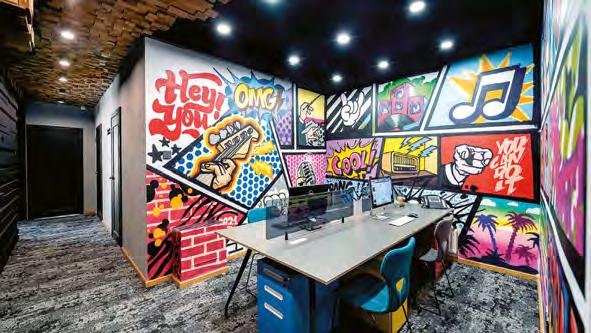
very beginning. Having worked as a judge [on The Voice of Mongolia] for three seasons, I’m focused on bringing young people from our team into production and discovering new artists.”
Another angle that 440Hz Records is keen to exploit is the film industry, with Mongolia recently passing legislation to grant tax rebates to foreign filmmakers. “Mongolia is such a suitable environment for photography, with beautiful nature and vast plains,” he continues. “We can provide all postproduction services, including Dolby 5.1. People who want to shoot foreign and Mongolian films can carry out postproduction in accordance with international standards, Mongolian filmmakers can use our studio for their soundtracks and artists – both international and local – can come and record their music. We are a one-stop shop.”
This is the country’s first international-standard studio; previously, recording facilities have been unable to handle large-scale orchestras and choirs, surround sound work and larger productions. Aside from the major Studio A and two smaller studios, 440Hz offers facilities for composing, teaching and dance. As this is such a major undertaking, it’s no surprise to learn that it’s been in the pipeline for some time. “We were first contacted by Bold and 440Hz in May 2015,” recalls Wes Lachot, president and designer at US-based Wes Lachot Design Group (WLDG). “They were in the middle of building the studio, had completed the live room and were in the process of building the control room. However, they weren’t happy with the acoustics or noise isolation in the completed live room, and felt they wanted a fresh approach to the control room design, so I agreed to fly to Mongolia to check out the situation.”



Neumann, AKG, Shure, Sennheiser, Audix, Flea, Burdukov and Line Audio Design are also supplied. The traditional window from the control room has been replaced with bidirectional cameras and monitors which allow engineers to communicate with artists with no latency issues.
Lachot designed Studio A’s control room as a ReflectionFree Zone mixing environment, featuring pivoting diffusor panels with live and absorptive faces on all four walls, allowing control over the acoustic qualities of the room, combined with a hexagonal cloud and soffits overhead. These features work together to create a flexible and
shipped later that year, with further models for Studios B and C following in 2016. After the rebuild of Studio A had been completed, a new 5.1 setup was specified consisting of LCR Quested VH3208 passive three-way monitors with H108s as surrounds and two X18 18-inch subwoofers. Quested AP750-2 amplifiers are used in bridged mode on the VH3208 and another on the surrounds, with an SBC800 handling bass management.
Central to Studio A’s control room is an SSL Duality elta 48-channel hybrid mixing console alongside DAWs running Pro Tools Ultimate, Logic Pro X and PreSonus Studio One 6 Pro, with a Burl Audio B80 Mothership providing 32 channels of AD/DA convertors. Outboard equipment includes an API 2500+ stereo compressor, a Manley Massive Passive EQ, a Tegeler Audio Creme RC EQ/compressor, a TC Electronics M6000 processor and Universal Audio Apollo and Antelope Orion 32+ audio
Studio B, a writing room, has a pair of Quested V3110 self-powered midfield monitors orientated in horizontal mode, while a further 5.1 system of V2108s and an X12 subwoofer has been deployed in Studio C.

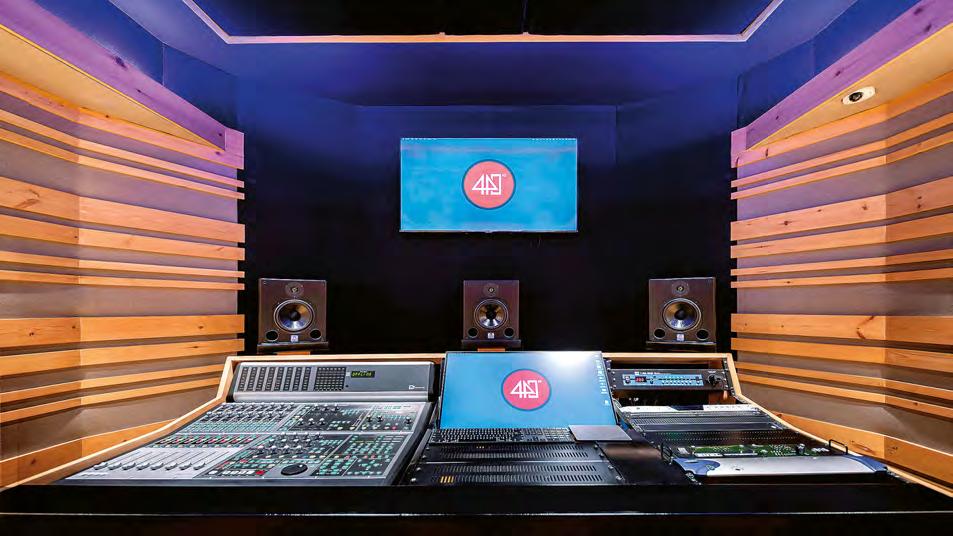

In September 2022, Shortland flew to Mongolia to carry out tuning and attend the official opening ceremony. “I spent a day with Bold and [mix engineer] Nyam setting up the system and ensuring its performance was as it should be,” he says. “WLDG’s designs worked in perfect synergy with the Quested systems. As is often the case, when the room is right, the tuning process flows well and feels natural. My overall impressions of 440Hz Studios and B Production are of pride and amazement at the work they’ve put in to making the facility the top studio in Mongolia. Bold thinks big and that attitude is on show throughout his work.”
Underlining the significance of the studio to the country, dignitaries at the opening ceremony included the Mongolian minister of culture and the British Ambassador. As the VIPs were taken on tours of the studio, Lachot and Shortland conducted several interviews with the local press.
On arrival, Lachot confirmed that the live room as it stood was problematic and advised that construction of the control room should be paused. All parties agreed that both rooms needed to be rebuilt from scratch to achieve optimum isolation and interior acoustics. The control room should be as acoustically accurate as possible and have surround mixing capability, while the live room needed the versatility to handle everything from traditional Mongolian instruments to modern pop, rock and hip-hop music.
“The studio was having issues with road noise infiltration due to its urban location,” Lachot explains. “In order to achieve adequate isolation, it was necessary to strip the building down to the bare steel skeleton and rebuild it, so that the ceiling and walls were floating from the rest of the building and the outer walls reinforced. It was quite a job to demolish the entire floor and start over but, to the 440Hz folks’ credit, they went ahead and did it, because they wanted it right.”
Studio A’s 90m2 live room has 3.5m-high ceilings and adjustable absorptive and diffusive wall treatments.
“We designed the live room so that all four walls can be changed from acoustically dead and absorptive to very live and diffusive,” explains Lachot. “This makes the room easily adaptable to different types of musical instruments and situations. It’s something we do in many of our highend rooms, but this is the first live room where we’ve done all four walls this way, so the room is about as musically versatile as you can get.”
Overhead, an acoustic cloud acts as a diffuser, increasing the perceived height of the ceiling. The room has been designed to create the best possible acoustic conditions for drums as well as for the studio’s Kawai baby grand piano. Hear Back Octo eight-channel personal mixers provide monitoring for up to 40 musicians, while a range of instrumental and vocal microphones from DPA,

adaptable space for different artists and instruments. The control room has been designed with a wide, deep sweet spot extending back to the client couch. This has been achieved by means of the side wall diffsorber trapping which compliments the RPG Diffractal diffusor array on the rear wall. The acoustic treatments were designed by Lachot to create a neutral monitoring environment and natural ambiance.
Bold’s relationship with Quested also dates back to 2015, when two of his mix engineers visited the UK. Roger Quested and Ollie Shortland set up a system in the Devon factory based on room plans they’d been sent, and the engineers were satisfied that Questeds were the right choice for the new studio. Monitors for Studio A were
“Certificates were presented, speeches were made and much fun was had!” recalls Shortland.
Bold is expecting 2023 to be a busy year for film projects and sessions with local musicians at 440Hz. “We’ve all gone through the difficult times of the Covid pandemic and its curfews and restrictions, and we are delighted to be the first to open a studio in Mongolia that meets international standards,” he says. Doubtless, this is a sentiment that will be echoed by the country’s local music industry as well as filmmakers looking to set their next project in this filmfriendly location.
www.quested.com www.weslachot.com
FOUNDED IN 1912 BY CHRISTIAN
MISSIONARIESTO Korea with one class of 18 students, the Seoul Foreign School (SFS) is one of the oldest international schools in the world. Located in Yeonhui-dong, Seodaemun-gu since 1959, 1,500 students from over 45 nations can today study an international curriculum within the International Baccalaureate framework, as well as the English National Curriculum. With an emphasis on creative excellence, the school benefits from the Lyso Center for the Performing Arts, which provides rehearsal rooms, a composition lab, a black box theatre and a mid-sized theatre, as well as the larger, 701-seat Mainstage Theatre. Hosting its first production in December 2003, the theatre was in need of a sound system upgrade. Following a stringent selection process, an L-Acoustics A Series system was supplied by local Korean distributor, Klausys, with system design and installation by Dreamsystec.
The school’s performing arts programme comprises five main season theatre productions which typically comprise 2–3 musicals and 2–3 plays depending on the season, as well as around 35 music concerts, the majority of which are held in the Mainstage Theatre. The space is also used daily for assemblies and rehearsals, as well as for special events and presentations. Before the pandemic, the school’s theatres hosted over 1,100 events between them during the academic year.
With its 20th anniversary approaching, the Mainstage Theatre’s audio system was beginning to show its age. “Over the last five years, a number of amplifiers have had to be replaced, and the speaker system that was installed was no longer in production,” explains SFS theatre manager, John Black. “Getting service and parts was going to become a problem. It took several years to get the budget for a new PA approved and, near the end of November 2021, I was notified that we had the money for the project, which needed to be completed during the summer of 2022.”

This finally gave the school an opportunity to address some issues that had been inherent with the previous system. One of these was the absence of an under-balcony fill, resulting in dead
zones that weren’t being reached by direct sound. Sloping wings connecting the first and second floors where the auditorium fans out on either side were also out of the range of the old system’s main speakers, and the muddy reflected sound was difficult to hear. There was also an absence of front fill. “Especially for musicals with live orchestras, hearing the actors was difficult because of the audience proximity to the orchestra,” says Black. “Additionally, with the old system, we frequently experienced feedback from the centre cluster as our stage extends just over 5m from the proscenium in an arc. When it was switched off, the result was a dead zone without direct sound in the first 5–6 rows of the audience in the centre.”
Once the upgrade had been approved, Black put together CAD drawings of the venue, listed the goals that a new system should meet and sent them to several local distributors for initial designs and estimates. “I wanted direct sound to every seat in the auditorium with less than 3dB variance in sound level, thereby addressing all of the coverage issues,” he explains. “As this is a multipurpose space, I also wanted to ensure we had a system that would meet the needs of musical theatre, classical music and speech events.

“As a school, lifespan, serviceability and distributor relationship are all very important and I wanted to ensure that we were being good stewards of the budget provided – not just for the initial purchase, but for the life of the system.”
Another main requirement was Dante compatibility – either natively or by another means – to connect to the school’s existing Dante network. “This was important as we often move our mix position, so being able to simply connect via Dante was a must,” says Black. Finally and simply, the new system had to sound good. One of the distributors that Black contacted was Klausys. “They have an impressive portfolio of L-Acoustics installations around Korea in professional performing arts venues,” he says. “I had been reading about the ever-expanding presence of L-Acoustics systems in professional venues and was impressed with their products, especially from a sound quality perspective. At first though, I thought that they would be well beyond the reach of our budget.”
around the limitations of our venue and finding solutions to those limitations. We often sat looking at a model of the design that had been built in L-Acoustics’ Soundvision software. Anytime I would ask a question or suggest a change, the engineer would quickly make the change in the software, and we’d see the prediction of it right away. Throughout, it was a dialogue bringing together their expertise with the L-Acoustics products and my knowledge of the use of the venue. Their process was by far the most collaborative that I have experienced in this type of project.”
After receiving initial designs and estimates, Black and his team narrowed the options down to three brands, including L-Acoustics. At this stage, they brought in demo systems from each brand to hear them perform in the theatre and learn more about each product. “Our staff were unanimous on the sound quality of the L-Acoustics system,” he says. “Between the





relationship we had built and the sound quality I heard in the demo, we’d be meeting our goals and ending up with a fabulous system.”
project came in under-budget. Once the order had been placed,
The Mainstage Theatre’s new system consists of main L-R flown arrays consisting of three A10i Focus and one A10i Wide mediumthrow concert loudspeakers and a KS21i subwoofer per side, plus a centre array of a further A10i Focus and an A10i Wide. Eight X4i compact coaxials handle front fill coverage, with four 5XT coaxials taking care of the under-balcony area. The system is powered by one LA2Xi and three LA4X amplified controllers. “For many areas of our auditorium, audiences will be able to hear direct, balanced sound for the first time in almost 20 years,” enthuses Black. “As a school we have a reputation for producing high-quality performances. This
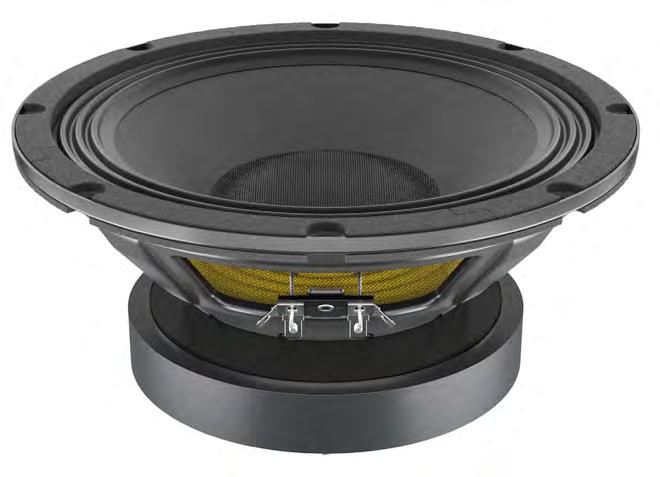 interface in the amp rack to connect the theatre’s Dante network
interface in the amp rack to connect the theatre’s Dante network
Consolidated tradeshows are no cause for alarm, says Dan Daley

to make the rent, trade organisations have been moving in together to ameliorate overheads, exacerbated by increases in drayage and other transportation costs. The trend precedes the pandemic: back in 2017 Germany’s Deutsche Messe announced the combining of the Industrial Automation event and the Motion, Drive & Automation show to form the Integrated Automation, Motion & Drives convention, while the Outdoor Retailer tradeshow announced it would cohabitate (and eventually acquire) the SnowSports Industries America Snow Show held in Denver. This year, Italy’s two largest food exhibitions – Cibus and Tuttofood – came together in Milan. In the US, that phenomenon’s been in full swing ever since pro audio’s preeminent expo the AES Show joined up with the NAMM Show nearly a decade ago. That melding came about in large part because the nature of the AES’s constituency had changed: musicians, engineers, mixers, producers and ambitious iPhone users were now one and the same, and NAMM had the better mass with which to achieve useful gravity among them. More recently, the AES and the National Association of Broadcasters (NAB) have been playing house together since 2018, at the Javits Centre in New York, as they did last October.


Since 2020, though, trade organisations have been feeling the economic pinch brought on by Covid and subsequent supply chain constrictions. While post-show press releases trumpet the increased attendance and larger number of exhibitors in the last year or so since shut-downs were lifted, increases are atop some pretty thin bases, but let’s face it: anything is better than no show at all. IBC was happy to have its first live show in three years in September in Amsterdam, even with attendance down over a third from the previous live event, in what’s become a common pattern. All relationships have their power dynamics, and the AES has been the poor relation in all its splices – both NAB and NAMM continue to have relatively robust standalone annual conventions in Las Vegas and Anaheim, respectively, when not being shut down by Covid – but it’s hard to say where the AES Show would be now without these couplings. But instead of being the star of its own show as it had been for decades, pro audio now shines as the support act for the broadcast and MI sectors’ expos, which attract larger audiences with significant interest in audio. It’s not a bad position to be in, enabling console and other big-ticket manufacturers to show off the battleship hardware to one set of eyes while touting the scaled-down or even virtual
versions of those to another cohort with large aspirations but smaller budgets.
Interestingly, while the delivery of esoteric scientific papers may be the AES Show programme’s historical raison d’être, it may be the event’s market-driven educational aspect that gives the expo its greatest lift. You almost didn’t need a microphone and PA as Jack Antonoff, the crown jewel of this year’s assembly of celebrity engineers and mixers, held several hundred listeners’ rapt attention on the Mix with the Masters stage in the back of the hall. The “lectures” even drew some of the broadcast attendees, recognisable by their shined shoes and lack of rucksacks. In fact, at a time when broadcasters are bemoaning younger audio professionals’ lack of interest in mixing for television, putting a few of that sector’s stars on a properly marketed podium and somehow working Taylor Swift’s name into it might help turn things around.
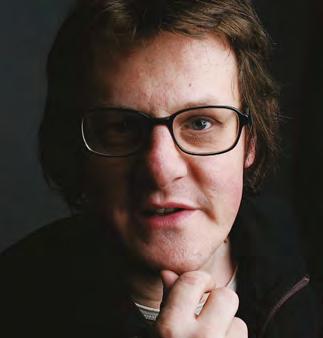
I would not in any manner mourn pro audio’s latest circumstances on the tradeshow circuit. It’s tough times for all, with recession looming. Rampant consolidation among companies is simply being mirrored by their trade conventions with the same hopeful expectations: less money spent setting a stage and more on what can be made of a show.
Phil Ward ponders the Eurovision Song Contest’s contribution to the climate crisis, and wonders whether it will survive Russia’s non-participation
ACCORDING TO THE WORLD METEOROLOGICAL Organization, which works regularly alongside the European Union’s Copernicus Climate Change Service, Europe is global warming’s front runner. Its latest report reveals that temperatures rose on average 0.5°C (0.9°F) between 1991 and 2001, and the same again up to 2021, outwarming even Africa and Asia. For an area unused to climate extremes such as wildfires and typhoons, these are statistics to rock the cradle of civilisation. It’s twice the rate of anywhere else.
There is only one explanation for this. In the very year that the CIA – yes, the CIA – published a report entitled A Study for Climatological Research as it Pertains to Intelligence Problems, the Eurovision Song Contest was won by ABBA. There may seem no connection but, last year, executive supervisor for the Eurovision Song Contest, Martin Österdahl, launched a campaign called #voicefortheplanet that “hopes to gather as many voices as needed to give our planet a voice and have the call for urgent action for nature echo not just across our TV screens but around the world”. The report is clear: “The western world’s leading climatologists have confirmed recent reports of a
detrimental global climate change. A forecast by the University of Wisconsin projects that the earth’s climate is returning to that of the neo-boreal era (1600–1850) – an era of drought, famine and political unrest in the western world.” This was in 1974, Donald. Nineteen Seventy-Four. Ever since, the Eurovision Song Contest has been heating up the region on an annual basis like the inside of a hot-air balloon, with a similar molecular weight exhibited by the music. The net effect of its toxic emissions, which fill the air with unrelenting soot for six solid hours, has clearly been detrimental to Europe’s glaciers. Scientists now predict that glaciers in the Alps will contract 80% by 2100, unless the producers of songs like Save Your Kisses for Me and Zitti e Buoni can be persuaded to “shut up and behave”.
The outlook is not entirely bleak. As a consequence of Russia’s invasion of Ukraine, and despite the fact that this helped Ukraine to win the contest last year, some countries are having to pull out of next year’s event. This is because Russia has been banned, so depriving the contest of one of its largest registration fees. Each participating country has to pay this every year in proportion to its size and,
although considerably smaller, Macedonia, Montenegro and Bulgaria have declared that they cannot afford it. In the case of the former, state broadcaster RTCG issued the following statement: “In addition to the significant costs of registration fees, as well as the cost of staying in Great Britain, we also faced a lack of interest from sponsors, so we decided to direct existing resources to the financing of current and planned national projects.”
The “cost of staying in Great Britain”, it turns out, is the cost of staying in or near Liverpool, the city that won a brief shootout to fulfil an obligation that Ukraine could not possibly fulfil. As the second-placed nation last year, the UK gladly stepped into the breach, despite looming recession and the ultimate embarrassment of selecting a host city with such a heritage of song. It’s like using Wembley Stadium to host tiddlywinks.
Perhaps we’ll see a return of the Intervision Song Contest, the former Eastern Bloc’s alternative for the millions of viewers without access to Western television. Putin has already commented on the “moral decay” of Eurovision, while raining missiles on Kyiv. Is he now preparing the ground? Intervision was held in Poland.
You’ve heard us amplify with perfect clarity. You’ve heard us in standing ovations. You’ve even felt us, in the standing hair on your arms. And now, get ready to experience all the ways we deliver honest sound. meyersound.com

Don’t just hear it. Hear it right.
AFTER 42 MONTHS, INFOCOMM SEA (SOUTHEAST Asia) finally went ahead at the Bangkok International Trade & Exhibition Centre (BITEC) with a compact footprint attracting systems integrators, consultants, buyers, influencers and end users keen to experience technology introduced since the start of the decade. Reunions proliferated across the show floor as technology seemed to take a secondary role to human interaction and catching up with industry friends and colleagues. The compact show floor swelled with a high turnout of largely masked attendees from Japan to New Zealand who seemed to take more interest in the exhibits and technologies as the show’s clock counted down. On the floor above, a packed Summit schedule with panel discussions, keynote speeches and seminars did little to dilute foot traffic in the exhibition. Most visitors had been absent from this year’s ISE and InfoComm shows in Barcelona and Las Vegas, so this represented the first opportunity to properly meet up again. The new normal –and the hybrid worlds we now live in – may have changed the way we work, and interact, but the human touch takes precedence.
together with digital signage displays on the HiSense and PPDS booths, attracted a rich mix of visitors. Zoom calls never looked like this.
In the wake of the pandemic, it was impossible to ignore the dominance of UC and VC technologies at this exhibition, with Lenovo, Microsoft, Neat and Jabra all participating. Vega Global was promoting Microsoft Teams and Zoom technologies long before the pandemic and, having themselves collaborated over videoconferencing for the past three years, the various APAC subsidiaries finally met in person.
Like audio, lighting was in limited supply. In addition to MA Lighting, Total Solution Marketing was presenting customers with brands including ARRI, Astera and zactrack.
As InfoComm SEA concluded, visitors were informed that a new show targeting the entire continent, InfoComm Asia, will be staged at the new Queen Sirikit National Convention Centre (QSNCC) in central Bangkok in just six months’ time. Like the traffic, the 2023 tradeshow calendar appears congested.

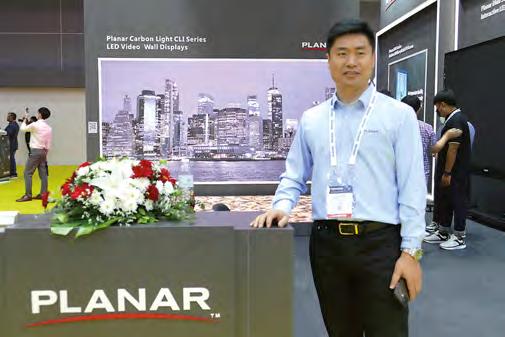


Premiering the ET-D3LEW200 and EB-PU2220B projectors respectively, Panasonic and Epson both claimed their stake as the developer of the world’s most compact and light 20k lumens projector. In addition to Christie’s Griffyn, the latest projection technologies drew those with the big budgets and ambitious projects. Despite the absence of Samsung, slim 2K and 4K indoor and outdoor LED walls from Planar and Leyard,
Michael Bosworth, Christie:
“InfoComm is a great opportunity to meet partners and friends and demonstrate new products. In addition to new projectors, the show is a good opportunity to demonstrate our software updates. We’ve met customers from India, Malaysia, Thailand and Taiwan, and getting all these people in one place makes this event a good return on investment. Although the volume hasn’t been as high as in the past, the people are all enthusiastic, and we’ll be here next year for sure.”
Matthew Deayton, Vega Global:
“Bangkok is in the centre of where Vega operates, so it was an opportunity to bring in around 70 team members including senior and sales managers together with engineers from our regional business units. Uniting the team is paramount, but we are also showcasing solutions on behalf of our partners. Three years have passed, so it’s like getting the band back together and it has provided us with the opportunity to set a strategic direction for the business.
Prominent Thai distributor, Fuzion Far East, assembled a mixed bag of audio and visual brands including Barix, Blustream, DiGiCo, JTS, LEA Professional, Nexo, Quest, Taiden and Vaddio. DiGiCo’s Quantum 338 consoles drew a mix of curious onlookers and experienced audio engineers to the busy booth, while education ministers took note of the latest Easy IP PTZ cameras. With the exceptions of Audac, Biamp, Bose, Golden Duck and Shure, the audiocentric booth was almost unique amongst the aisles of digital signage, video and conferencing products and, devoid of competition, the stand-out audio brands certainly made an impression.
2022 Dates: 2 – 4 November Bangkok International Trade & Exhibi tion Centre (BITEC)
2023 Dates: 24 – 26 May Queen Sirikit National Convention Centre (QSNCC)
Total exhibitors: 130 Attendance: 6,593
Contact: www.infocomm-asia.com
Cindy Xin, Leyard:
“This is our first appearance at InfoComm SEA, and we are showcasing the LV015 and MG018 LED walls for the outdoor, rental and installation markets. We are meeting professionals who are specifying large LEDs for control rooms, commercial applications and shopping mall projects. The market here is open for business and we are pleased with the high quality of visitors.”
“We are living in the age of collaboration, for which Panasonic is showcasing solutions. In addition, we are demonstrating our latest 20,000-lumen 4K projector which can be used for mapping, tracking and tagging in events. Visitors have made the effort to attend the show as you cannot replicate a 4K, 20,000-lumen projector on Zoom or Teams.”
Holger Reisinger, Jabra:
“This is our first InfoComm SEA, and the highlight on our booth is the AV solution for hybrid working. We’re happy that many customers and partners have attended and taken a great interest in our AV
Richard Lawn braves the Bangkok traffic to discover an equally congested show floor that was buzzing after a long absence
We’ve lived with videoconferencing, but nothing beats a face-to-face meeting and we’ll blend videoconferencing with human connections.”Traditional Thai dancers entertain registrants prior to the opening of InfoComm SEA Jason Yeo welcomed visitors on the Christie booth
conferencing solutions. We have more than 60% market share in speakerphones globally and possess a strong partner network here in Asia. Some visitors are less aware of our videoconferencing solutions and that’s why this is a perfect venue for us to demonstrate our capabilities and to welcome new partners.”
“We are showcasing a range of LED walls, displays and touchscreens including the interactive Helium A95T. I expected the show to be bigger, but it is focused on premium customers seeking solutions for control rooms and broadcast studios. Coming from China, we have all been restricted from going out to meetings and have had to get used to communicating online, so it feels amazing to be back in person.”
“Almost 100 attendees came to our preshow training here in Bangkok, which exceeded our expectations. Here at the show, we have met a lot of consultants and business owners, but the casual visitor has been absent. Attendees specifying Hall Technologies, BrightSign and Just Add Power on our booth are decisionmakers from Korea, Japan, Vietnam, Philippines, Cambodia, Indonesia and Malaysia. With the next show in May, hopefully things will return to the normal rhythm of tradeshows and introduction of new products.”
Nico Walraven, Neat:
“We enjoyed InfoComm India in Mumbai, so we were hoping to repeat that experience here in Bangkok. We have had a lot of good interactions despite the fact that we are a Norwegian company that only started three years ago. Zoom is one of our shareholders and we are now supporting Microsoft Teams.”
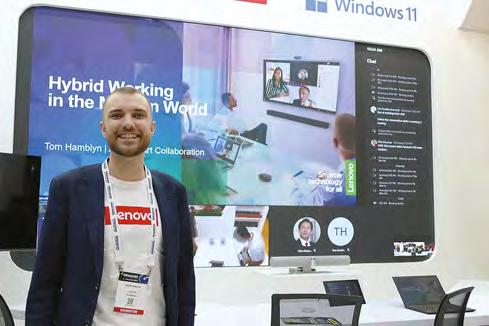

in six months’ time, it’s stressing my budgets to a certain extent, but the pandemic has everything out of sync, so we are all recalibrating. Epson is showing how our projectors offer maximum sustainability. Following feedback from installers working in limited spaces, Epson has downsized the existing 20,000-lumen 4K model by 64%: you don’t need four people to carry it like before and it consumes 30% less power.”
“Initially, we decided not to exhibit because of Covid, but we performed a last-minute u-turn, which has been vindicated; our expectations have been more than exceeded in terms of turnout. We are here to talk these visitors through the experience, and that really sells itself. Everybody loves the Biamp DSPs, and we now have a lineup
“It’s been a long three years since I was last here and I have been waiting for the opportunity to see my customers and friends again. Our headquarters is in Singapore, and we have the luxury of meeting people there on a regular basis, but I haven’t been able to travel to the Thai office. Alongside our lighting, staging and rigging solutions together with control systems and media servers, we are promoting bespoke solutions and ecosystems.”
“Since we last exhibited at InfoComm SEA, some things remain the same, like our obsession for high-quality audio


showcasing two different ecosystems: Microflex is for rooms that can integrate technology that you can adapt, while the Stem ecosystem is a more customisable solution, with a product that is more straightforward to set up and operate. We couldn’t be happier seeing the reaction of visitors when they meet us and get their hands on our products and solutions. Our expectation of the show has been met, but the interaction with our technologies has been surpassed. Bangkok attracts people from different parts of Southeast Asia, APAC and the world, so we are looking forward to being here next year.”
Rob Fowler, PPDS (Philips Professional Display Solutions):
“We felt the exhibition might not be that well attended, and I’m happy to report that we were wrong. In comparison to 2019, we took a reduced size stand, but the amount and the quality of visitors is higher, from end users to international systems integrators, and we have met many from Indonesia, Philippines, Vietnam and Singapore, plus a few people from Australia and New Zealand. Maybe the next show is coming a little too soon




“With next year’s development for InfoComm Asia, we shouldL–R: Vega Global’s Indonesian office represented by Peter Santoso, Nadia Anggita and Melvin Halpito Epson’s Amy Kwa with the newly launched EB-PU2220B 4K projector Planar ’s Jey Wang Schot’s Claude Sabourin presented BrightSign, Hall Technologies and Just Add Power solutions Neat’s Nico Walraven Tom Hamblyn promoted Lenovo’s smart hybrid collaboration conferencing solutions L–R: Shure Asia’s Kevin Koh with VP of global sales, emerging markets, José Rivas L–R: Biamp’s Yusof Ahmed and Acousticon’s Azizi Ala
but, given the traction that we’ve gained from this one coupled with the products and services we are developing, we’ve booked our normal-sized stand for the next edition.”
Tom Hamblyn, Lenovo:
“We’re here to establish our alliance partnerships with other brands and make others aware of Lenovo, promoting the fact that we’re more than a laptop company by highlighting a full suite of digital collaboration solutions for meeting rooms. Our goal was to ensure that customers are getting the right technology to support hybrid working by partnering with Microsoft and Jabra. Collectively we’re creating a better working environment as we move into the hybrid future. We’ve launched the ThinkSmart all-in-one video collaboration system on Windows. Our conversations have been with customers, partners, vendors and industry professionals rather than those coming for merchandise and have exceeded my expectations.”
“It’s a small show and needs to be larger; AVIXA’s decision to make this an Asian show next year is ambitious, although I hope it’s successful. AVIXA successfully stages InfoComm in North America and ISE in Europe, but I don’t know if everyone in Asia is






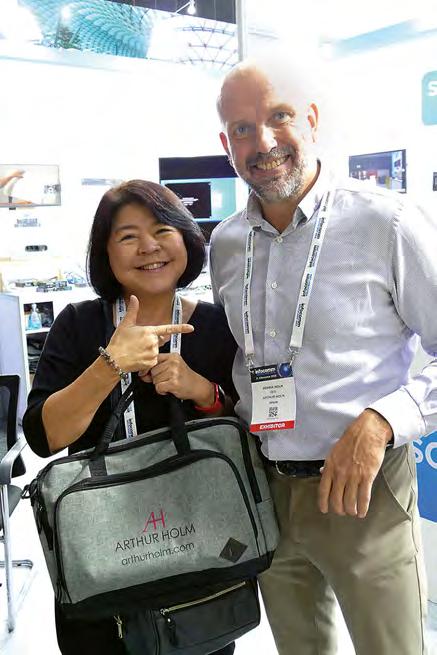
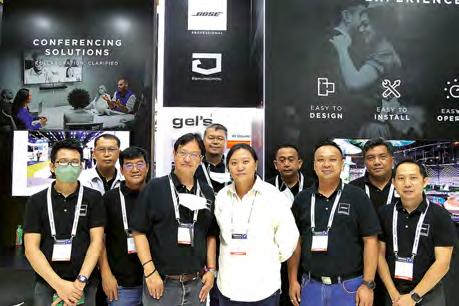



pull, it could be a great thing.”
“Honestly speaking, I had reservations before arriving in Bangkok, but my expectations have been blown away as the quality of visitors has been high and there have been quite a few influencers attending. There is an overwhelming eagerness to meet up again and it seems to be more about getting that connection back rather than seeking out what’s new. As we are still establishing ourselves here in Thailand, most of the contacts we are meeting are potential new customers. We also saw a lot of our distributors as we organised an event before the show.”
with our local and regional partners. This represents the first opportunity for many to see the products for themselves. In addition to receiving customer interest, our partners feel more confident seeing and feeling the Bose experience in person. In addition to networking, we are showcasing the Bose Work Professional portfolio that was released prior to the pandemic, the highlight being the recently launched VB-S videobar.”
“Following the VITEC acquisition of Exterity, market penetration has extended into existing verticals with our partners, but we also address new markets such as government, defence and broadcasting. The two businesses form a solution that allows us to deliver a lot more than previously. It’s hard to cover Asia, so meeting people from the different countries in one place has made life a lot easier. The show has been very well attended, which is a testimony to the show organisers and to the re-emergence of Asia following the pandemic. The show will become InfoComm Asia in 2023 and relocate to the new Queen Sirikit National Convention Centre, so we are looking forward to witnessing more visitors and exhibitors.”
IT’S A SHORT STORY BUT, IN JUST OVER A DECADE, A Berlin-based pro audio company has succeeded in its mission to radically transform the ways in which society engages with sound. That company is Holoplot, and its dedication to the design and development of the extraordinary X1 Matrix Array series – consisting of the MD96 and MD80-S modules – marks a new chapter for professional sound systems.
Having set a goal to provide users with full control over sound propagation and localisation, the engineering behind the grille combines a rich mix of science-based, softwaredriven and hardware-enabled technologies that Holoplot claims can create tailored, consistent audio experiences inside even the most complex acoustic spaces. Led by CEO Roman Sick since 2016 and employing over 130 staff at its Berlin office and beyond, the brand’s rapid ascent has been credited to the combination of two core Holoplot technologies – 3D Audio-Beamforming and Wave Field Synthesis.
Impressive demonstrations have resulted in the technology initially being applied for live conferences and concerts in addition to fixed multipurpose venues, theme parks and immersive installations. But as X1’s star seemingly burns brighter with each demonstration, its applications become ever grander.
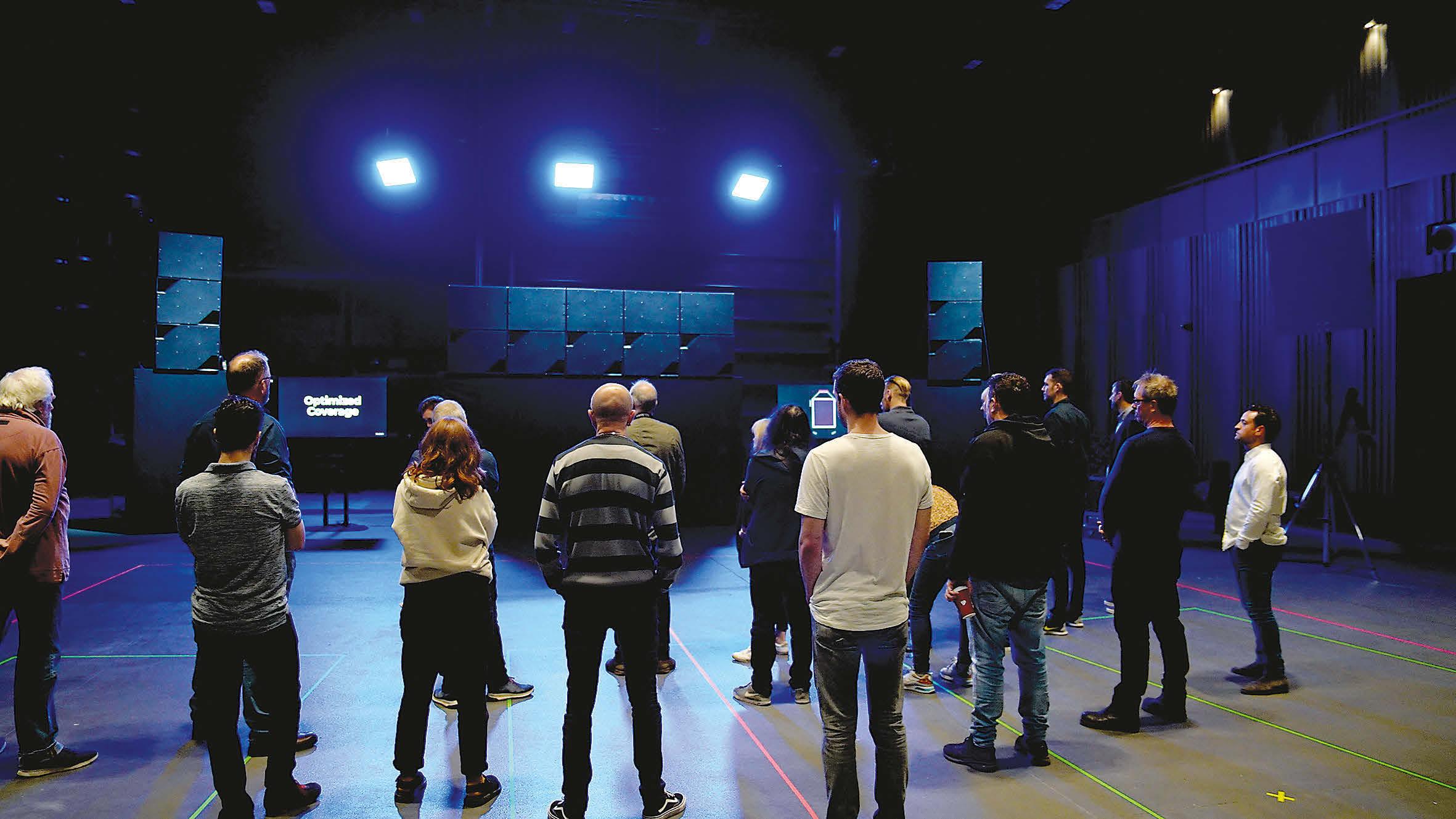
On first appearances at the Berlin Tempelhof headquarters, there is little evidence of the technological breakthroughs that Holoplot has delivered to date: the two-level open plan offices do not resemble a science fiction set. However, the characters acting out the roles betray the backdrop; the vast majority of Holoplotters are in their mid-30s or younger. A
hardware and loudspeaker experience, and more besides. Head of product Michael Kastner is a 29-year-old management and technology graduate from the Technical University of Munich (TUM). With a focus on electrical engineering and IT, his meteoric rise on the career ladder resonates with similar talent surrounding him. Like his colleagues he is fluent in English, the adopted language internally.
Following a four-year stint at wireless headphone producer Bragi, working on The Dash wireless smart headphones and leading the company’s B2B hearable solutions business, Kastner headed towards Berlin and the concept of Holoplot’s Matrix Array. “This turned out to be a very inspirational move for me as I could work with a team that wanted to challenge the status quo and create a unique product,” declares Kastner. “I was enticed by the fact that Holoplot had retained the research project spirit from its foundational years. Despite the seemingly insurmountable engineering challenges that lay ahead, I realised that we had the potential to play a role in transforming audio by challenging the underlying physics behind sound reproduction.”
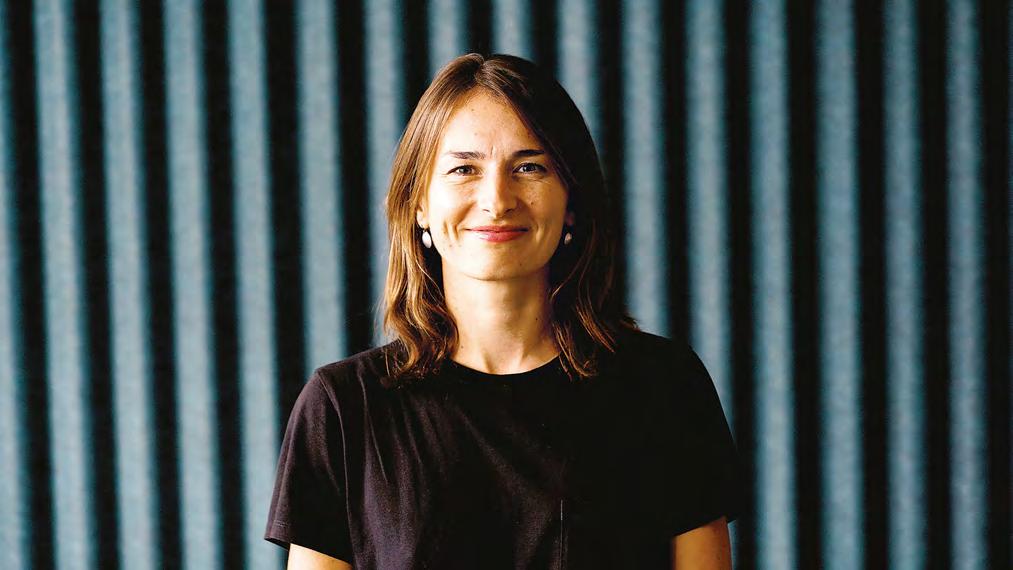

The creation of realistic and deeply immersive soundscapes as well as tailored sound fields is facilitated by audio beam shaping and Wave Field Synthesis – Holoplot’s 3D AudioBeamforming capabilities are based on the principles of these two theories. Kastner acknowledges that these core technologies are a continuation of Holoplot research fellow Evert Start’s field synthesis works that culminated in the creation of the first beam shaping algorithms commonly used in today’s column speakers. It enables the creation of authentic sound localisation with lifelike distance and directional perception of audio objects.
“I believe that the Matrix Array is a logical continuation of that movement but, in addition, we’re now able to control sound in both axes,” declares Kastner. “From 2017 onwards, we really embarked on the journey to make the existing Holoplot Matrix Array concept fit for concert-grade, highperformance applications. The traditional field synthesis approach usually combines point sources with signal
Richard Lawn visits Holoplot’s modest Berlin offices to discover more about a technology that’s anything butHoloplot’s head of product, Michael Kastner The demo makes the sale – a recent X1 demonstration at London’s UCL Pearl research lab
processing, but Holoplot’s work differs as the point sources that often surround the listener in an immersive system design are now packaged within a Matrix Array module.”
3D Audio-Beamforming precisely shapes and steers the beams in two dimensions which in turn create sound fields that provide optimal coverage of audience areas. “By enabling audio control in both the vertical and horizontal axes, you can direct the sound where you want it to go, actively avoiding where it shouldn’t,” explains Kastner. “A Matrix Array can create multiple sound fields based on 3D Audio-Beamforming, with each sound field having its own content shape and size. The result is perfectly shaped, tailored sound for specific audience areas.”
The Matrix Array enclosure comprises complex software engineering, digital signal processing, amplification and transducer components. “Our focus of innovation lies in the software and in certain parts of the hardware,” continues Kastner.
“Some of our components are sourced from established, experienced industry specialists in loudspeaker transducer and digital amplification design. Instead of trying to build up capabilities to manufacture every component required, we decided to


have been placed correctly before temperature checks and frequency response sweeps are conducted. Prior to packaging and shipping in specialised flight cases to freight forwarders, the enclosures are tested at maximum volume in a fully sealed chamber behind a 1.5-tonne steel door.

“I have to remind myself sometimes that our production facility is just three years old,” muses Kastner. “When Roman started to scale up the business in 2016, the first prototypes were assembled directly from inside our HQ office – a compact but functional one-room production line that quickly outgrew the space. To now look at a 4,000m2 production facility is simply amazing. Because the team at Holoplot come from such diverse professional backgrounds, the setup of our production line is informed by processes found in the automotive industry and consumer electronics. Digitalisation, attention to detail and traceability are key for us.”
Like Kastner, senior application engineer Natalia Szczepanczyk is another young, talented Holoplotter who made Berlin her home in 2018. Having graduated with a BSc in acoustics from the renowned University of Salford in Manchester, Szczepanczyk forged her career at several London-based international acoustic consultancies as well as a spell at Genelec in Finland. Part of

Szczepanczyk’s responsibility is to better explain the virtues of the X1 technology to consultants, architects and experience designers.


“As in most instances with audio, the demo makes the sale,” she says. “When I heard the demo for the first time, it really gave me goosebumps as it defies everything you’ve ever heard or think you know about sound, and it often has that same effect on our audience.”
Holoplot’s 2022 exhibitions and demos have provided invaluable customer feedback. “X1 becomes a creative tool in the hands of a content producer,” enthuses Szczepanczyk. Immersive technology can be regarded as a novelty, but she insists that it is here to stay. “Immersive is expanding from the world of entertainment to other applications such as education. I think we’re still at an early stage with a lot more to be explored. The future is in the way we integrate technology so it’s no longer visible or perceivable and you can really focus on what that technology is trying to convey to you.”
llluminarium in Atlanta and Las Vegas, two trailblazing cinematic experiences employing the unique audio capabilities of X1, actually combine entertainment and education as the creatives behind the project endeavour to convey real-life experiences to the masses. A 360° projection surface brings life-sized content such as the African wilderness to life, with X1 adding localised audio to enhance the sense of realism.
Holoplot has also been supplying hundreds of X1 modules to the MSG Sphere in Las Vegas as official audio supplier to this next-generation live entertainment venue due to open towards the end of 2023. Rumours abound that the Sphere’s high-performance sound system will be put to the test by global superstars U2 as the opening act. It will also house the world’s highest-resolution LED screens to date. “The Sphere is probably the most ambitious immersive audio project of our time, and we are very proud to be a part of this,” Kastner confesses, with Szczepanczyk adding that “the dimensions of the project are truly mindboggling. We have raised the bar for entertainment and, for once, audio is going to play a central role.”
It’s no surprise Szczepanczyk enjoys working on such new and different projects as Illumniarium and Sphere. A native of Łódz , Poland, she is clearly a good listener and works closely with R&D to convey real-world feedback leading to X1’s continued evolution. “The current focus is to make it easier for systems designers to adopt the combined hardware and software as a plug-and-play setup,” she explains. “We want our professional technology to be made accessible for all users in all applications.”
The wraps have already been removed from smaller-scale projects including a prominent mosque in Egypt. “The Masjid Misr project was an extremely challenging space,” she admits.
“It’s a beautiful 10,000m2 marble mosque with a 60m-high dome. No architect is going to allow loudspeakers to be fixed to the surfaces of such an ornate interior.”
Szczepanczyk emphasises that to evenly cover the mosque with audio and meet the specified intelligibility targets using steerable line array technology, approximately 30 loudspeaker positions would need to be fixed in various locations across the listening area. “My colleague, Emad El-Saghir, designed the system and managed to reduce this to just nine array positions that are seamlessly integrated with the interior which, as a result, only required minimal acoustic treatment. The intelligibility that X1 provides by focusing on the audience area is incredible when you consider the room dimensions and harsh surfaces.”
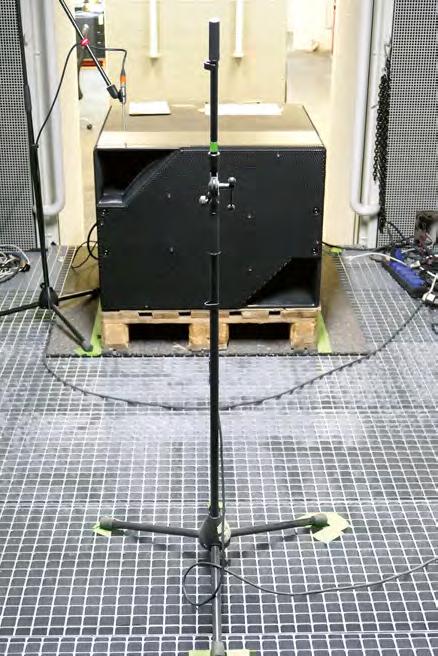
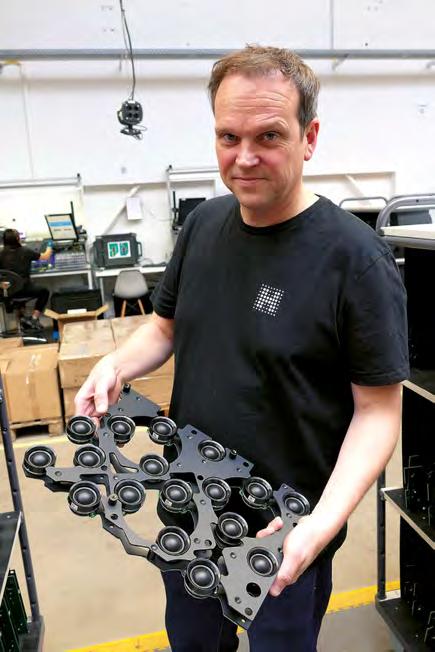
Having satisfied the architect’s aesthetic concerns, the Holoplot solution, crucially, passed the listening test. “Although the speakers are positioned up to 23m above the floor, the quality of sound has not been compromised,” says Szczepanczyk. “The worshipper is experiencing a higherthan-typical speech transmission index (STI) which ranges between 0.53 to 0.69 over about 90% of the prayer hall. In my experience as an acoustic consultant, I have never encountered such figures, especially in a space with up to a 6s reverberation time in the lower mid-frequency range.”
As the X1 demonstrations lead to increasing orders, Szczepanczyk and her colleagues are plying their expertise at a wider range of venues including, most recently, a New York theatre. “Performing at the Beacon Theatre was challenging for musicians as well as spoken word performers such as standup comedians,” she explains. “They were finding it hard because of the slapback returning from the first balcony, which contributed to general venue noise. Having installed an X1 system, our beams are programmed to avoid the balcony front to minimise distracting reverberations. By applying our 3D Audio-Beamforming – optimised beams projecting sound onto the audience area – each ticket-holder can be assured of having consistent, intelligible audio in a visually striking listed building. Engineers for some of the world’s best bands have loved their experience using our system and I’m excited to see who’ll play the Beacon next.”
Beyond the world of entertainment, other verticals are opening their ears to Holoplot’s revolutionary technology. “We are at the beginning, but we are starting to appreciate what else we can do and how we can improve on the basics we already know,” concludes Szczepanczyk. As the pages of the Holoplot narrative turn, the company’s deftly placed footprints are being revealed. www.holoplot.com

At Renkus-Heinz, audio is our passion. Our sound systems deliver pristine audio to the world’s most prestigious projects. From international airports and landmark museums to glass atriums and marble cathedrals, Renkus-Heinz has The Sound Solution for any space.



As the recognized world leader in digitally steerable arrays, we never want to settle for the status quo. That’s why we’ve adapted our renowned beam steering technology to provide performance never before seen in sleek passive columns with EN 54 compliance.


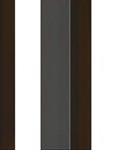



Welcome to the UBX Series.
renkus-heinz.com



In
today be captured in the field, using recommended equipment in a variety of scenarios. The challenges, trends and advances in location sound recording technology, including the benefits of wireless digital audio, were debated during the one-hour session. As viewers, we have witnessed the extraordinary rise of independent productions created by the likes of HBO, Disney+, Netflix and Amazon Prime Video. The supply curve can only go up as demand rises but, as inflation bites, some services
“With digital, the production workflow has been sped up greatly,” said Erman. “I previously wasted a lot of time on cable management, but now I can freely roam on set and focus on other aspects of the production with such ease of workflow.” However, owing to budget constraints and investment in analogue transmitters, Chong reported that many of his clients continue to operate in the analogue world. “Overall, I’m witnessing partial upgrades owing to the cost-prohibitive nature of

digital has ensured that boom operators can focus without being restricted by cable lengths on booming with no dropouts or loss of quality.”
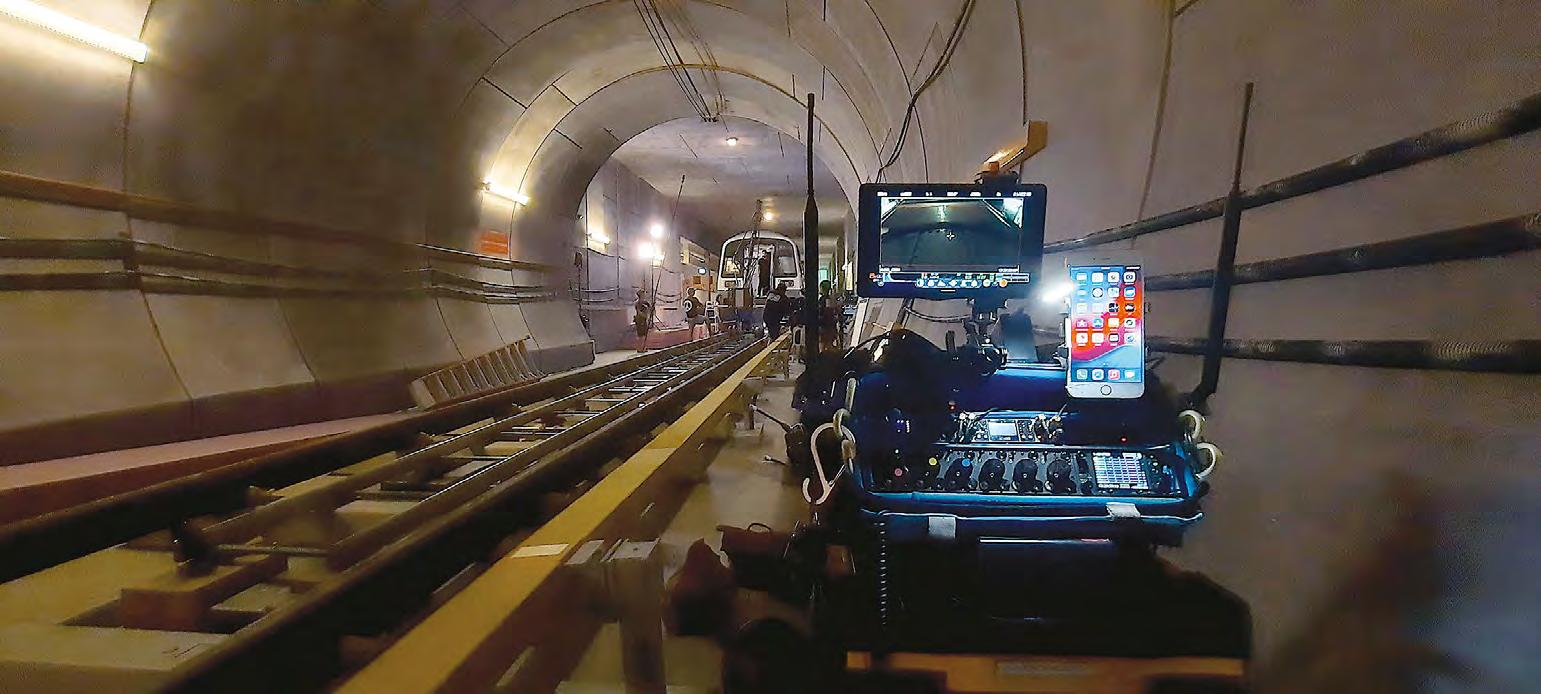
Today’s audio engineers face many challenges when recording on location. Asked to identify the main ones, Chong pointed to large-format live productions that require 16 channels or more of RF. “It’s no secret that the bandwidths have shrunk in every country as the large telcos have increased their share
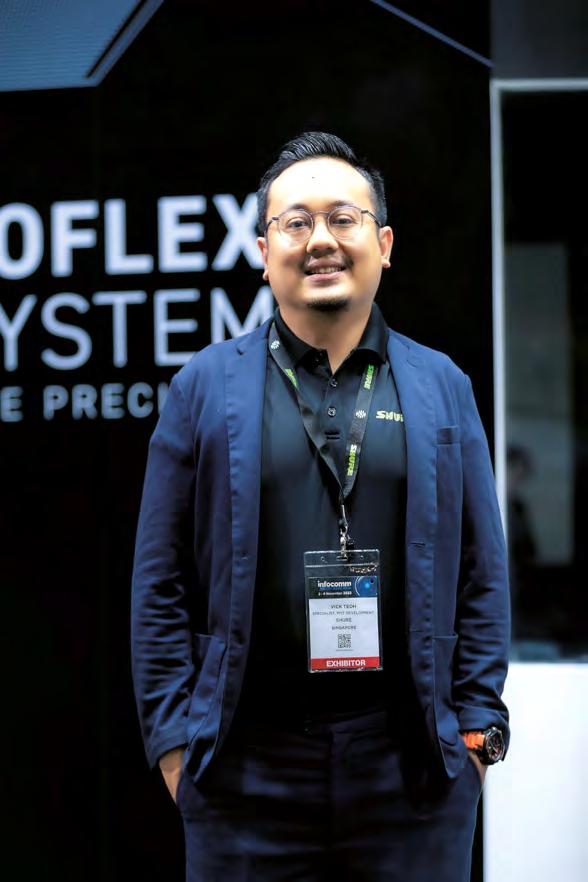
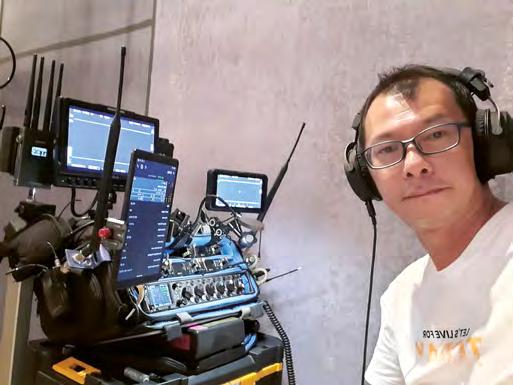 of
of
the spectrum, leaving only a limited wireless audio bandwidth. For example, with Shure’s Axient receivers, I can coordinate the frequency with the channel scan and redeploy the channel frequencies with a sync with the transmitters in roughly three minutes to the receivers.”

Erman’s expertise in mic’ing up on set has been enhanced by no longer needing to attenuate individual transmitters on concealed bodypacks. “Today’s directors are demanding more expressive content, generally encouraging the performers to whisper then shout within the same scene,” he revealed. “The audio must be captured accordingly with a system offering a high dynamic range without clipping. The availability of dual AD converters has helped me enormously in my work as I can now control the peaking and distortion of each individual bodypack transmitter remotely from the console or via an app. I’m saving minutes on each scene, which leads to hours over a
production and, more importantly, I’m not incurring the wrath of the director and the whole set by having to make constant gain adjustments.”

When looking for a portable wireless system, the panellists advanced the features they believe are important for successful location recording. “In addition to portability, I demand reliability, durability, range, portability and ease of use with a good GUI,” identified Erman. “Dual-channel receivers incorporating AES outputs have made a big improvement as the digital I/Os are far cleaner than analogue. The future is audio-over-IP. I’ll be
really helped, and I increasingly specify this as I only need one LAN cable for data, power and audio signal. In addition, high dynamic range is important and third-party GUIs such as iPads save time when setting up and monitoring. For example, you don’t need to oversee the entire Shure Wireless Workbench software when you are simply monitoring battery life, gain and levels. That can be done from the Shure Channel Plus app on a smartphone.”
It was little surprise to hear Erman’s predictions for future location recording trends. “AoIP networking is key,” he asserted. “Owing to the huge benefits it brings, next-generation wireless systems are integrating the technology. With one single cable providing 128 bidirectional channels, you can monitor and control all the audio devices, including recording, playback and synchronisation, on the Dante network.”
Chong continued this theme: “Dante networking is in fashion right now and I hope to see more portable device networking using this protocol. I would also like to see more digital console manufacturers collaborating with the wireless producers and integrating more features into the GUI than just battery status. With increased networking and ease-of-use features, users can focus more on their creative talents.”
Shure’s Teoh listened attentively throughout the webinar, recommending solutions to current challenges and offering the panellists a glimpse into the future. Making the point that in addition to new technology, “it’s all about mindset and education”, he emphasised the benefits of quick frequency coordination and automated interference detection, especially for critical live recording when sound recordists are only given one chance to get it right. No doubt he will forward the recommendations of these two renowned industry figures to Shure’s R&D engineers; after all, Axient Digital was developed with input from top audio professionals. This positive interaction between a manufacturer, a leading supplier and a respected end user was both refreshing and enlightening.
www.shure.com



From humble beginnings, Coda Audio’s growth has been driven by relentless innovation and R&D. As the company enters its next phase of development with a dive into the immersive domain,
 CODA AUDIO MANAGING DIRECTOR SVETLY
CODA AUDIO MANAGING DIRECTOR SVETLY
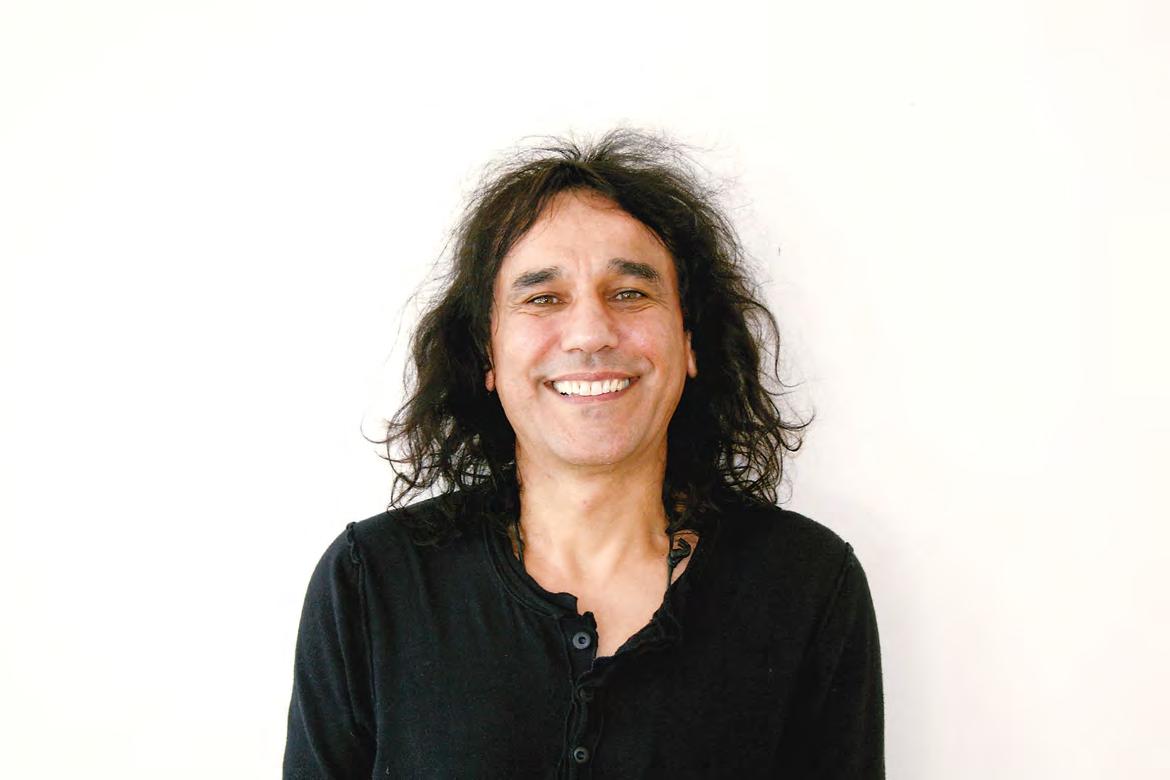
Alexandrov is rightfully proud of his workforce. “We employ almost 300 people in R&D, manufacturing, sales and marketing, with our R&D teams working in transducer design, loudspeaker system design, hardware, electronic and control software, prediction software, immersive software and processing,” he relates. “We cover the whole spectrum of pro audio design and manufacture.”
An ISO9001-2000-certified, purpose-built facility in Bulgaria handles the entire production process, from raw materials through to finished products by way of extensive metal and wood CNC manufacturing, plastic moulding, welding, transducer manufacturing and electronic production. “There is a lot of engineering and innovation in the manufacturing process involving a large team and a lot of know-how,” continues Alexandrov, adding that the company also designs and manufactures its own tools and machinery in-house, while production technologies are being created and improved upon continuously to keep the point source and line array systems for install and live performance rolling off the production line.
Coda has raised the bar higher still with the 2021 launch of the immersive Space Hub processor, which brings the manufacturer into a realm that goes way beyond 7.1. Currently capable of rendering up to 128 audio sources into 128 outputs, the 3U processor incorporates advanced spatial audio algorithms for positioning and moving audio in real time through a 3D soundstage.
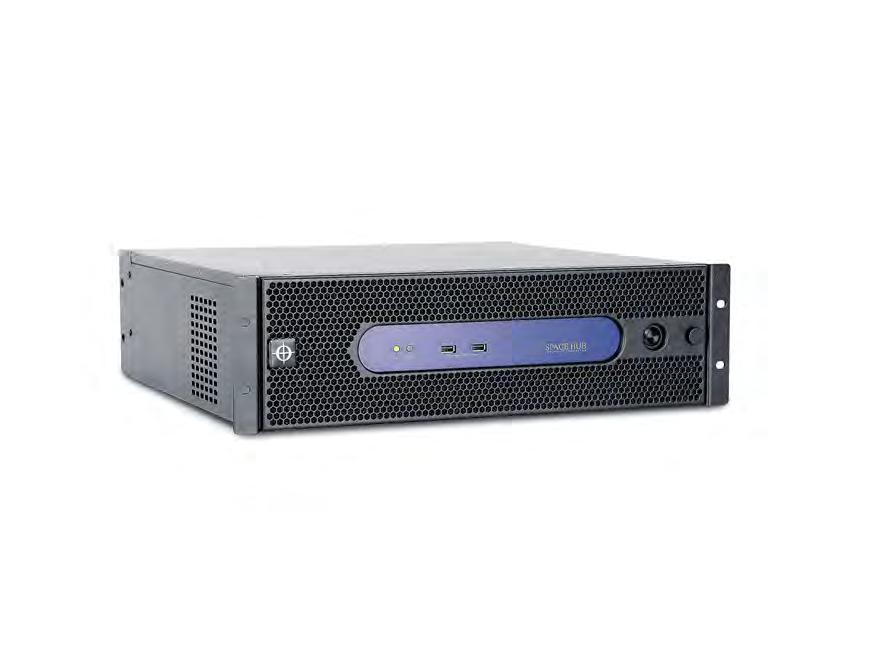
“Immersive technology opens new possibilities to artists, allowing them to express themselves in a very powerful way,” explains Alexandrov. “We decided to build our technology up from the fundamentals as this will allow us to reach greater heights in the longer term. You cannot simply create a processor and announce that you’re an immersive supplier. It won’t work very well, and it already exists.”
A select group of hardware, electronics and software engineers challenged to lead the project in 2017 started by analysing current problems that existed in conventional immersive systems. “Before
designing a processor, it’s important to design specialist drivers and engineer DSP processing with filters,” the MD continues.
“Fortunately, our team comprises the right balance of software, mechanical, electronics and hardware engineers. When you mobilise such talents, true innovation is sparked.”
That collective talent took a deep dive into algorithms, electronics and electroacoustics. “For the phase linearity of the system, it is vital to localise where the output comes from and how it moves,” explains Alexandrov. “Otherwise, you have an uncontrolled immersive situation whereby different speakers are performing at different frequencies on the time domain. The wavefront directed from multiple points will not be in phase, but it needs to be coherent. By creating linear phase response of all the input sources simultaneously – either at 100Hz or 10kHz and everything in between – you can deduce where it comes from. A true immersive performance demands precise positioning and
Space Hub differentiates itself from its rivals by claiming to “Basically,
The latest addition of the ADI-2 Series comes with a newly developed circuit board, improved specs & faster DSP for an outstanding transparent sound signature, extreme power headphone amplifiers including IEM power setting, super low noise 4.4 mm Pentaconn balanced connection, trigger out function for powering on/off external devices and finally an RIAA mode for directly digitizing vinyl discs in highest quality.



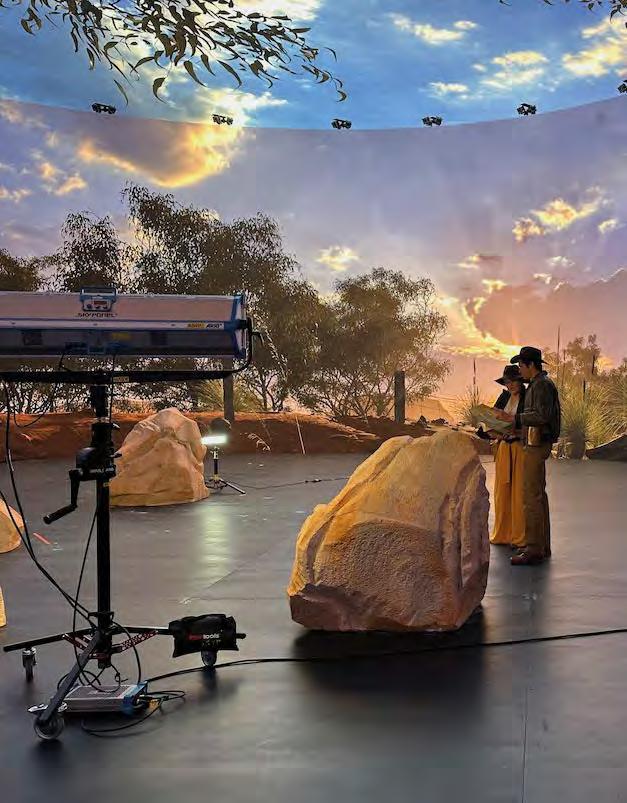
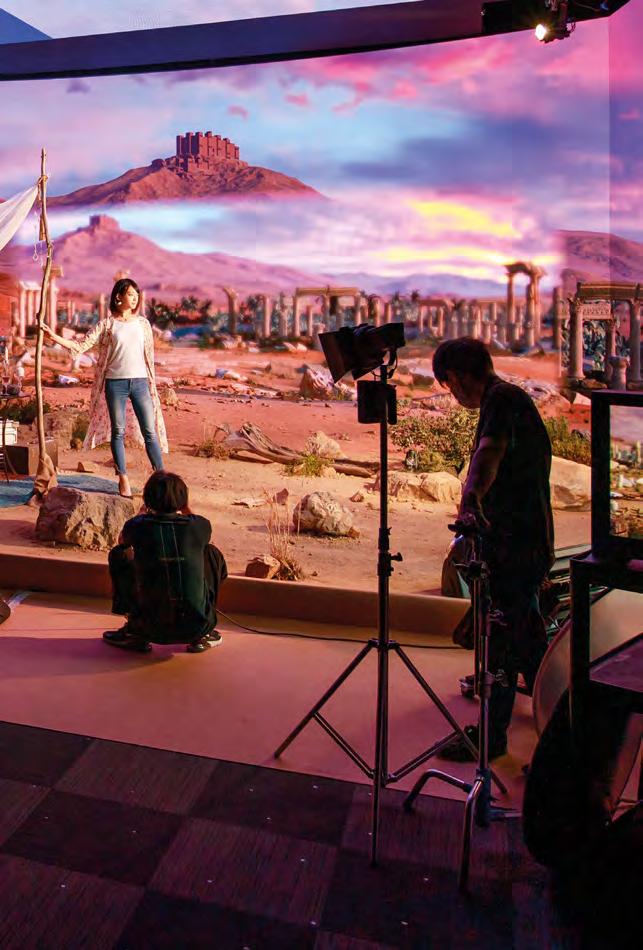



As an immersive experience, Space Hub goes beyond the processor. To ensure that the room acoustics are not excited easily, other aspects including resolution and reverb need to be considered. “The room cannot be heard when the distorted energy is higher than the reverb energy,” says Alexandrov. “You can hear the voice but may not hear the fine 3D details so, to include the detail, high resolution transducers must be designed at the outset. As an electronics designer and a manufacturer, Coda could easily implement the components into this technology. The progression to immersive became consequential, so we ceased to recognise problems as being in the electronics domain. With high resolution speakers and a coherent wavefront, it is possible to select and modify the algorithm within the space.”
As Alexandrov points out, the principal advantages of linear phase loudspeakers become more important in multichannel 3D audio. “Ensuring phase accuracy with no differences in

to only one algorithm, which could be too wide for some aspects of the mix.”

To date, Space Hub is proving to be a standout tool for live musical and theatre productions. “The next step will be to work with artists on their performances, and that will require a higher resolution format than the current version,” Alexandrov continues. “Immersive audio will evolve in more directions and inevitably become more compressed, with lower resolution streams. Consumer high resolution streaming is currently available in a stereo format but, for now, immersive remains a niche within the professional sphere. The future is immersive and, when
timing between the various loudspeakers, the essential timing information is transmitted to the listener with perfect phase coherency and transient accuracy. By incorporating linear phase response in our speakers, we differ from conventional immersive systems because 100Hz frequencies will arrive at the same time as 1kHz or 10kHz. Electronics are more precise on the time domain than the speakers and, with our DS FIR technology, we can linearise the phase response of the speakers from 50Hz up to 20kHz with less than 12ms group delay.”
The creation of a smooth workflow for immersive engineers has been credited to the successful marriage of electronics and software. Developed for the Linus amplification and DSP platform, System Optimiser software has been upgraded to control the electronics for Space Hub. Software engineer Lukas Klingebiel was one of several new recruits immediately drafted into the project at its inception in 2017. “By creating a flat phase response for all our speakers within the Linus amplification platform, Space Hub has the perfect base,” he explains. “By integrating this with System Optimiser, we can go a lot deeper and effortlessly from simulation to application and immersive mixing. All the various loudspeaker parameters such as dispersion, maximum SPL, coverage pattern and phase response need to be considered when integrating into the core.”
The Space Hub ecosystem remains a work in progress and the Hannover team is remaining tight-lipped with regards to its next, highly anticipated revelation in early 2023. Beyond the immersive technological workflow, however, Alexandrov is focused on training audio engineers from system setup to mixing, tuning and content creation. “Our current goal is to create greater transparency and extend ease-of-use features,” he says. “For example, by controlling the algorithms within each individual channel input, the engineer can focus on the lead vocal or any aspect of the mix, including the strings or acoustic guitar. Each source comes with its own dedicated processing. We don’t want to compromise ourselves like other systems by limiting ourselves
it becomes available to everyone, this will become the new standard, just as stereo replaced mono. For that to happen, more content will be required and, to produce more content, there will be a demand for higher resolution.”
Coda recently removed the wraps from two acoustically treated immersive audio demo rooms, the Auditorium and the White Room, at its Hannover HQ where invited visitors can experience the technology. Customer feedback is welcomed by the engineering team. “Coda is still learning, so we are inviting artists and producers to discuss their
requirements, so we can ultimately help them to achieve that,” says Klingebiel. “In parallel, we can continue to develop our immersive capabilities as we listen and learn from the artists, engineers and the audience.”
The rooms are equipped with 3D setups comprising HOPS8 dual 8-inch loudspeakers on several levels, SCV-F sensorcontrolled subwoofers and the pivotal Space Hub immersive processor. A second Space Hub serves as a backup unit to demonstrate redundant system configuration. In addition to content feeds from various DAW programmes, the native Space Hub control software, a mixing console with Space Hub remote control interface and an iPad with touch-optimised OSC control are available, together with a tracking system.
Sales and marketing director Dave Webster is keen to promote the virtues of Space Hub as he travels around the world meeting the brand’s numerous distributors and dedicated customers. “The interesting aspect of Space Hub is that the processor is just one part of the system,” he says. “Svetly and the team got the fundamentals right at the outset, starting with the loudspeaker components. It’s comparable to a live sound engineer placing the right microphone correctly, otherwise the input won’t ever be mixed correctly on the console, despite having a fantastic preamp. As an innovator, Coda does not accept a technology as it is and would prefer to change it. With our roots at the output end of the signal chain, it would have been far easier to take something off the shelf and re-engineer it but, ultimately, this doesn’t get you further than base camp. Space Hub is an exceptional solution and is a great example, because we are already two steps ahead and looking at adopting how the technology interfaces with our future roadmap.”

Like Webster, Alexandrov is also clearly enjoying working in the immersive world. “The only problem with having this much fun is that it makes you work even harder, but the results you get motivate you further,” he admits. “During this immersive evolution, I have witnessed key members of our team growing to become real family members. We can design in a manner that we want, not only in terms of audio quality but in terms of functionality and workflow.”
Having decided to create everything internally, Alexandrov admits that Coda initially made life very difficult for itself. However, with big reveals scheduled for early 2023 beginning with ISE, the German innovator can look forward to a chorus of market approval outside its traditional customer base.










THE NEUMANN KH 150 is a bi-amplified DSP-controlled loudspeaker that joins the manufacturer’s line of reference-class studio monitors. Featuring the same resolution as all other Neumann studio monitors, the speaker integrates a newly developed 6.5-inch woofer with what the manufacturer describes as “ultra-low distortion and high SPL capability”. Despite the cabinet’s diminutive size, the KH 150 has a flat frequency response from 39Hz–21kHz (±3dB) and is recommended for all critical listening applications, from broadcast to music production, including styles that require a deep low end or elevated listening levels.
The digital electronics housed within the cabinet allows the KH 150 to be calibrated via Neumann’s MA 1 Automatic Monitor Alignment. In addition, the unit is said to be “extremely energy-efficient”, with Neumann engineers having developed patent-pending amplifier technology that combines superior audio performance with the energy efficiency of Class-D. Although the KH 150’s dual
amplifiers deliver up to 145W to the 6.5-inch woofer and 100W to the 1-inch tweeter, they reportedly only consume 17W when idle. Auto-standby reduces power consumption to 0.3W when the KH 150 has not been used for a period of time.
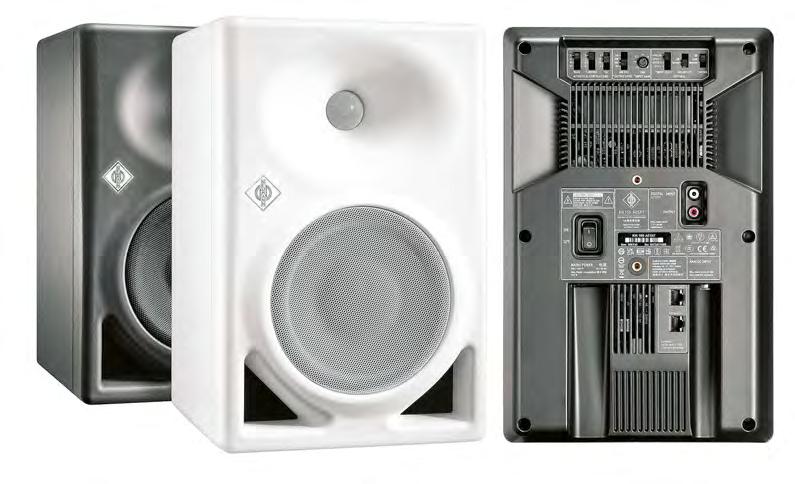
Connectivity on the cabinet comprises analogue and digital inputs (S/PDIF). The monitor will also be available in an AES67 variant with redundant AES67 audio network ports that are fully compliant with broadcast standards such as ST 2110, ST 2022-7 redundancy and Ravenna. At the same time, the variant will be compatible with Dantegenerated AES67 network streams.
The manufacturer has also reissued the M 49 studio microphone. Characterised for its continuously remote-controlled polar pattern, the M 49 is in great demand both among collectors and as a vital recording tool.
Hand-made and hand-soldered in Germany, the M 49 V is a reissue according to original specifications and design documents from the Neumann archive. It uses the same circuitry as the most popular historical
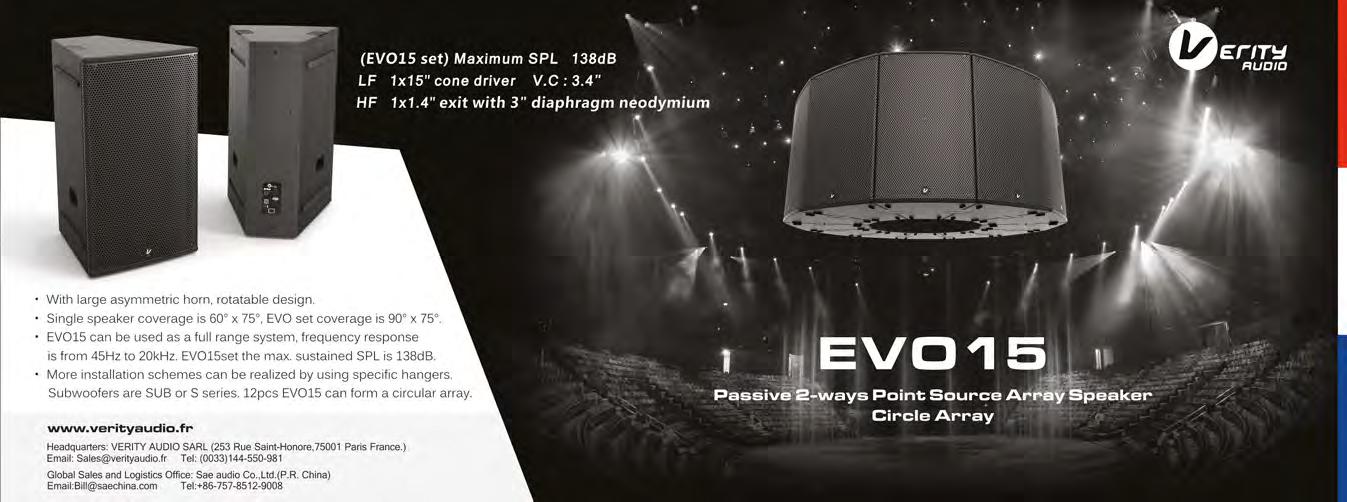
revision, the M 49 c, but with a lower noise, hand-selected sub miniature tube. The pattern control unit automatically adapts to the mains voltage and is also compatible with old M 49 microphones. Replacing the old bayonet connector, the M 49 V uses the RF-tight connector of the historic M 249 broadcast version. In addition, the M 49 V can be configured via internal switches, either as a made-to-order option or postsales by Neumann Service.
Protecting its BV11 output transformer from unwanted distortion, the infrasonic filter can be lowered from 30Hz to 12Hz, resulting in the frequency response of the early M 49 up to 1957. Improving the signalto-noise ratio by approximately 3dB, the M 49 V can be set to a fixed cardioid pickup pattern when used exclusively for vocals and speech. The M 49 V comes as a set with remote pattern control unit, microphone cable and a classic “yoke” swivel mount in a handcrafted case.
A REIMAGINING of the popular AT2020USB+, the AT2020USB-X is the latest microphone from Audio-Technica and is a cardioid condenser USB model designed for musicians, streamers, podcasters and other content creators. The AT2020USB-X is said to offer the same sound as the earlier model but has been upgraded to feature 24-bit/96kHz sample rate and USB-C connectivity.
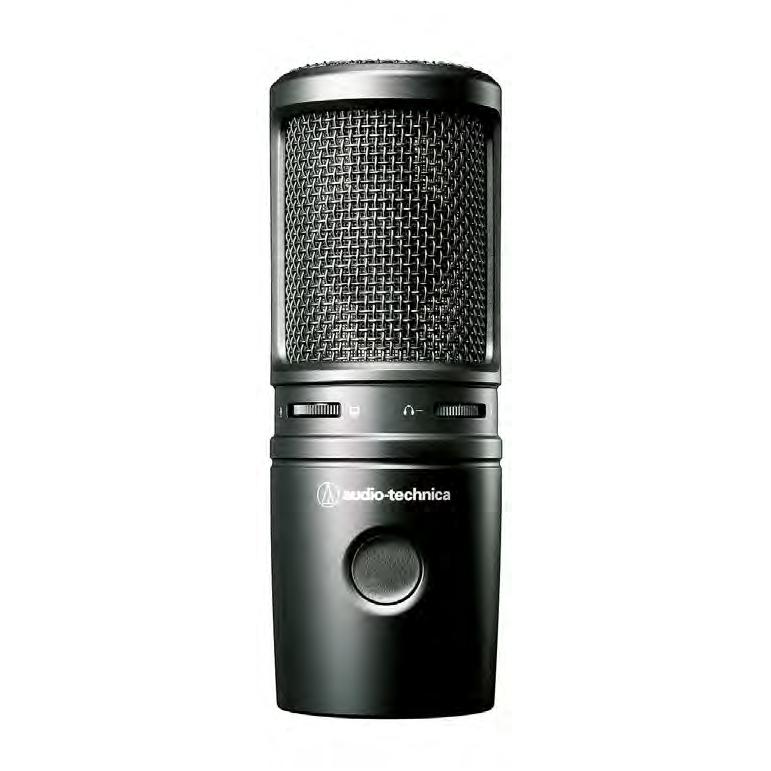
In addition, other improvements to the AT2020USB-X include a soft-touch capacitive mute button on the body to quickly mute audio at the microphone, two-state LED indicator ring lights for when the microphone
HAVING STARTED working for Pearl Microphones in Stockholm in 1954, Bernt Malmqvist has amassed 68 years of experience. In early 2020, Malmqvist was provided with the opportunity to develop his own signature microphone. Following two years working on the project, the Pearl ELM-T Bernt Malmqvist Signature Edition true tube microphone has been unveiled. The large condenser is made more distinctive by its Rolex Green Nextel finish and variable polar patterns. With power supplied by a custom-made PSU from Andreas Grosser in Berlin, the microphone is built around the unique Pearl ELM capsule with a 7:1 height-to-width ratio.
In combination with a true tube amplifier, the Signature Edition condenser reportedly provides a warm and detailed sound with a very smooth off-axis response. Very low for a true tube design, the large diaphragm maintains the self-noise at 15dBA, and the frequency response extends beyond 20kHz.
Built entirely by hand in Åstorp, southern Sweden, the ELM-T is packaged in an aluminium case with a PSU, cable, shock-mount and an individual frequency chart. Acquired by its former sister company Milab Microphones in 2017, Pearl Microphones remains one of the oldest, continuously operating microphone

AMERICAN STUDIO equipment manufacturer Warm Audio has added two models to its portfolio of classic recording recreations. The WA-CX12 is described as a fait hful recreation of “the most natural and balanced tube mic of all time”, the AKG C12, while the WA-47F re-envisions the high SPL, low-noise classic ’47-style FET mic. The original AKG C12 was produced in Austria from 1953–1963 and is the definitive version of the 12-style mic, lauded for its organic tone and pleasing top end. Warm’s WA-CX12 sound profile and circuit design are inspired by that original production run of only 2,500 mics, which have become highly coveted for their ability to capture the natural beauty of vocal performances, room sounds and other far miking techniques. The WA-CX12 is a large-diaphragm tube microphone with premium components handinspected in Austin, Texas. Like the original, the WA-CX12 tone is mostly flat until a slight dip at 2kHz with a gradual boost between 5–10kHz. At the beginning of the chain, the WA-CX12 has an edge-terminated, all-brass

CK12-style capsule, which remains true to the frequency response of the original 12-style microphones. This capsule allows the WA-CX12 to have nine polar patterns, including the typical cardioid, omni and figure-of-eight, in addition to six intermediate patterns. Moving down from the capsule, the WA-CX12 uses a premium 12AY7 vacuum tube for added warmth. At the end of the circuit, it uses a custom TAB-Funkenwerk (AMI) USA Output Transformer, which reportedly gives the mic a very
manufacturers in the world, founded in 1941. www.milabmic.com
is powered on or muted and an improved custom desk stand to serve as a secure base. The AT2020USB-X also features a built-in headphone jack with volume and mix control to let users directly monitor the output with no delay, as well as blend the microphone signal with computer audio. The AT2020USB-X has a high-output internal headphone amplifier. Accessories include -inch-16 to 5⁄8 -inch-27 threaded adapter, the desk stand and a 2m USB-C to USB-A cable with a USB-A to USB-C adapter.
www.audio-technica.com
full, wide and open sound, getting the most out of the capsule and additional circuit components.
The WA-47F is a recreation of ’47-style FET originally released in 1969, which gained massive popularity inside studios for its ability to handle fast transients with exceptional detail. The WA-47F shares the same sonic profile as that original microphone. It takes the sound of the WA-47 tube mic and swaps the valve for solidstate FETs, meaning there’s no compromise between capturing rich midrange, detailed bass and handling very loud sources. At its core, the WA-47F uses a reproduction of the vintage K47-style capsule found in the original microphone for ultra-wide frequency response and detail, and is driven by a custom TABFunkenwerk USA Output Transformer. The WA-47F pairs premium Fairchild FETs with polystyrene and Wima capacitors and the AMI output transformer. The –10dB pad gives extra headroom for loud sources that need to be kept loud. To eliminate unwanted bass frequencies on sources like lead vocals or electric guitar cabs, the included 140Hz low-cut filter can be engaged to save from unnecessary post-EQ.
www.warmaudio.com
and requests for a presenter mic that can be worn with any hairstyle and it is also unobstructive and easy to install, the MKE mini can be used when a hairstyle doesn’t allow for a head mic or when wearing an outfit that offers no possibility to clip a bodypack. All that is needed for setup is to connect the microphone to a bodypack and attach a lanyard.

Housed within the MKE Mini is the same KE 4 capsule derived from Sennheiser’s MKE 2 microphone, with improvements said to be made to provide a warm and distortion-free signal, even at high sound pressure levels.
www.sennheiser.com
A NEW no-fuss lavalier microphone for presenters has been unveiled by German manufacturer Sennheiser. Described as a high-quality, miniature omnidirectionalFOCUSRITE HAS made its Vocaster DM14v dynamic microphone available in two additional packages. Previously part of the Vocaster Two Studio interface bundle, the DM14v can now be bought as a standalone unit and as part of the company’s recently launched Vocaster Broadcast Kit.
Geared towards podcasters, streamers, vloggers and voiceover artists, the Vocaster Broadcast Kit pairs the DM14v with the Vocaster HP60v closed-back headphones and comes bundled with a 3m XLR cable.
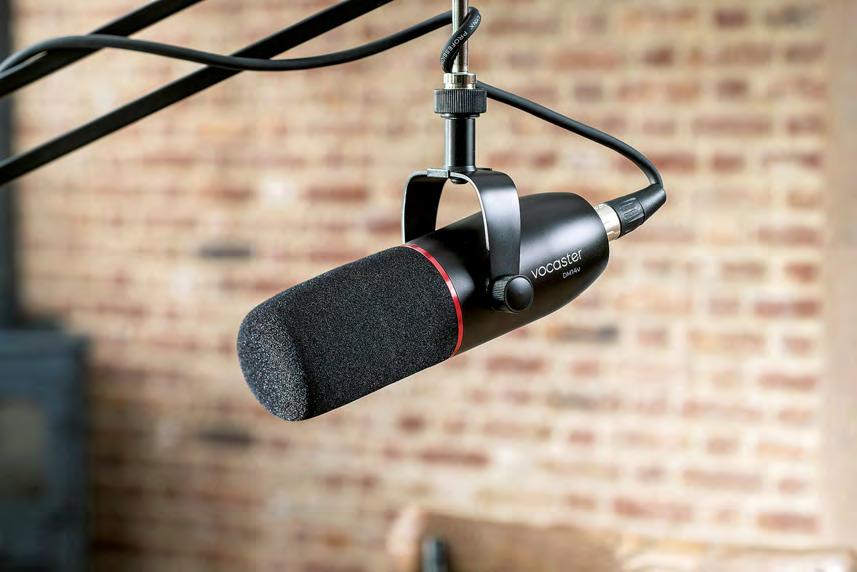

The DM14v is a low-sensitivity cardioid polar microphone designed for focused
NEW IP-BASED Studer products have been unveiled by Evertz that include several additions and upgrades to the range as Evertz focuses on integrating Studer technology into its own live production workflows. Studer Vista digital consoles and Infinity Core audio mixing and processing are now part of Evertz Software Defined Video Networking (SDVN) solutions, resulting in the release of the Vista 1 Carbon and Infinity-ST server core.
The Vista 1 Carbon is a 22-fader, all-in-one compact console designed for live events, broadcasting, remote and OB productions that boasts a digital signal processing engine offering over 1,000 channels and busses, and more than 6,000 physical I/Os. The console uses the same application t ware across the entire range, providing a painless transition from one console to another, whether working on the Vista 1 Carbon or the 72-fader flagship Vista X. In addition to the Vista 1 Carbon, the new Studer Infinity-ST server core, which features a new CoreLink card audio interface that provides both IP-based ST 2110-30 and Studer proprietary A-link native connectivity, has been introduced. With more than 6,000 inputs and outputs, the Infinity
ST1100’s CPU technology also boasts 1,100 simultaneous DSP channels and busses to mix, resulting in a cost-effective alternative for those not needing high-level horsepower. The Infinity-ST series maintains Studer’s sample-locked 100% redundancy option, providing extra protection for highstake productions.
Completing Evertz’s new Studer line-up is the Micro Series, a digital audio mixing system in a compact package that is said to give users all of the tools needed in a single box. Consisting of the core unit, a graphical

user interface and an optional fader control surface, the Micro Series is intended for use in radio and TV broadcast, production studios, ENG/DSNG and more. Its HTML5based user interface means that the unit can be fully controlled from the web browser on virtually any tablet or computer. Evertz has also launched new solutions to assist transition to IP. NEXX is described as a compact and robust 12G-SDI product that is fully passive and has a modular-based frame and main interface/backplane that offers redundant control and ease-of-swapping
I/O modules. With native full audio shuffling and ability to tap into additional licenceenabled features, the platform also offers an integrated, software-enabled multiviewer.
The ev670-X30-HW-V2 Virtualized Media Processing Platform has been designed to make the management of high-quality video signals easier and more efficient. Supporting both 12G/3G/HD-SDI and IP interfaces, the device also features new applications (APPS) that can be configured on the platform’s FPGA-based processing cores to provide multiviewers, gateway and video, audio and ancillary data processing functionality for both SDI and IP.
Finally, the MAGNUM-OS orchestration, control and analytics system is most suited to OB trucks, remote and largescale broadcast facilities and facilities with multiple locations. The system’s bandwidth management ensures that large volumes of SMPTE ST 2110 signals, including critical PTP signals, can be moved and managed to and from devices spread across facilities, or multiple facilities, using 25/50/100/400GbE network connections.
www.evertz.com
DIGICO HAS unveiled a theatre-specific variant of its Quantum3 38 mixing console. Building on the audio performance offered by the standard model, the Quantum3 38T provides theatre sound designers and mixers a programming and operating workflow that enhances the cue system with the manufacturer’s Auto Update and cue data management tools.
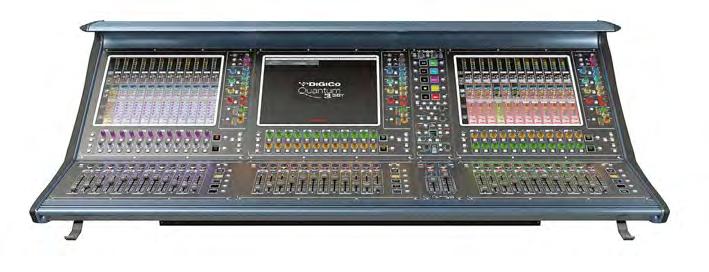
Auto Update allows designers to establish intricate inter-cue relationships, with changes made to channel settings automatically propagating to other related cues. Character variations, often a result of costume and prop changes, are handled with the Alias function, and cast changes
are managed through the Players function. The desk’s channel processing and mixing functions are identical to its live focused counterpart, but the crosspoint matrix gains individual nodal delays and matrix aliases. This enhanced matrixing system plays an important role within complex theatre output processing and has reportedly been achieved without compromising any of the unit’s general processing capabilities. The manufacturer’s theatre-specific software extension can be added to any Quantum3 38 with a simple unlock code to enable the features.
www.digico.biz
FUNKTION-ONE HAS launched the Evo X. Utilising the manufacturer’s waveguide technology, it provides 90° horizontal dispersion and high SPL. The Evo X is suited to live venues, small clubs and theatres, due to its ability to be deployed to a one-per-side or four-point system. Its 15° vertical dispersion is said to ensure the sound is concentrated on the audience, minimising reflections and room excitement. Featuring the same isophase diffraction high-frequency waveguide technology as the Vero VX, the Evo X’s optimal audience area is around 10m x 10m.
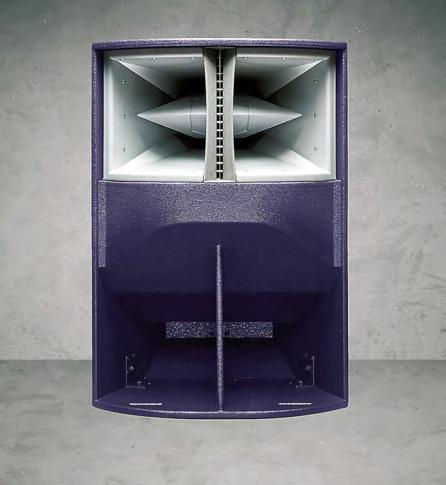
Operating across a 50Hz–18kHz band width, the speaker reportedly works well alongside the manufacturer’s F Series and BR Range bass speakers for low-frequency energy. The wide bandwidth 8-inch midrange extends to 5kHz, minimising stress on the 1-inch high-frequency driver, while the 15-inch mid-bass handles 50–280Hz.
The Evo X weighs 47kg, measures 604mm x 859mm x 540mm (WxHxD) and is available with a custom wheel board
which cradles the loudspeaker’s curved front. It is available in a range of colours.
www.funktion-one.com
HAVING BUILT up its L-series of pro-ribbon line array modules into a comprehensive range to bring hi-fi sound quality to any size venue, Alcons Audio has released the LR24/120 mid-size array, intended to be an important extra tool for medium and larger applications. The LR24/120 is designed to complement the narrower dispersion, longer throw of the LR24/90.
The three-way, bi-amped LR24/120 features the bespoke RBN1202rs 12-inch pro-ribbon transducer with acoustically and electronically symmetrical component configuration, delivering a natural cylindrical wavefront with pattern control in both the vertical and horizontal plane. Thanks to the RBN1202’s power handling of 2,500W, enabled by its 12-inch voice coil and an RMSto-peak ratio of 1:15 from 1kHz–20kHz, high intelligibility is complemented by dynamic headroom reserve.
The pro-ribbon driver is complemented by a mid-frequency section comprising two 6.5-inch midrange transducers with a neod ymium motor structure. The lowfrequency section features new-generation 12-inch transducers, fitted with a large, dual
3.5-inch voice coil neodymium motor. As with all L-series systems, this is assisted by Signal Integrity Sensing (SIS) pre-wiring. This circuit ensures dynamic cable/connector compensation between the LR24/120 and the Sentinel amplified loudspeaker controller which powers it, providing undistorted, natural sound reproduction regardless of cable length and amplifier impedance load. The flying system facilitates both compressed and non-compressed suspension, while enabling angle-setting on the cabinets without lifting the array. It has a WLL of 24 cabinets under 10:1 safety.
Alcons has also introduced its LFE18sl subwoofer, a slim-sized reference subwoofer system for demanding listening applications, delivering an accurate bass and sub response for “a maximum quality aural and sensory performance”. As part of the Cinema Reference Monitor System, the manufacturer has focused on obtaining a linear response in the operating bandwidth, while handling ultra-low-frequency transients with maximum control.
The 18-inch custom-designed woofer features a large motor structure with dual 3-inch voice coils offering a 30mm excursion, reportedly resulting in 10dB more excursion than a traditional (pro) 18-inch woofer. The direct-radiating transducer mounted in the sealed cabinet enables an in-room response below 10Hz. The driver is pre-wired for the Signal Integrity Sensing (SIS) compensating circuit which claims to deliver an accurate reproduction for even the lowest octaves.
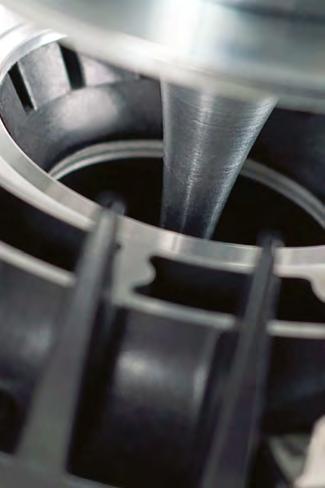

In brief, Alcons’ proprietary ALC software program, ALControl, has been upgraded to v1.72. The update includes support for the different device startup modes (standby, on, previous) and for displaying the AES/EBU sample rate input of the Sentinel.
www.alconsaudio.com
B&C SPEAKERS’ DCX354 coaxial ring radiator is a more compact version of the company’s DCX464 and features a patent-pending diaphragm shape which provides extended low-frequency bandwidth by progressively decoupling the outer diameter as the frequency rises. The company says that following field experience and customer testing, it wrote new mathematic modelling techniques from scratch to evaluate dozens of potential diaphragm shapes in a day.
The 3-inch midrange voice coil handles 180W, while the 2-inch voice coil highfrequency diaphragm covers 5–20kHz with 111.6dB sensitivity and handles 100W. Its midrange diaphragm can cover 400Hz–6kHz with 112.7dB sensitivity. A redesigned, patented midrange integrator allows both diaphragms to work in harmony over a wide bandwidth for greater combined output and crossover flexibility.
JBL HAS introduced the PRX900 Series, comprising three powered two-way loudspeakers and two powered subwoofers, built from the ground up to leverage its latest acoustic innovations. A new proprietary driver system, powered by Class-D amplifiers, is combined with improved dispersion and beam width as well as complete Bluetooth Low Energy (BLE) control via the JBL Pro Connect app.

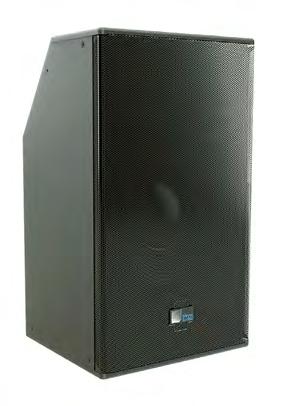
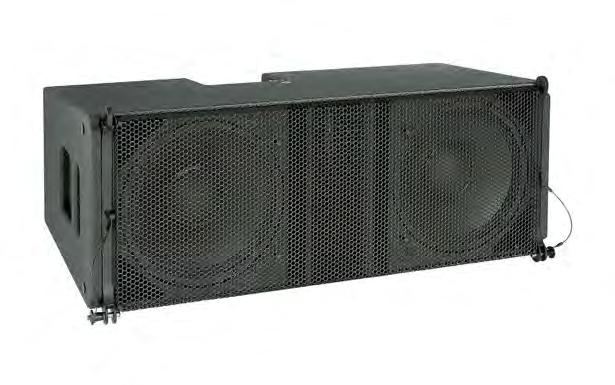
The series integrates JBL’s patented 2408H-2 1.5-inch compression drivers with poly-annular diaphragms and neodymium magnets which are paired with updated JBL Image Control Waveguides to deliver consistent beamwidth and frequency dispersion. An FEA flared port design
PRODUCTS 78 PRO AVL ASIA January–February 2023
MEYER SOUND has added three loudspeakers and a subwoofer as standalone endpoints for direct connection to any AVB network compliant with the Milan interoperability protocol. The Milan input versions of the Ultra-X20, Ultra-X22 and Ultra-X23 full-range loudspeakers and the USW112P compact subwoofer accept audio signals from any Milan-certified source via a certified switch. A single RJ45 connector carries highresolution digital audio in addition to telemetry data for remote monitoring.
The availability of Milancertified speaker systems enables complete network AV solutions that offer simplified management and
Accessible
PRX900
control in addition to a more cost-effective installation using IT industry infrastructures. Network solutions also maintain a fully digital workflow to the endpoint, eliminating conversion stages that add latency and degrade performance. All four models incorporate Milan-certified input modules together with a Neutrik etherCON TOP network connector and a powerCON TOP AC line connector for weather-resistant connections. Remote monitoring capability is also included and utilises the common network connection rather than separate wiring.
www.avnu.org www.meyersound.com
Automatic Feedback Suppression with Soundcraft’s Overeasy option and speaker delay settings and presets.
pro.harman.com
OPTIMAL AUDIO has announced new additions to its Cuboid line-up of loudspeakers, with four models unveiled available in either black or white. The new cabinets comprise of the Cuboid 3, Cuboid 3TX, Cuboid 5 and Cuboid 5TX.
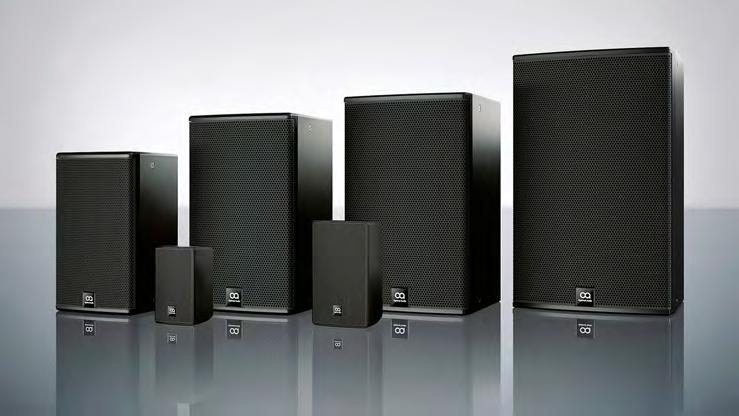
The Cuboid 3 is a full-range, two-way, passive 3-inch loudspeaker designed to give exceptional sound quality in a very small form factor for distributed applications with high-quality background music and speech reproduction. Included mounting hardware allows for fixing in either portrait or landscape orientation for installation flexibility. A weatherproof terminal cover is available as an
aftermarket accessory for outdoor use, giving the cabinet an IP54 rating. It features a 3.5-inch low-frequency driver and a 0.5-inch PEI dome high-frequency driver mated to a shallow waveguide for consistent HF distribution.
The Cuboid 3TX variant adds a transformer that enables the speakers to run on a series of 70V or 100V taps or at low impedance. Tap selection is via a rotary switch on the rear of the cabinet. The Cuboid 5 and Cuboid 5TX follow in similar fashion but instead feature a 5.25-inch low-frequency driver and a 0.75-inch HF driver.
www.optimal-audio.co.uk

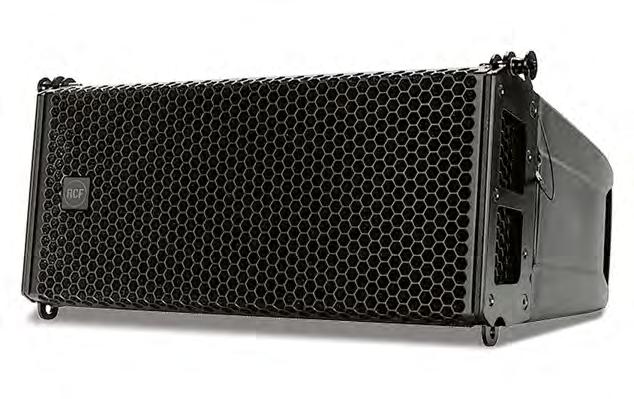
THE HL 6 from RCF is a two-way, fullrange system, most suited for when line array performance and a fast and easy setup are needed. The concept of this speaker derives from the touring industry, resulting in a compact cabinet with all the experience of RCF professional sound. The HL 6 features RCF transducers, two 6-inch woofers for a solid bass reproduction,
frequency range of 45Hz–20kHz (–10dB), the biamp module registers a 1,500W AES power rating that can produce a maximum output of 138dB SPL. Three variations of the Q 15 are available, offering varying vertical directivity in the form of the Q 15-P (40°), Q 15 (60°) or Q 15-L (90°) models.
DESIGNED FOR live music, vocal reinforcement and audio playback in a wide variety of applications, Electro-Voice has released the EVERSE 8 battery-powered loudspeaker. The portable, wireless enclosure can be remotely controlled via the QuickSmart Mobile app and Bluetooth.

Combining a maximum SPL rating of 121dB with even 100° x 100° coverage, EVERSE 8 comprises an 8-inch woofer mounted using EV’s Signal Synchronized Transducers (SST) port design, and a titanium tweeter mounted onto a constant-directivity waveguide. Housed
it can no longer be recharged, including long periods in storage. Tool-free screws ease the removal of the battery pack.
EVERSE 8’s flexible features encourage an input to output self-contained setup. Wireless control and monitoring performed from the EV QuickSmart Mobile app includes adjustments to the audio, effects and mix functions via phone or tablet. An integrated 12V DC port connecting the EVERSE 8 battery promotes its use with RE3 or R300 wireless microphone receivers
compression driver mounted on a precise 100° x 10° waveguide to deliver vocal clarity with high definition and dynamic.
The HL 35-S is the flyable bass complement for the HL 6 array system. It features a Baltic birch plywood cabinet housing one 4-inch voice coil, a 15-inch neodymium woofer to handle frequencies from 40–140Hz with the maximum linearity and lowest distortion. The hardware is designed for an easy and fast setup, compatible with the HL 6 rigging. The heavy-duty front grille is powder coated. A special transparent-to-sound foam backing inside helps to further protect the transducers from dust.
in a weatherised black or white polypropylene enclosure, the 8-inch model is driven by a Class-D amplifier and DSP module developed by Dynacord. A built-in four-channel digital mixer with studio-quality effects, feedback suppression and audio ducking are included.
Fully optimised to provide 12 hours of continuous audio operation, EVERSE 8 is powered by a high-capacity Li-ion battery pack. Protection circuitry reduces the risk of the battery discharging to such a low voltage that
Bluetooth True Wireless Stereo streaming is available for stereo setups and a charging port is included for mobile devices when streaming. Integrating an IP43-rated weatherised input cover, rubber feet and a soft-touch handle, the ergonomically polypropylene enclosure can be mounted on a tripod, deployed as a stage wedge using the 55° monitor angle or positioned upright with the 30° kick-back angle.
The SUB 8008-AS is a double 18-inch high-power active subwoofer for live bands, DJs, nightclubs and rental companies. It employs an RCF-designed transducer featuring a high-power ceramic magnetic circuit with a 4-inch voice coil. The power amplifier manages high currents for up to 4,400W, delivering sound pressure levels up to 137dB. Rear panel controls include 12 presets, crossover frequency, polarity switch, deep/punch selection, cardioid and output delay settings. The subwoofer is produced in a tour-ready, rugged, all-wood cabinet with a scratch-resistant polyurea coating.
Primarily designed for mid- to longthrow applications demanding accurate speech and music reproduction, RCF has launched a compact, point source loudspeaker. The two-way Q 15 combines an RCF precision 15-inch neodymium woofer with an ND940 4-inch voice coil and a 4-inch titanium-neodymium compression driver. Operating within a
In brief, the NXW 44-A is an active twofor a range of users, from bands to DJs, clubs and rental companies. Its combination of RCF transducers and a 2,100W two-channel Class-D amp produces coherent 100° x 50° coverage for the listening area up to 135dB SPL.
Finally, the BT Board DMA can be paired with a DMA amplifier to provide Bluetooth connectivity on a mobile device. This makes is possible not only to send audio from a mobile device to the amplifier, but also control levels and EQ via an Android or iOS app.
www.rcf.it
Audiogroup has launched its Pro Series, consisting of both active and passive point source speakers, suitable for installed and portable setups. The series has been designed to deliver high output and dynamics, extreme linearity and fidelity and is aimed at hotels, restaurants, bars, lounges, conference rooms, DJs and musicians. The speakers work equally well as floor monitors (Pro12 and Pro15 only), on tripod stands or as a flying system with a wide range of rigging points. The cabinets are constructed using premiumquality 15mm plywood with a polyurethane coating and a powder-coated steel grille with acoustical foam.
The Pro12A and Pro15A have a two-channel mixer with Bluetooth included and five presets. Users can connect any instrument, microphone, CD player or audio mixer to the active Pro Series input. The Pro speakers can be connected to each other using the Mix Out connector. An active external subwoofer can also be added to extend the system frequency response.
The Pro12 and Pro15 speakers are equipped with two NL4 speaker connectors located on the back plate to reportedly provide reliable connections with an easy link-through to the cabinets. An optional U-Bracket allows mounting both horizontally and vertically with a total angle adjustment
span of 115°. Depending on the adjustment bolt used, the final speaker’s angle may vary (100° to –15°, 10° to –105° or –80° to –195°). A two-axis wall bracket can be used on the Pro12 passive speaker. The
adjustment angle span will vary according to the selected pan and tilt angles (to a maximum of 30°).
www.nextaudiogroup.com

in the coverage area. The pickup pattern has also been readjusted to better match customer selection for Narrow, Medium and
resulting in improved onsite interaction during meetings.
The woofer and tweeter levels of Stem Speaker, as well as crossover frequency, have been calibrated, resulting in improvements to playback sound quality. Device output level has been balanced with the rest of the ecosystem for even coverage in rooms with multiple Stem audio components. Lastly, Stem Table has gained a finetuned playback and microphone pickup, creating improved double-talk performance and a better experience for meeting participants.
The series’ Ceiling array now boasts improved performance, sensitivity and sound quality to yield better pickup of voices and better rejection of room noise and reverberation. The result is reportedly clear voice reproduction for all participants
tone for high-quality reproduction of both speech and other programme material, resulting in increased intelligibility during calls and more pleasant use of the system. The microphone array has also been tuned for better tonality and voice pickup,
THE STUDIOMASTER CORE is a selfpowered, hi-mid top and sub stack, suitable for portable sound reinforcement applications, including in large and medium-sized venues where wider constant frequency coverage is required. To achieve this coverage, CORE employs a curve array hi-mid cabinet, together with a self-powered, active sub.


The precision curvature of the CORE hi-mid cabinet emulates a three-element fixed curvature array, producing a 100° horizontal signal and 70° vertical coverage, extending to the outer reaches of an auditorium, right down to the front of the stage.
CORE has two variants – the CORE 121 and CORE 151 – with 5- and 8-inch MF drivers respectively, rather than the 2-inch or smaller drivers more usually deployed in this product class. In the CORE 121, these are matched with nine 1-inch dome HF drivers and 12 1-inch dome tweeters in the CORE 151. This gives the two CORE curvature arrays an accurate response across the full mid- and high-frequency spectrum.
The mixer module and connector panel are mounted at a convenient angle for ease of use and provide two mic/line, a Hi-z
The series as a whole enjoys additional improvements, including echo cancellation and system sounds, such as push-button chime level. Because Stem devices have auto-updates enabled by default, all Stem Ecosystem products connected to a network with internet access and on default settings will update automatically overnight. Elsewhere, Shure’s podcasting and hybrid working MV7 microphone is now Zoom certified, becoming one of the first to be certified under the ProMic
The MV7 is now Zoom-certified
category of Zoom’s Personal Workspace Certified Hardware. The company has also announced that its Microflex Advance MXA920 ceiling array microphone together with the IntelliMix room audio processing software have received Zoom Rooms
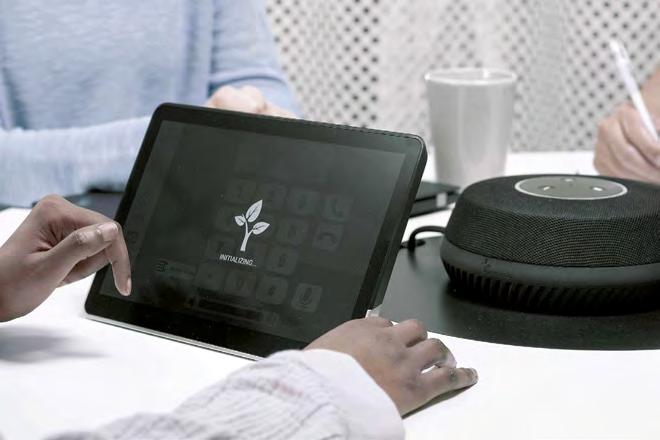
Hardware Certification when paired with the Microflex MXN5W-C networked loudspeaker.
www.shure.com
instrument and stereo line level inputs, Bluetooth audio connectivity, selectable link outputs and an independent sub level. DSP processing includes presets for DJ, music or vocal applications and provides access to three-band EQ, limiter, output delay, master volume and channel metering. Power and audio signals are transmitted from the sub to the curve array via the adjustable air-suspension speaker pole and a top hat connector, eliminating external cabling.
V2.5 FIRMWARE for the Shure Stem Audio ecosystem is said to have brought significant improvements in clarity, more

PAN ACOUSTICS has extended its Pan Accessories series with the VESA Speaker Mount. The mount allows an “uncomplicated and quick installation” of Pan Acoustics line source speakers on all common displays. The VESA Speaker Mount is mounted as an adapter between the display and the existing VESA mount. The smaller VSM model is suitable for use on displays
measuring 55–65 inches, while the larger VSM XL variant can be used on 75- to 98-inch displays. The mount consists of just a few parts and is designed so that the speakers can be mounted and aligned precisely with the frame of the display and flush-mount with the display front.
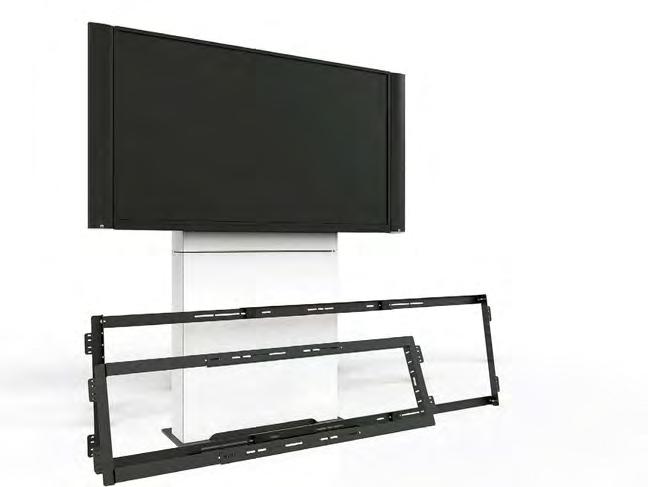
www.pan-acoustics.de
DESIGNED FOR any sound reinforcement application requiring a high-fidelity compact loudspeaker, Quest Engineering has added a 4-inch two-way ceiling speaker to its current catalogue. The MX4C comprises a die-cast aluminium woofer with a titanium dome tweeter housed in an ABS fire-rated baffle with an aluminium back can. It also features 70V/100V/16Ω operation together with HF attenuation, located on the front baffle and hidden behind a fast-fit magnetic grille. Available
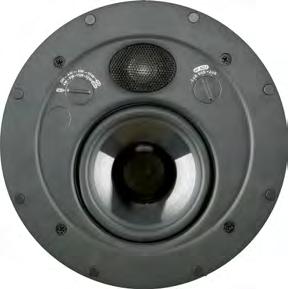
in black or white, the MX4C can produce a maximum SPL of 104dB (–10dB) across a 160° x 130° directivity plain.
Measuring 1⁄3U wide and 1U high, the QX-300 series commercial amplifiers combine a small form factor with Class-D technology. Wall and table mount options
STAKING ITS claim as the flagship subwoofer in the Trinity family, PK Sound has created the T218 to supplement the low frequencies of its robotically controlled line array elements.
Measuring 1,395mm x 518mm x 780mm (WxHxD) and weighing 105kg, the low-profile enclosure operates within a 25–100Hz frequency range (–3dB) and has an inbuilt crossover set at 80Hz.
Featuring dual front-loaded, long-excursion 18-inch transducers in a bass-reflex design, an unrestricted vent has been inserted to
In other news, fourth-generation DSP presets for Trinity have been released. Developed in collaboration with Paul Bauman, PK Sound CEO Jeremy Bridge and top designers and FOH engineers, the V4 presets deliver increased max SPLs, smoother coverage across all variable symmetric, asymmetric and tapered horizontal configurations, and additional tools to mitigate noise pollution.
Available to all current owners and users, the revamped presets have extended the max SPL levels to 151.4dB for Trinity Black large-format
offer flexibility, although 10 units can be mounted in a 3U rack space. When in standby mode, the dual 150W amplifier draws under 0.5W of power, making the QX-300A series both Green Energy Star and ErP 1275/2008/ EC compliant. Lo-Z (4Ω–16Ω) operation

and Hi-Z (70V/100V) loudspeaker configurations are catered for and adjusted using the auto load sensing technology. A custom die-cast base coupled with protection circuits (short-circuit, DC, under voltage, overload and temperature) and temperature-controlled fan cooling enhance reliability. Furthermore, Dante/ AES67 networking connectivity is available with the QX-300D model.
www.questaudio.net
Integrated rigging hardware can cater for up to 16 T218 modules to be flown in a column, or ground-stacked securely. Housed in high-grade Baltic birch and finished in an EXL polyurea coating, the T218 can produce a maximum output of 144dB SPL.
source elements. Furthermore, there is improved cardioid performance and new crossover options for T218 subwoofers and a low-latency mode for T10 and T218 modules.
DRAWMER HAS released the 1972 dual mic/line and instrument mic preamplifier, said to be a unit dedicated to flexibility with “a unique feature set and simple operation”. Created for use both at home and in professional studio and live sound applications, the 1972 is handcrafted with an all-steel chassis. It sports two identical channels of analogue pre-amplification in a 1U rack chassis. Key to the 1972’s versatility is the Select input source switch. It has six switch positions to cover the ¼-inch front panel instrument input jack for guitars, basses or electronic keyboards and five more positions covering separate rear panel XLR input jacks for microphones with/without 48V phantom powering or line level input sources. Other switch positions are provided to match microphones with 200Ω, 600Ω or 2,400Ω impedances.
Up to 66dB of clean gain in 6dB steps is provided by THAT Corp Technology using a 12-position rotary Gain switch. The switch’s detents aim to make it easy to recall settings from previous sessions. Input levels are monitored on a five LED colour-coded metre directly above the Input Gain control and a compact VU meter monitors the final Output level.
Front panel controls continue with a Phase reverse button and the switchable semiparametric Lo and HiCut filter section, also working as a very smooth bandpass filter. The LoCut section is switchable in/out and is a 12dB/octave filter with the ability to sweep any frequency between 15–350Hz. The HiCut or low-pass half of this filter ranges from 1.5–20kHz and is also a 12dB/octave design.
Unique to the 1972 is Lift, a low-level, upward expander. When switched in, Lift adds gain to input signals below a level of –30dB and continues adding gain until a level of 0dB is reached. Furthermore, starting at –30dB, the amount of added gain is gradually reduced as the average level approaches 0dB.
Another feature of 1972 is Shape, designed to be used as an instant sonic fixer. It consists of two separate fixedfrequency tilt or seesaw equalisers centred at 500Hz. Low Shape will provide up to a 2.5dB boost at 40Hz and, at the same time, attenuates –2.5dB at 10kHz. Conversely, Hi Shape reduces by 2.5dB at 40Hz and, at the same time, boosts up to 2.5dB at 10kHz. With both Low and High Shape buttons engaged, a useful “scoop” centred at 500Hz is generated.
www.drawmer.com

in various applications, while miniature rear-mounted switches provide the ability to daisy-chain inputs from one channel to
Input connections are performed with three-pin terminal block connectors, with output connections via a four-pin terminal block connector. The CEP408 offers four channels and has an output power of 80W, while the CEP803 offers eight channels and has an output power of 30W. Both are Energy Star-compliant, which can be enabled or disabled with a standby
POWERSOFT HAS further enhanced its fixed-install product range by introducing AES67-compatible versions of its Duecanali and Quattrocanali amplifier platforms. The new models, called Duecanali DSP+ and Quattrocanali DSP+, are able to receive audio-over-IP (AoIP) streams compliant with the AES67 standard, allowing for high-performance streaming AoIP interoperability across different networking systems.
2404 DSP+, 4804 DSP+ and 8804 DSP+) can receive AES67 streams natively by connecting the dedicated AoIP networking port to an AES67 network. The new DSP+ amplifiers are supported by a new version of ArmoníaPlus, the Italian manufacturer’s system design, control and monitoring software. All Powersoft amplifiers featuring a Dante card can also be configured to work with AES67 audio streams by enabling AES67 mode in ArmoníaPlus or
AUDIO has extended the PowerZone Connect series of multi-zone installation amplifiers with the addition of four 2U rackmountable models. Designed for commercial installation projects such as shopping centres and large-scale paging and distribution systems, the DSP amplifiers deliver flexible, reliable power output with total system power offerings of 1,000W, 1,500W, 2,000W and 3,000W. Incorporating Pascal UMAC L-PRO amp modules, the PowerZone Connect 1002, 1502, 2004 and 3004 amplifiers can output full system power with a maximum channel count in Lo-Z (4Ω) or employ half the channel count with double the channel power for Hi-Z operation. The two four-channel models allow for the creation of hybrid output setups (Lo-Z + Hi-Z) with a single amplifier. A full matrix DSP design offering system configuration and control via the Danish manufacturer’s PowerZone Control browserbased web app is available. The application can be used to configure and manage audio zones, inputs/outputs, firmware updates and the importation of loudspeaker presets with access to EQ settings from a smartphone, tablet or PC when connected through the amplifier’s built-in Wi-Fi or RJ45 network port. In addition to the Lo-Z or Hi-Z outputs, rear connectivity includes four unbalanced RCA

input source and volume and can be configured for any room or location. Designed for commercial use in bars, restaurants, cafés and retail stores, as well as locations like meeting rooms, auditoriums and schools, any Blaze PowerZone Connect amplifier can be controlled remotely with

WITH THE launch of the B170S networked streaming stereo amplifier, Bluesound Professional has added an all-in-one streaming via Ethernet solution for commercial music installation. Continuing the brand’s multizone commercial music solutions, streaming services including SoundMachine and Custom Channels are integrated within the BluOSenabled network music player in the B170S for control with the BluOS Controller App. Combining a stereo low impedance and constant voltage amplifier with a BluOS-enabled network music player, the B170S’s amplifier section provides 2x80W of power into 4/8Ω, or 2x100W at 70V
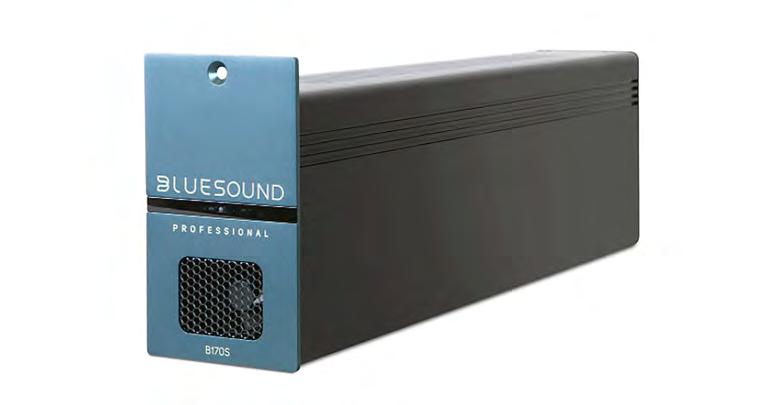
for each separate sound zone. It provides access to different tuning options, such as speaker EQ which can be imported from an approved library or created for a specific location.
For security, the unit has PIN code protection for access and the whole system
colour schemes, four screen brightness settings and four settings for the button light. The user interface and built-in colour schemes can also be modified to meet the needs of a specific location.
www.blaze-audio.com
installation
long chains of
The low impedance factor serves applications requiring high intelligibility, whereas bulk speaker installations can be catered for with a constant voltage option incorporating daisy-chained speakers. With keyhole slots promoting flexible mounting options, the 3U height amplifier can be discreetly positioned under shelves, tables and walls. In addition to a thermostatic fan and a USB input, the B170S incorporates security preventing unauthorised control and offers unlimited grouping of zones within the BluOS system.
www.bluesoundprofessional.com

DATAPATH HAS released a new
DESIGNED FOR both fixed installation and live music applications that require high-fidelity audio and high power specifications, HH Electronics has launched the M-Series of 2U rack amplifiers. Designed and engineered in the UK, the M-750D, M-1500D and M-2600D models comprise a Class-H toroidal power supply, linear power stage and comprehensive protection system.
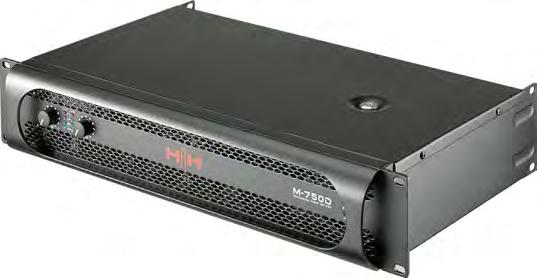
Featuring balanced XLR inputs, user-selectable input sensitivity, speakON connectors, binding post outputs, status indicators and comprehensive protection circuits, the three
amplifiers vary in weight between 12.5kg and 24.2kg. Incorporating power, input sensitivity and bridge/routing mode switches, the twochannel models also feature volume controls on both channels. Equipped with soft start, VHF, RF, short circuit, overload, clip limit and overheat protections, the M-750D, M-1500D and M-2600D amplifiers output 2x750W, 2x1,500W and 2x2,600W, respectively, in 4Ω stereo mode operation.
www.hhelectronics.com
FEATURING A slot-loading CD drive, Tascam has added the CD-RW900SX to its long line of CD recorders and players. In addition to offering analogue input gain controls for the left and right analogue inputs, the latest unit features independent trim control for the digital input for setting the optimal recording levels from a digital source.


A variety of track division functions are included to make recording easier. Automatic Track Division creates a track marker based on the input level by effectively adding a new track when the input falls below a specified level, defined within a range from –24dB to –72dB. Furthermore, a rec-mute function can insert silence between tracks. Ideal for conference recording or applications when there is no gap between segments, the
Time Track Division function enables timebased track creation to be set every 1–10 minutes. By pressing the record key while the unit is in record mode, the Manual Track Division manually allows a new track to be written.
For playback, the 2U rack-mountable unit offers auto-cue, auto-ready, pitch control, repeat, playback and power-on playback capabilities. Power-on playback allows the CD-RW900SX to be cued up and automatically played the moment the power is enabled. Designed to minimise errors while writing to the disc, the CD/CDRW drive provides a stable platter. Ideal for sea m less, continuous live recordings, track markers can be embedded without a gap. Should a disc become locked in the drive, an included emergency hole in the slot allows a pin or paperclip to be
the highest standards. With 4K/60 capability, the VisionSC-S2 card delivers an important part of the networked video mix. The SDVoE Alliance provides
a flexible way to route signals in high-end installations, but not all streams end up directly on a screen. They often need to be ingested into PC-based video controllers for manipulation, analysis or encoding. With Datapath’s dedicated SDVoE capture hardware, enough PCIe bandwidth is provided to transfer the full quality available in the SDVoE feed into an application, and with minimum added latency to ensure the end-to-end solution is fit for real-time applications. Furthermore, SDVoE technology is ideal for routing to media servers for long-distance, real-time signal processing where minimum latency is crucial.
www.datapath.co.uk
memory to ensure smooth playback, even if shock or vibration lasts for upwards of 4s. Accommodating a wide range of sound sources, the rear panels include unbalanced analogue together with S/PDIF coaxial and optical connections prov i ded for connection flexibility.
that automatically starts/stops recording at a preset level spanning a range of –24dB to –72dB in 6dB increments, digital level adjustment and a key control playback function.
www.tascam.com
Triggers can be from different sources, such as parameter or status changes in the device itself, a MIDI or OSC command from an external device, a cron job (periodically recurring trigger) or can be created based on time. Device actions such as gains, mutes, snapshot recalls, input manager switches and EARS source selection or GPOs can also be triggered, and it is possible to send custom-defined messages via OSC and MIDI, or to hosts via HTTP, UDP or TCP commands.
In
For the Prodigy
with a third multichannel audio source has been implemented, which is automatically selected in case the main and backup multichannel input (MADI or audio network) fail.
Further features have been added to the series as a whole, such as configurable crossfades for groups, as well as the automatic four-wire patch function for the Routing tab. For the Prodigy.MP specifically, a new IIR filter has been implemented – the First Order All Pass for Live Sound – which allows for phase rotation of 90° at selected frequencies. A newly added Solo Bus function makes it possible to route soloed channels to the Prodigy.MP’s summing busses 31/32. There are three modes of the feature: summing all soloed channels; replacing, where one soloed channel replaces the previously selected one; and a PA tuning mode, where the processed and clean signal is routed to the solo bus outputs automatically.
dedicated SDVoE capture card for realtime applications that meets the SDVoE AN UPGRADE to DirectOut’s Prodigy series has introduced the availability of an Automater License for Prodigy.MC convertors and Prodigy.MP audio p ro c essors. Automator allows for the ability to program triggers in order to run tasks in an automated fashion. addition to this, the manufacturer’s Disaster Recovery solution – a component of its EARS feature which was used for the first time on the 2022 Eurovision Song Contest – has been made more secure. series, a solutionDESIGNED FOR transportation, healthcare, commercial and industrial applications, AtlasIED has broadened the appeal of the GLOBALCOM product ecosystem with the release of the IP200 Series for announcement control and the IPSVR on-premise server model. At the heart of the GLOBALCOM enterprisewide mass communication, three models of AtlasIED IP200 Series controllers support varying VoIP requirements. The IP200 Announcement Control Server (ACS) supports VoIP and IEDNet+, the IP216-D ACS supports audio-overEthernet (AoE) functionality using Dante and the IP-216C ACS supports
CobraNet digital audio transport. All three ACS controllers integrate a preinstalled GCK Advanced Notification
T-CAS, GLOBALCOM.Flight, LookHear, DIRECTOR , plus a GCK or GDS-4WTM hardware upgrade. Suited for rack
compatibility with AtlasIED’s Atmosphere audio processing and control system. The companies collaborated to create
Application software which is configured via a Microsoft Windows application. The IPSVR on-premise server incorporates ample processing power and hard drive storage to operate multiple AtlasIED solutions, including
environments requiring peak two-socket performance in a 1U chassis, the IPSVR features an Intel Xeon Quad core processor and solid-state drive storage. In brief, the manufacturer has announced RTI control platform
a control module specifically to enable RTI customers to manage Atmosphere directly through the RTI control and automation system.
www.atlasied.com
RIEDEL COMMUNICATIONS has unveiled Bolero 2.4 GHz. Instead of Bolero’s standard DECT band, the new iteration operates on the 2.4 GHz band, allowing customers in regions where DECT carrier frequencies are either limited or unavailable – such as China, India and South Korea – to navigate difficult RF environments.
Bolero 2.4 GHz uses a practically identical feature set and offers the same three network modes as the DECT version: Integrated, Standalone Link and Standalone 2110 (AES67). The 2.4 GHz band limits use to eight beltpacks per antenna instead of 10, but allows for connectivity anywhere, with just one “Global” region for 2.4 GHz antennas. The 2.4 GHz iteration also comes with Bolero’s high-clarity voice codec and its multipath tolerant receiver (ADR) technology adapted to 2.4 GHz, allowing the system to continuously adapt to changing RF reflection
environments. Other features include nearfield communication touch-and-go beltpack registration, an ergonomic, robust beltpack design and three modes: beltpack, desktop key panel or walkie-talkie.
While Bolero 2.4 GHz was developed primarily for Riedel’s international customers, regions in the US where the number of DECT carrier frequencies are limited can benefit from a hybrid 2.4 GHz and DECT system, enabling the creation of larger installations with a higher number of users in a limited space.
The manufacturer has also launched the Audio Monitoring App (AMA) for its 1200 Series SmartPanels. With the AMA –combined with Riedel’s Intercom App and Control Panel App – the RSP-1216HL and RSP-1232HL SmartPanels offer users audio streaming monitoring, intercom and control capabilities in a single keypanel, saving valuable rack space.
CREATED TO complement the DNS 2 and the DNS 8D, CEDAR Audio has produced its most portable model to date with the DNS 4 dialogue noise suppressor. Commanding a similar footprint to the DNS 2 with double the available channels, a Hirose HR-10 power input and mini-XLRs create multiple c onne c tions. When switched on to the Learn function, the DNS algorithm identifies and adapts to the background noise, before adjusting the amount of noise attenuation required. Near-zero latency ensures no loss of lip-sync.

Measuring 185mm x 130mm x 45mm and weighing 750g, the DNS 4 is equipped with analogue line and ultra-low-noise microphone inputs with optional 48V phantom powering, AES3/AES11 digital


DESIGNED FROM the ground up over several years, Altair has introduced an IPbased intercom system. With a long history in the intercom industry, the Spanish audio manufacturer has increasingly migrated into the broadcast sector.
For the monitoring of audio streams, the AMA allows for a direct connection to any SMPTE ST 2110-30 (AES67) stream available on the network – either dynamically managed via NMOS or in a static IP/SDP-based configuration, mixing the audio directly inside the SmartPanel. The app can be configured via a dedicated configuration tool or a broadcast controller using the built-in API. In addition, the selection and management of monitored audio sources is described as simple and flexible. Users can monitor up to 16 stereo/mono SMPTE ST 2110-30 (AES67) streams in parallel. A total of 256 audio sources can be preconfigured and managed directly on the RSP-1216HL and RSP-1232HL SmartPanels via their high-resolution touch displays and intuitive interfaces.
www.riedel.net
inputs and both analogue and digital outputs. Enhancing its portability and flexibility, the DNS 4 can also operate on 12V power. Retaining the near-zero latency of its predecessors, the DNS 4 is suitable for use in location recording, live-to-air broadcasting and live sound applications.
www.cedaraudio.com
Equipped with an internal switch and LAN, the IPCom system bypasses the requirement for a physical intercom matrix. Supporting up to 128 groups and users, IPCom allows private calls, priority assignment for varying levels of team responsibility, the management of GPIO-based actions via its IPF-316 panel and the generation of cue light signals received by beltpacks and panels.

The IPF-316 can control 32 channels (16 keys, two pages) and the IPB-306 beltpack provides six channels, while the built-in mic and speaker allow it to operate as a remote station. Equipped with an IPX-301 4W/2W
interface, IPCom is compatible with all of
TV studios in mind, one wireless partyline system can be injected into an IPCom network.
www.altairaudio.com
THE DMXV TrussLink Stagebox series by KLOTZ has been designed for when audio signals and DMX signals have to be combined via a stagebox in professional use. The DMXV’s lightweight but robust aluminium housing is powder-coated black and features abrasion-resistant laser engraving.
a dense copper braiding with a coverage of 85%. The PVC jacket has an outer diameter of 6.7mm and can withstand a temperature range of –20° to +70°.
Despite the level of conductor cross-section and double shielding, cable flexibility provides
THE NEUTRIK Group recently completed two new Fibrefox production lines, now in operation, at the group’s Connex Oldenburg plant in Germany. As a result, the supply of Fibrefox products has been improved, with a one-third reduction in standard delivery times. The innovative hermaphroditic coupling (between the connector capable of both front and rear mounting) eliminates the need for adaptors and female and male mating halves. Available in two- and fourchannel variants, with either configuration compatible with the other, and other MIL-DTL-83526 specified systems, mating ability is improved. These are available as both preassembled network cables and as the Fibrefox briDge chassis connector, which fits into the classic Neutrik D-shape cutout.
It accommodates eight or 12 channels with RMP multipin connectors to the MIL-C-5015 standard. The paired Neutrik XLR 5p chassis jacks with hard gold-plated contacts can be used as either inputs or outputs. Flexibility is offered by the 12-channel DMXV-04FM version, which provides eight channels with XLR 5p and four channels with XLR 3p sockets. In addition to the eight DMX channels via XLR 5p, four channels can also be used for DMX via XLR 3p, AES/EBU or analogue microphone and line audio signals.

TrussLink stageboxes in the DMXV series can be used both on the floor and in the rig. For this purpose, the housing is equipped with non-slip rubber feet, an M10 thread on the bottom and four eyelets for safety ropes.
The manufacturer has also introduced two digital cable drums using Neutrik XLR 3p and 5p connectors and protective caps which both use KLOTZ’s OT234YS low-loss data cable. With a conductor cross-section of 0.34mm² (AWG 22/7), the company reports the cable has a particularly low signal attenuation which makes it suitable for long distances and is capable of transmitting both digital and analogue signals. Two shields protect against noise: one is Al-PET foil and the second is


makes the OT234YS suitable for cable drums. The AES3N4YSD and DMX5N4YSD cable drums are made of break-resistant plastic and are equipped with a locking brake. At the outer reel core, the cable end is available in a length of 2m. Both cable ends are also provided with transparent shrink tubes for labelling. The cable drums are available in lengths from 50–200m.
www.klotz-ais.com
Following on, the Liechtenstein-based brand has made two new additions to its Fibrefox connector series, with the availability of the foxBRID and Fibrefox Rotary Joint. Suited to more industrial applications, the foxBRID is an expanded beam multimode hermaphroditic connector module. Available in two- and four-channel variants, the design ensures its ability for deployment where constant performance and total reliability are critical. The Fibrefox Rotary Joint is an expanded beam multimode solution which fits to standard optical ST connections. Offering IP56 protection, with two hermetically dust-tight chambers sealed by shaft seals, it is suitable for a wide range of engineering applications where rotation is a challenge.

Designed for use in rugged outdoor applications, Neutrik brand REAN’s weatherresistant Power X power connectors are moulded from V0 raw materials, rated to UL 94V-0 and are IP65-certified. Fully compatible with Neutrik powerCON True1 products, Power X connectors are compatible with a wide range of audio, lighting, video, film and TV broadcast applications.
The lockable power connectors are also designed with breaking capacity, which means they can be connected or disconnected under load or live. Power X Series components are certified according to EN/UL 60320-1 and accepted as a component for cord sets according to IEC 60799 to guarantee mains breaking capability.
www.neutrik.com
ITALIAN CABLE manufacturer Tasker has expanded its range of speaker cables for live events. The C282 super is an extrastrong 8x4mm² speaker cable realised with a crown-shaped grouping around a central PE filler that gives the cable a solid but also very flexible structure. It has been designed for mobile and rental installations where the cable needs to be continuously wound and unwound.
The C862 is a double 110Ω DMX light cable with aramidic fibre fillers and a PUR outer sheath, a special material that is flame-retardant, halogen-free and UV-, water-, chemical- and oil-resistant, and is most suited for outdoor and heavy-duty applications. The C862’s single-pair brother is the TSK1038 PUR, a 2x0.35mm² 110Ω DMX AES/EBU with high coverage shielding and the same sheath
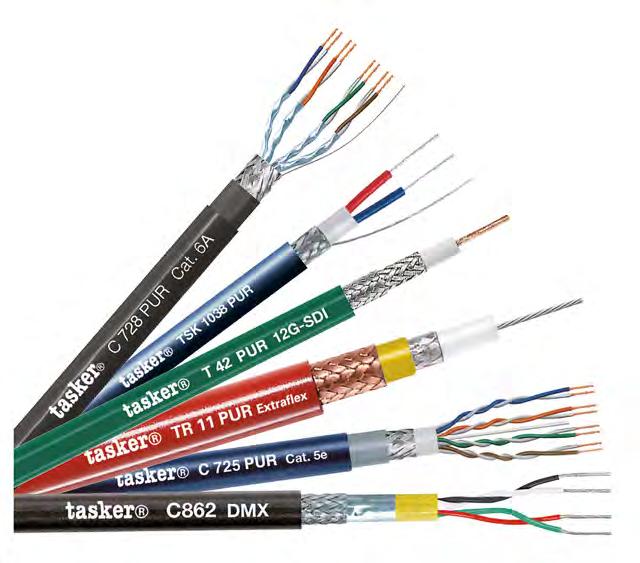
For users that need
to transmit digital audio and video as well as a classic data signal, the C725 PUR is a Cat5e cable suitable for digital audio applications using the Dante protocol. The C728 PUR has a larger section of 4x2x0.22mm² (24/7 AWG) and is designed for HDBaseT transmissions, while the C726 PUR is a Cat7 with a diameter of only 6mm.
For broadcasting, the T42 PUR is an extra flexible coaxial cable with multifilament formation and double braided shield in a tinned copper OFC which allows 12G-SDI video transmissions up to 70m. It may be necessary to use a triaxial cable that needs to be as flexible as possible to allow professional cameras to move freely. Finally, the TR11 PUR Extra Flex is a triaxial cable with a silver-plated conductor and shield.

Explore new brand opportunities and showcase your latest technologies at Integrate 2023, Australia's premier audio-visual event returning this year 30 August - 1 September.
Find the right audience for your products and generate high value leads within the AV industry, with an event that defines AV innovation in the region. This year's event will also be co-located with the Security Exhibition & Conference, allowing all brands to benefits from the increasing convergence between AV and security innovations.

Be part of Australia's AV buying hub, and connect with thousands of like-minded industry professionals, talk to the team today about your role at Integrate 2023.
co-located with
DESIGNED TO cater for current requirements in the IT, work, education and conference sectors, Sommer Cable has created a well-conceived product line around the latest USB-C connection. Under its own Cardinal DVM brand, a 10G USB 3.2 hub has been conceived as a clip-in module for the SYSWALL-45 switch frame series that fits within SYSFRAME45 desk installation frames and SYSTRUNK duct profiles in addition to other common 45mm connection units.
Available in matt white, high-gloss white, charcoal grey and silver finishes, the four connections with 10G bandwidth are available as dual USB Type-A and dual USB Type-C ports on the front side which also deliver 30W of charging power for connected terminal equipment. A USB Type-C upstream port is located on the rear with an additional power supply connector.

The DVM-194-PS5 USB-C power supply relies on GaN technology for fast, simultaneous charging of multiple USB-C and USB-A devices through a single power
outlet. The 85W system distributes power smartly across dual USB-A and dual USB-C connections for various charging standards
characterised by a nylon/cotton fabric textile cover firmly glued to the cable jacket. The fully extruded USB connectors
which can be optionally used with a clip-in Keystone housing in white or black for permanent installation.
Supporting 10Gbit/s USB 3.2 signals and combined with 4K60 video signals with 60W of charging power, the 6mm-diameter HI-UAOC series provides reliable transmission for USB-C cable lengths over 2m.
AUDINATE, BOLIN forces to offer a single system that couples Yamaha’s ADECIA Conferencing systems with Bolin’s high-performing 4K and Full HD Dante AVnative PTZ cameras. The result provides systems integrators and end users with a system to create collaboration spaces with perfectly timed audio and video on one network switch.
Yamaha ADECIA is a family of audio products designed to be installed and integrated to provide communications solutions for meeting spaces or classroom audio. The ADECIA solutions are intended to help overcome challenges with implementation, configuration and room acoustics by providing all the components
and power supplies. The compact design and the detachable AC cable promotes the unit to be integrated discreetly into furniture and behind connection panels.
Offering a maximum charging power of 100W and a data transfer rate of 20Gbit/s, the HI-U3CC USB 3.2x2 cable series is
are built into the aluminium housing and E-marker chips within the USB-C connector communicate with the connected devices to avoid overloads. The series includes 10Gbit/s USB-A – USB-C (HI-U3AC) and USB-A – USB-A versions (HI-U3AA) together with matching extension cables (HI-U3CF)
The manufacturer has also added the 580-0802FC to its expanding range of Cat8.1 network cables. With an overall diameter of 8.2mm and an AWG22/1 cross-section (0.62mm), the halogen-free LSZH jacket meets IEC 60332-1-2, IEC 60754-1/2 and IEC 61034-1/2 s ta n dards and is flame retardant with a B2ca high fire protection classification. Supporting a transmission frequency of up to 2,000MHz in addition to a data rate of up to 40Gbit/s, the cable is suitable for high-speed Ethernet network connections between routers and switches in building infrastructure.
www.sommercable.com
WITH THE Digiface Ravenna, RME and DirectOut have jointly created a mobile audio interface based on the Digiface Dante but featuring a Ravenna module. The device allows the transmission of 128 audio channels coming from Ravenna and MADI as an option via a single USB 3.0 connection for USB and standalone operation.
The fusion of RME’s drivers (Mac/Windows) and DirectOut’s Ravenna implementation are said to combine to produce a reliable and
required for a successful installation and automatic technologies that reduce setup time and complexities. The system offers three microphone options: ceiling, wired tabletop and wireless. Bolin’s D Series Dante AV PTZ cameras – the D412 4K60 and D220 Full HD –provide high-quality video with extremely low latency and AV synchronisation. The D Series Dante AV cameras also offer quiet and smooth pan, tilt, and zoom capability and are fully compatible


SPECIFICALLY ENGINEERED to complement its classic line of mic pres, Automated Processes Inc (API) has expanded the API Select product range with the launch of the SV12 compressor and SV14 four-band EQ 500 Series modules.


The API Select SV12 features the original compressor circuit designed for the ATI Paragon live analogue mixing consoles. Re-engineered for the 500 Series format, the SV12 provides comprehensive compression with full LED metering of both output and gain reduction. Designed to protect sensitive, high-frequency content of the audio signal, the SV12 includes API’s patented Thrust circuitry. Two channels can be linked for use as a stereo compressor with true RMS power summing of the left and right signals.
Providing parametric EQ, the API Select SV14 EQ circuit design is re-engineered from the APSI 562 EQs of the 1970s. The SV14 also features an EQ in/out switch, transformer balanced output and dual
flexible networked computer audio interface. DSP-based TotalMix FX can be used to control the routing and monitoring options, including the built-in headphone output. For networking, the interface features a Ravenna stack with AES67 and ST 2110-30/31 support and redundant audio-over-IP streaming as
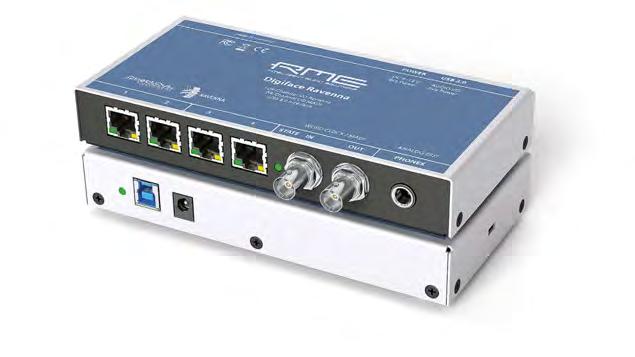
concentric knobs for variable control of boost/cut and frequency selection.
www.apiaudio.com
per ST 2022-7. In addition, the interface can be used as a mobile 64-channel Ravenna/ MADI converter without a USB connection to a computer. The coaxial MADI I/O connectors may also be configured to work as word clock sync I/O. Either an external power supply connector or USB bus power can be used for operation.
www.directout.eu www.rme-usa.com


KV2 AUDIO has launched the 500 Series range of audio processors, a series of “ultra-high-quality” processors consisting of three models. The TCL is described as a unique analogue thermo audio compressor featuring a superior natural RMS detector and dynamic voice bass enhancement control. According to the manufacturer, its patented design offers an exceptionally musical and natural compression that is a component part of its real-time input, as opposed to a typical side-fed gain reduction circuit that attempts to either follow or anticipate compression demands. Its additional Bass balance control circuit allows the user to smooth out and minimise proximity effects from a changing microphone position.
The QD8 is a George Krampera-developed eight-band stereo equaliser specifically designed to highlight a desired EQ band without adversely affecting the overall sonic landscape. While not intended for tuning out room modes, the frequency bands and filter types have been chosen after extensive research, to perfectly align with the science of human hearing and our perception of achieving the ultimate spectral balance. In a live scenario, faced with a number of different sources, programme types or performance genres at a festival or concert, the equaliser is described as being very musical and intuitive, and provides a quick way to shape any mixed content to the sound users want to hear. In the studio, it can be used for either the simple enhancement of an instrument/vocal track or the final mastering polish.
Lastly, the MPA is a high-definition microphone and musical instrument preamplifier with Class-A circuitry and a high-quality transformer balanced output. A stepped input gain selector is provided for repeatability of settings. The preamplifier features adjustable high- and low-pass filters, with an adjustable limiter to control clip level and a transformer-isolated, high-impedance line input. It also has a further auxiliary transformer-balanced isolated output, meaning a number of these units can be used together to create a multichannel stage preamp for splitting FOH and monitoring outputs, or for broadcast and recording duties, delivering them all through line drivers.
SL6.10
virtualised processor presents a subset of scalable Q-SYS functionalities in a software-based format via a PC/server hypervisor. When paired with the Q-SYS Control feature licence, vCore can be enlisted to personal devices for enhanced system control, automation, UX capabilities, remote monitoring and helpdesk
KV2 has also announced an expansion to the SL Series with the addition of the SL6.10 subwoofer, a replacement for the SL2.15. Measuring 350mm deep and designed to integrate aesthetically with the manufacturer’s SL412, the SL6.10 is described as producing “powerful, accurate bass” from its slim cabinet design and is suitable for full-range music playback in fixed installations, nightclubs and multi-use venues.
Bass response is further enhanced by doubling, or even tripling the cabinets, particularly when the SL6.10 is used against or within a wall. It also combines acoustically with the ultra-low-frequency

an active five-way system if required. The six 10-inch front-loaded bass drivers, with a twoinch voice coil assembly and a ferrite magnetic
THE ACOUSTICDESIGN Series of loudspeakers has been extended with the development of two 6.5-inch two-way ceiling-mount models. The AD-C6T-HC has been designed to offer higher-power handling in challenging environments such as high ceilings or reverberant spaces, while the AD-C6T-HP offers higher SPL at standard ceiling heights such as high-energy restaurants or retail spaces. Distinguished by a slim, aesthetic design, both models provide consistent tonal

quality within the AcousticDesign portfolio. In addition to the blind mounting, SIs can adopt Q-SYS Intrinsic Correction when tuning with custom Q-SYS loudspeaker voicings via the Q-SYS platform
As the first virtualised processor for Q-SYS, Q-SYS vCore and the accompanying Q-SYS Control vCore feature licence bring Q-SYS Control capabilities to computer devices. Designed for less complex systems that do not require dedicated Q-SYS functionality, the
Using the same standardsbased IT architecture as other Q-SYS processing, vCore also Q-SYS Designer Software to build, design and deploy systems, for easily porting Q-SYS control programming. IT staff can standardise system control with access to the Q-SYS Open toolkit of industry-standard protocols and open developer tools. Additionally, the Q-SYS vCore plus Q-SYS Control feature licence create a bridge for less complex rooms to enable cloud-based remote monitoring and management capabilities with Q-SYS Reflect Enterprise Manager
Suited for collaboration applications in addition to larger hospitality, entertainment or transportation venues, the Q-SYS Core 610 network processor combines the Q-SYS OS
represents considerable
which required an amp channel to power two
with an enterprise-grade Dell server.
For those applications requiring greater processing capacity, the Q-SYS Core 610 Scaling licence scales key feature sets by 50%. Combining the Q-SYS OS with an enterprise-grade Dell commercial off-theshelf (COTS) server, the Core 610 provides a flexible and scalable audio, video and control solution in mid-tier applications requiring high-density channel counts. The fully networked solution promotes centralised processing for multiple zones while distributing network I/O closer to the endpoints to create a more streamlined system design.
The latest Q-SYS AV Bridging feature licence enables plug-and-play USB connectivity on the Q-SYS TSC Series Gen 3 touchscreen controllers. The licence expands the functionality of the TSC Series Gen 3 network touchscreens by offering a PC connection via USB directly to the touchscreen controller to integrate Q-SYS audio and camera feeds for BYOD/ BYOM conferencing connectivity. Saving time in configuration and installation costs, Q-SYS OS enables UC platform connectivity without the need for any additional hardware or specialty drivers.
DESIGNED TO keep pace with the changes broadcasters are experiencing in their production workflows, Calrec Audio has unveiled the Argo audio mixing system. Defined by the UK manufacturer as a new approach to audio mixing, Argo boasts a flexible control philosophy that breaks the traditional geographic tie lines between processing and control.

Integrating Calrec’s Assist UI at its core, Argo is fully modular with interchangeable hardware panels. Operations from a physical hardware panel or a remote GUI are indistinguishable as the familiar user interface is intuitive to use. With two mid-level rows of interchangeable panels on the larger Argo Q model and one mid-level row on the compact Argo S model, the modular panel system encourages an adaption to surface hardware by meeting unique requirements that can change the user interface.
Argo is built around an expanded version of Calrec’s ImPulse IP core. With ImPulse, the location of the control surface does not need to be tied to the processing core. It can power up to four independent mix environments, including headless mixers accessed on the public internet. Providing enough power to deal with the biggest immersive and NGA mixing demands, each mixer can access up to 2,496 processing channels on a single console.
The streamlined physical control surface uses optically bonded touchscreens for enhanced visual feedback and speed of access. The hardware panels build definable functions that can be applied as templates. Flexibility is enhanced with interchangeable panels that allow the desk to be split for sub mixing or mixing in other locations.
In terms of redundancy, all control elements can be duplicated so any panel can be used to access inputs and controls, while fader scrolling functionality adds more protection. Additionally, SMTPE’s hitless packet merging alongside a second layer of hardware redundancy guarantees broadcast uptime.
WITH THE introduction of the networked WPN1 controller and version 1.2.4 of Sonicue sound system software, Dynacord aims to simplify audio system setup and control. Featuring a 45mm colour TFT display and a single-knob encoder, the WPN1 is a compact wall panel controller that allows personnel to adjust the volume, select the source and mute, in addition to other system functions. Shipping with interchangeable white and black front covers, the PoEpowered device is available for both EU and US standard wall-mount boxes. Networked and connected to Dynacord’s MXE5 matrix mix engine, a 24x24 performance audio matrix is created offering control, routing and mixing functionalities. Serving as a control server, the MXE5’s system logic enables the WPN1 to control one or multiple audio zones, as well as other peripherals such as lights, projectors or blinds. Unicode character support allows the systems designer to label controls on the display in local languages. Multi-PIN protection and screensaver options can be configured via the panel designer within the Sonicue sound system software.
In addition to supporting the WPN1 wall panel controller, the v1.2.4 Sonicue software update enhances the system logic of the MXE5 by adding an active HTTP Application Programming Interface (API) to actively control third-party devices. Furthermore, a scheduler function for recurring events turns the MXE5 from an audio processor into a
system control centre. Bypassing the need for an MXE5 control panel, support has been implemented to monitor and control the TGX and IPX amplifiers on PC and iOS devices or via a TPC-1 touch panel controller.
Parameters including level, mute, preset and recall, as well as status flags and VU metering, can now be used to create custom control panels.
www.dynacord.com
SOUND DEVICES has released the A20-RX, a two-channel, true diversity receiver with SpectraBand technology, for which the receiver and A20-Mini transmitter offer a tuning range of 470–1,525MHz. The A20-RX also features high-discrimination front-end filtering for better performance in noisy RF environments and Frequency AutoAssign for faster setup. The receiver is compatible with both the A20-Mini and A10-TX transmitters.
The A20-RX is the second product in Sound Devices’ inaugural wireless product line. The first product, the A20-Mini transmitter, is receiving a free firmware upgrade to enable SpectraBand when used with the A20-RX. The A20-RX is also compatible with all tuning
GATESAIR HAS extended the Flexiva low-power FM transmitter series with the Flexiva GX. Optimised for analogue FM, it aims to provide radio customers with the strongest power-to-size ratio for levels up to 10kW. Incorporating LDMOS technology within the 5U chassis, the Flexiva GX can deliver an overall efficiency rating up to 76%.
GatesAir continues to support HD Radio and DRM+ digital radio within its Flexiva FM transmitter range, but the Flexiva GX Series is built for applications requiring high-efficiency, solid-state technology. The
ranges of the full-size A10-TX and is SuperSlotcompatible with an SL-2 SuperSlot Wireless Module and 8-Series mixer-recorder. are its front-end filtering and Frequency AutoAssign. While tracking filters are common
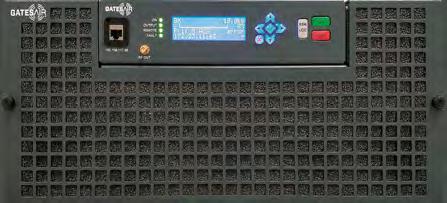
in wireless receivers, the A20-RX uses superior low-loss, brick-wall SAW filters to deliver clear audio in noisy RF environments. These built-in filters also provide immunity from nearby IFB or camera hop transmitters, without the need for external filters or extra cabling. The AutoAssign feature scans a user-designated tuning band and selects available frequencies for the A20-RX’s two channels. This feature is designed to make frequency selection and setting quick and easy.
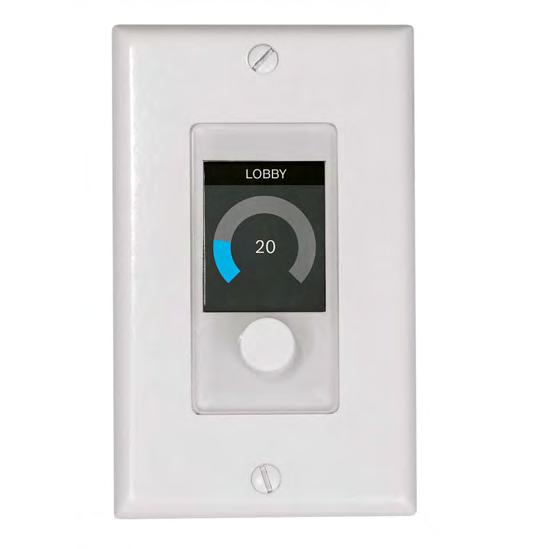
The release of the A20-RX coincides with supporting firmware for the A20-Mini, A10-TX, 8-Series, SD-Utility and A20-Remote. www.sounddevices.com

advances in power density, efficiency and footprint within Flexiva GX’s design has been assisted by GatesAir’s thirdgeneration PowerSmart transmitter architecture.
Supporting N+1 configurations, Flexiva GX transmitters enable large network operators to build very flexible and consolidated transmission sites. The Flexiva GX series also carries traditional GatesAir solid-state design benefits forward, including modular, redundant transmitter designs with hot-swappable power supplies. The transmitters provide
functionality and GatesAir’s latest Intraplex IP Link 100e module.
www.gatesair.com
TO SUPPORT a range of broadcast control applications and workflows, TSL’s standalone Universal Control Panels (UCPs) can be tailored to the user or the unique application. With several form factors available, from controlling a single device to more complex operations, each panel works independently with extended features to suit a range of applications.

As a compact control system, the panels can support standards such as SNMP in addition to having commands programmed directly into TCP/Serial message strings. Each button depicts status information or custom text and can trigger events ranging from a single device parameter or several commands, including dimming the lights, closing the blinds or turning on the projectors. UCPs can be used as part of a full control solution in conjunction with the TSL Control portfolio.
Reported to be adaptable, easy to set up and maintain, the control panels come in various shapes and sizes to suit any installation, from the compact TSL IP Control Buddy to the 30-key Shotbox. Each panel includes Ethernet, serial and GPIO connectivity, while configuration is performed via the dedicated web interface.

As the use of COTS equipment to route IP media continues to gain momentum as a standard in the broadcast market, TSL has also launched X-Connect. X-Connect is a cost-efficient IP routing software and hardware solution that combines a control layer, a user interface and a control processor to make IP routing more accessible. To showcase the technology, TSL has set up X-Connect with hardware devices from several leading industry manufacturers.
X-Connect marries the manufacturer’s virtual control processor, the GTP-V1, which creates a virtual router and enables it to be connected to a control layer such as TSL’s TallyMan. It can then be managed by the user through TSL Virtual Panels or a range of hardware control panels, for a simplified solution for IP media routing. From an operator and engineering point of view, X-Connect resembles the workflow of the more common baseband router, but instead uses IP technology. This provides a benefit to those that have not yet been fully trained using IP routing or are in the early stages of deploying a full IP workflow.
www.tslproducts.com
WHEATSTONE LAYERS introduces the entirely virtual broadcast operation, from multitouch “glass” consoles to backend mixing, audio processing and streaming into the transmitter or CDN provider. Running on enterprise IP servers and computers, Wheatstone Layers software suite aims to replace hardware, including standalone audio processors, mix engines and streaming appliances. One server can host multiple mix, FM processing with full MPX out to the transmitter or stream instances for several studios and locations connected by WheatNet-IP audio networking. Instances can be added as needed for backend mixing, FM processing and stream provisioning, processing and metadata management.
The complimentary Wheatstone Layers Glass software for the laptop, tablet or
other glass surfaces includes full-function radio and television virtual consoles with familiar buttons, knobs and multitouch navigation and menus. The user interfaces are also available for controlling, provisioning and setting audio processing and streaming parameters.


Operating on Hewlett Packard and Dell servers, the software combines the scalability of enterprise servers with the reliability of WheatNet-IP AoIP, mixing, processing and streaming software. Resources can be accessed from the laptop, tablet or other glass devices, as well as hardware controllers and interfaces wherever needed. Backup of the entire WheatNet-IP studios can be completed in a redundant server onsite, along with settings, crossovers and network configurations.
www.wheatstone.com
WISYCOM HAS announced that its Symphony Series wireless microphone system can now be monitored and controlled with the newly available Wisycom App for iOS and Android. Accompanying the release are firmware enhancements including the MCR54 four-channel and MCR54-Dual two-channel true-diversity portable receivers, and the MTP60 bodypack transmitter.
Similar in its conception to the Wisycom Manager PC software, the latest app provides monitoring, control and management of Wisycom devices through a Bluetooth 5 long-range connection. Device frequencies can be changed remotely, audio levels can be monitored and adjusted, and channel/group assignments can be selected. Advanced features include selection of the transmitter and receiver bandwidth and adjustment of the transmitter’s RF output power, in addition to toggling the recording status. In conjunction with the app, new device firmware is also now available for all Symphony Series products. In addition, Wisycom Manager PC software has also been updated and released to match the firmware enhancements.
With the advent of the BFL1 RF-over-fibre interface, Wisycom can better support RF coverage and distribution requirements
without concern for cable loss. Expanding on the Italian brand’s existing RF-over-fibre solutions, the BFL1 features selectable filters, expanded dynamic range and a longrange Bluetooth 5 programming link.
The compact, single-unit BFL1 is configured and controlled via the module’s OLED display with navigation buttons or the Wisycom App. Improving the signal quality and providing a low noise floor for wireless mic and IEM/IFB systems, the module incorporates a custom-designed laser that provides over 90dB of dynamic range.

Like the Wisycom BFA, the BFL1 interface comes with 16 filter banks that can protect against unwanted signals and maximise performance of the connected wireless systems. Optimisation of the BFL1 while adhering to the local RF regulations for productions is promoted with the inclusion of a 40MHz tuneable filter.
The BFL1 can be configured to work with other BFL1 interfaces for point-to-point and point-to-multi-point applications, in addition to the Wisycom MFL RF-over-fibre system. Replacing a requirement for coaxial
cables and allowing the distant placement of antennas, the BFL1 will interface with Wisycom’s MRK980 dual receiver, the MRK16 receiver and the MTK952 wireless IEM/IFB systems.
In brief, the MTP61 is the latest addition to the manufacturer’s Symphony product line, operating across the widest tuning range (470–1,260MHz) currently available. The Wisycom App controlling
through the module’s high-contrast OLED display with front-panel navigation buttons for access to menus and shortcuts.
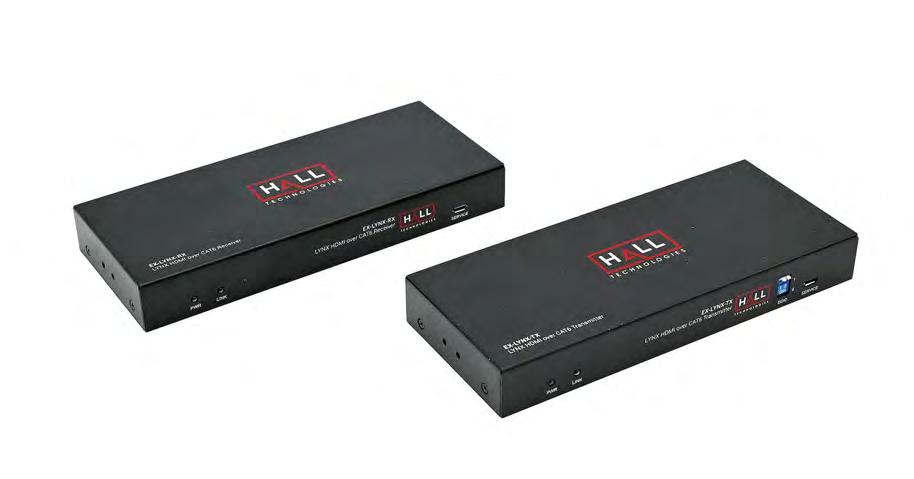

DEVELOPED TO save time on manual processes including media distribution or spatial calibration, the disguise r22 software release adds features that enhance content resolution, production setups and media file management. Intelligent Media Distribution synchronises and distributes those media files within the video layers that are needed across each disguise server. Single Large Canvas (SLC) combines multiple video fragments into a single view output when used alongside multiple projectors. The result is a single canvas that can be used for everything from live event projections to immersive installations, without limitations to the overall resolution of the video. In addition, spatial calibration can be completed in less than half the time of previous releases, helping users save hours setting up their extended reality stages.
With the acquisition of Polygon Labs, disguise has launched its first integrated hardware and software solution for cloud-native broadcast graphics production. Comprising the Porta 2.0 cloud app and px hardware, broadcasters can create, control and collaborate on real-time graphics directly from a web browser. Porta 2.0 and px will automatically match studio lighting conditions to graphics, manage tracking and control LEDs all in one place. With Porta 2.0 and px’s template features, templates can be built of Unreal Engine graphics, including text, images, 3D objects and trigger commands without blueprints or coding. Creative and operational teams can collaborate on virtual sets and 3D graphics production remotely with a web-based interface accessible on a phone, tablet, laptop or desktop.
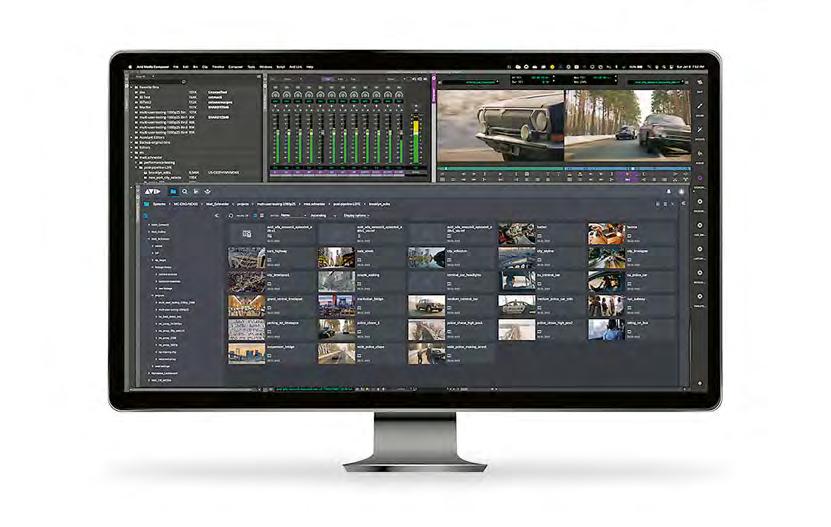
www.disguise.one
ANALOG WAY has announced software release 3.5 for its Picturall media servers. The update integrates Softpix’s SPX realtime graphics solution and supports VIOSO camera-based projector calibration to enable new applications, including panoramic cylinder projections or projection domes.
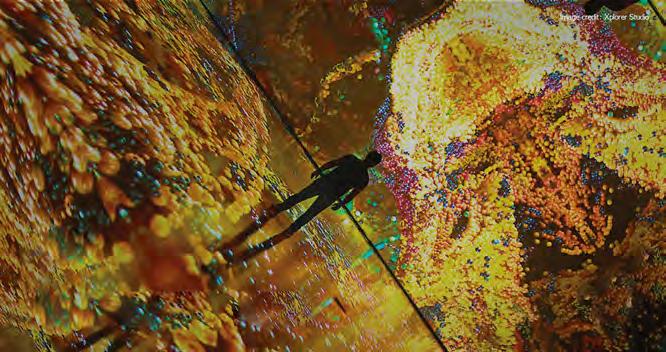
The release follows the partnership agreements recently signed with Softpix, provider of graphics software and creative services, as well as with VIOSO. The integration of Softpix’s SPX real-time graphics solution into Analog Way’s Picturall series allows customers to show and edit graphics and text on both live shows and fixed installations.
SPX integration comes with a special template pack consisting of 10 templates, including name straps, news tickers, countdown clocks, sponsor carousels and other essential graphics. The templates’
THE NEXIS | EDGE solution for postproduction teams permits collaboration from any location with secure, remote access to media and metadata and therefore provides editors with the same media access, workflow and user experience they have come to depend on from in-facility environments. With its proxy workflow, users can select between high-res or proxy media right in the Media Composer | Enterprise timeline, making it easy to go from working at the facility to working remotely, without
Also making their debut are the NEXIS VFS and NEXIS F-series shared media storage solutions. NEXIS VFS allows customers to deploy NEXIS workflows on premises or in the cloud so that they can evolve their operations over time with a flexible, subscription model. Integrated with NEXIS F-series storage engines, or as a cloud or hybrid deployment, Avid NEXIS enables teams of all sizes to work from anywhere, delivering secure access to media and metadata across all tiers of storage. NEXIS | VFS intelligent
optimising bandwidth to delivering protection with automatic drive rebuild, it is said to provide the agile environment and reliability required for 24x7 operation.
Avid has unveiled Pro Tools | Carbon Pre, a multi-mic pre interface delivering 32-bit AD/DA conversion to maximise dynamic range. hing the audio performance of Avid’s Pro Tools | Carbon interface, the new pre enables users to expand their system with 24 channels of mic/line preamps and line outputs, allowing for the capture of large tracking sessions and multi-mic live recordings. Existing Pro Tools | HD systems needing more mic preamps can leverage Pro Tools | Carbon Pre as an eightchannel ADAT preamp expansion unit to scale up I/O. Users can control up to nine Pro Tools | Carbon Pre units in a Pro Tools | HD system,
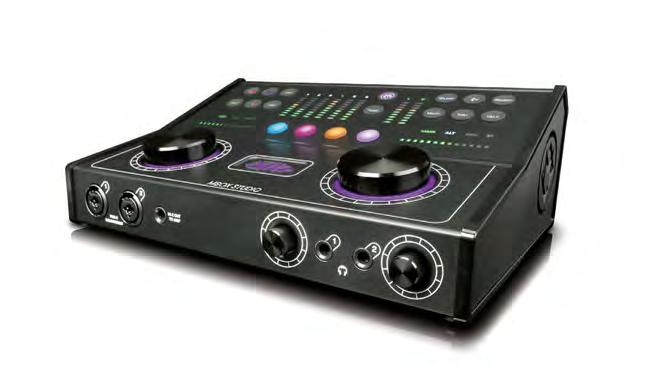
colours and fonts can be themed with CSS style sheets, so they can act as a resource for any production.
Customisation is possible for specific projects and complex interactions with thirdparty systems ranging from a customer’s intranet and dynamic statistical graphs, all the way to traffic control systems. The integration of VIOSO calibration tools allows for support of complex multi-projector installations and automatic recalibration of projector alignment using one or more remotely controlled cameras.
Combined with the power of the Picturall media servers and their ability to reliably play back video content, it will be possible to drive 360° projection domes or complex panoramic cylinder projections from a single media server.
www.analogway.com
while also tapping into the Pro Tools Hybrid Engine for low-latency input processing. To help capture sound quality across the entire system, Pro Tools | Carbon Pre also uses stacked AD converters on each input, while providing double-precision clocking.
In addition to the Pro Tools | Carbon Pre, Avid has unveiled the MBOX Studio desktop interface, a fully featured USB interface that operates on both Mac and Windows operating systems running not only the bundled Pro Tools Studio subscription, but also any third-party digital audio workstations. Users can connect mics, instruments, studio monitors, Bluetooth devices and other analogue, digital and MIDI gear with 21 inputs and 22 outputs. For optimal sound quality, MBOX Studio relies on the same mic preamps found in Avid’s S6L and Pro Tools Carbon system. The interface excels when used for podcasting, livestreaming, social video and sound design for picture, as users can assign buttons to their favourite functions to inject sound effects and bring in other sources and content such as intro music and voice overs.
In brief, Avid’s Pro Tools Flex subscription offering for audio post and music facilities has been renamed as Pro Tools Ultimate.
WITH THE release of the LYNX 4K Extender Set, Hall Technologies has enhanced the feature set with Ultra HD resolution and 4K 60Hz video signal with audio for control up to 60m over a single Cat6 cable. Designed for the educational sector, meeting spaces and hospitality venues with US and EU wall plates, up to eight digital signage display receivers can be cascaded to distances exceeding 400m. Featuring 4K graphics, smooth video playback and audio de-embedding, both

a local loop output for monitoring and playback status of the local source.
Designed to stimulate meeting collaborations, Hall Technologies has also developed the Atlas all-in-one conferencing solution. The conference speakerphone includes an in-built microphone, speaker and a presentation switch that provides an enhanced audio and video experience.

Atlas operates with all soft-codec conferencing solutions and is compatible for Windows, macOS, Android as well as
array with echo cancellation and noise reduction together with an advanced 10W conference speaker. Presentation options include a USB-hub offering resolution up to 1080p@60Hz, an HDMI output up to 4K@30Hz,
USB workflow solutions. Ranger is a 4K multiview presentation switcher
collaboration for the corporate and education sectors by enabling meeting attendees to share videos, images or
screen sources to Hall Technologies’ AV equipment.

Promoting plug-andplay deployment, it transmits up to 1080p video signal with audio and supports a back-post feature when the synch display is a
Hall Technologies is aiming to make meetings more interactive with the addition of Ranger to its portfolio of
their own devices. Compatible with both Apple and Android devices for wireless content casting, Ranger also pairs with the company’s USB-C dongle, Voyager, to allow communications from a laptop. Ranger has three video inputs with HDMI and USB-C both having a maximum input timing of 4K@30Hz 4:4:4. The third input handles Wi-Fi casting for Airplay Mirroring and Miracast, so that it can work as a BYOD receiver. The device offers two simultaneous video processing channels and outputs can be combined into one video signal for sharing a multiview layout on the display.
www.halltechav.com


DESIGNED FOR a wide range of contribution or point-to-point streaming applications over IP within production studios, broadcast facilities or corporate server rooms, VITEC has unveiled the MGW Diamond+ OG encoder. The 4K/multichannel HEVC, H.264 and MPEG-2 encoder comes in an openGear (OG) card format. Promoting easy integration and robust streaming, typical applications for the MGW Diamond+ OG include site-to-site primary distribution, remote production over unconstrained networks and remote/ at-home production over the internet/REMI in addition to standard IPTV distribution. Featuring Ultra High Definition and High Dynamic Range (HDR) support, Diamond+ OG can capture and stream 4K60p from either of its four 3G-SDI or 12G-SDI inputs or a soon-tobe-released SMPTE 2110 input (over 25Gbit SFP interface). The card supports 4:2:2 10-bit encoding, multichannel audio encoding as well as Zixi, SRT, RIST and Pro-MPEG transport protection technology for reliable video and audio transmission. With an increasing number of video feeds being streamed live over various
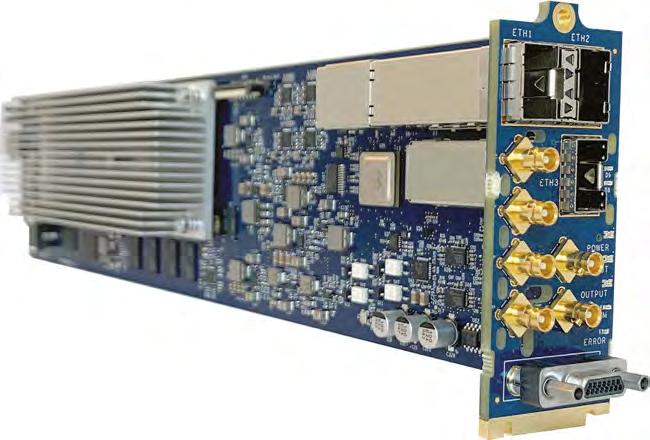
IP transmission links, ChannelLink enables delivery of IP content anywhere, at any time, using legacy baseband video matrices. ChannelLink acts as a central hub where IP channels from the field can be reliably received and retransmitted live, acting as an efficient gateway across any IP network. Suited towards stream management, routing,
and better resolution with the V-Series Iris’s lower latency and increased port capacity, the V-Series IrisX IP panel expands the capabilities of the original V-Series Iris Panel. The IrisX fits into IP-based productions with AES67 connectivity and dual NIC connections. Eclipse HX software features include rolebased workflows and several redundancy measures including N+1 card and network redundancy. Additional benefits of the IrisX include capacity for three concurrent full-duplex uncompressed audio streams and backwards compatibility with MVX-A16 and IVC-32 cards.
Whether the application is in a dark theatre or in direct sunlight at an outdoor event, the upgraded TFT displays in
clearer label information and data display. In addition, the displays are more resistant to burn-in or fading, ensuring a significantly longer overall lifespan. The IrisX is available in 12, 24 or 32 keys in Rotary, Lever and Pushbutton varieties, as well as expansion panels, and can provide up to 64 ports when combined with just a single E-IPA card, and less than 10ms audio latency from the IrisX panel to frame via an AES67 connection. Ideal for public internet applications, three different connection options are supported with a direct fourwire, AES67 or the Clear-Com’s IV-Core protocol.


www.clearcom.com
rebroadcasting or IPTV stream reflection over WAN/internet, ChannelLink also simplifies content delivery of live channels from news agencies as well as sports or entertainment venues.
www.vitec.com
DESIGNED PRIMARILY broadcast and pro AV applications including sporting events, reality television, broadcast trucks and a range of AV installations requiring a high-quality networkable video source, Marshall has developed the CV420e ePTZ camera. Having removed the robotic movement of a traditional PTZ, the CV420e boasts ePTZ functionality that simulates digital pan, tilt and zoom operations within a larger 4K resolution pixel space. Operators can maintain access to wide angles in addition to useable digital zoom and lateral manoeuvres within the sensor.

Featuring a high performance 9.5 Megapixel 4K sensor capable of 4K (UHD) resolution up to 60fps with ultra-clean HD resolutions, the camera’s 4.5mm lens features a wide angle, over a 100° field of view. The CV420e includes

compatible soft codecs and devices. Measuring 114mm in length, the ePTZ model includes rear protection wings to avoid cable disconnect drops. The panel includes a 3.5mm audio input for embedding on all available outputs and can be controlled remotely via Ethernet (IP) and USB. The CV420e is also equipped with a front-facing Tally Light for LIVE.
www.marshall-usa.com
transforms and LUT processing capabilities for delivering accurate colour space conversions for live broadcast, live events, on-set production and postproduction. ColorBox enables a range of HDR and SDR conversions and allows DITs to load, modify and save looks, in addition to creating reference images for dailies to ensure colour accuracy across all production and creative personnel.
Designed to support a wide range of tasks on-set and in live production environments, ColorBox incorporates high-density 4K/ UltraHD processing together with 12G-SDI and HDMI 2.0 outputs for local monitoring up to 4K/UHD video and 30p 12-bit RGB 4:4:4 signal support. ColorBox includes AJA Color Pipeline (ACP) Mode with a 33-point 3D LUT processor with tetrahedral LUT interpolation, four built-in user-configurable 1D LUTs and two 3x3 user-configurable matrices.

A USB OTG port and third-party Wi-Fi adapter provides wireless access to the
include a built-in RGB colour corrector and ProcAmp, LUT, matrices and image libraries, capture and recall capabilities together with ancillary (ANC) metadata management. In addition to ACP, ColorBox offers Colorfront, BBC HLG LUT, NBCU LUT and Orion-Convert Modes, and any one can be active at any given time. Ultra-low latency ensures sources remain within the timing window of the downstream switcher in live production workflows. Frame capturing features include pre-processed image capture or post-processed output capture for reference stills with overlaid metadata, such as video payload IDs, pipeline configuration and customisable user text. The frame captures can be saved locally and exported to the configuration PC running the web browser-based ColorBox user interface. A built-in test pattern generator promotes ease of setup and signal path validation.
www.aja.com
WITH THE addition of four Ultimatte 12 real-time compositing processors, Blackmagic Design claims to have created the next generation of broadcast graphics. The lower-cost Ultimatte 12 HD, Ultimatte 12 4K and Ultimatte 12
all four models produce identical quality compositions. Sub pixel processing automatically generates internal mattes, ensuring different parts of the image are processed separately based on the colours in each area. Particularly
television standard they are using. The Ultimatte 12 HD Mini model with HDMI connections allows ATEM Mini users to benefit from broadcast-quality keying when building innovative fixed-camera virtual sets. Eliminating the cost of external equipment, all Ultimatte 12 models incorporate built-in frame stores for keying using stills for backgrounds. Retaining the same image processing algorithms and internal colour space,
parameters.
The improved flare algorithms remove green tinting and spill to reportedly create true, realistic-looking virtual environments. With the elimination of shadows or transparent objects with reflections, the Ultimatte 12 units automatically sample the colours and create seamless mattes for walls, floors and other parts of the image, before applying the necessary corrections.
The Ultimatte 12 4K and Ultimatte 12 8K models feature advanced 12G-SDI connections for operation with current HD video formats, in addition to future Ultra HD and 8K video formats. The Ultimatte 12 HD Mini model allows conversion of SDI camera control to HDMI, ensuring an ATEM SDI switcher can control an HDMI-connected Blackmagic Pocket Cinema Camera. The Ultimatte 12 HD can translate SDI to HDMI for the cameras as all ATEM switchers transmit camera control over SDI. All Ultimatte 12 units include free Ultimatte Software Control for Mac and Windows.

An update to Blackmagic Design’s DaVinci Resolve software has been announced, featuring support for editing in vertical
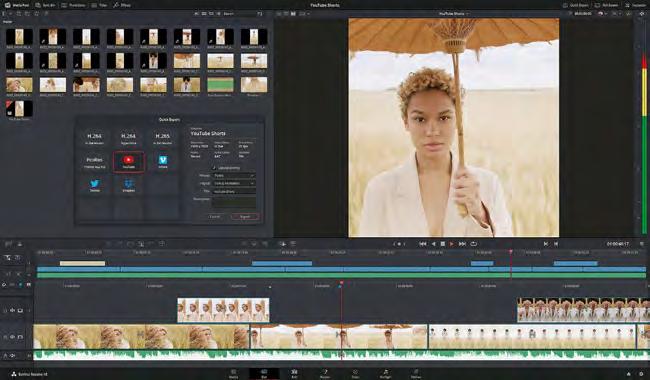
resolutions such as TikTok, Snapchat and Instagram TV, as well as automatic locking of individual timelines within bins for multi-user collaboration. DaVinci Resolve 18.1 also makes projects imported from ATEM Mini ISO projects easier to edit for customers, with audio now attaching to the video clips. DaVinci Resolve for iPad has also been unveiled, designed for creators “to extend video workflows in new ways and new places”. Optimised for MultiTouch technology and Apple Pencil, DaVinci Resolve for iPad features support for cut and colour pages, providing access to DaVinci’s image technology, colourfinishing tools and latest HDR workflows.
www.blackmagicdesign.com
ENGINEERED TO deliver bright, true-tolife images ranging from 6,000–10,000 lumens within corporate, education and digital signage applications, Epson has launched a new suite of high brightness laser projectors.


Equipped with 3LCD technology, the EB-PU1006W, EB-PU1007W, EB-PU1008B and EB -PU2010B models faithfully reproduce colour without a rainbow effect. Integrating a high contrast ratio and a 4K enhancement feature, the projectors support HDR10 and Hybrid Log-Gamma for precise detailing for light and dark graduation contents. Outputting in 1920x1200 resolution, the lightweight
Working with the Epson Projector Config Tool, the Near Field Communication (NFC) function provides a check on projector information, completes a diagnosis, configures the network and changes projection settings. Designed to enhance the process efficiencies of up to 100 projectors, the management function can operate when the projector is switched off by placing an NFC-compatible smartphone over the NFC mark. Easier integration with existing systems is promoted with the Open Web API that implements commands that control the projectors.
The Epson PU-series units accept a wide range of interchangeable lenses, including
to position, brightness and colour can be applied with the motorised lens shift and wider lens shift range. The wider lens shift range together with a stepping motor ensure precise adjustments when employing projection techniques, such as edge blending and stacking. Ceilingmounted projectors can be adjusted via remote control or over a network – the optional ELPFP15 suspension adapter can be attached to the ELPMB67 mount. Developed for the educational, corporate, museum and visitor attraction sectors, Epson has unveiled the PU2200 Series of projectors. Ranging between 13,000 to 20,000 lumens of equal colour and white brightness, all three models are designed to deliver image quality at
4K enhancement support. The Japanese brand claims that the PU-2220B laser model is the world’s smallest and lightest 20,000-lumen model available on the market.
The PU2200 projectors incorporate advanced features including scene adaptive gamma correction, 4K enhancement technology and improved optical parts.
In addition, the optimised compensation plate allows for enhanced native contrasts including truer-to-life dark colours and brighter scenes that can be calibrated to be more balanced in the display. The latest model also covers over 92% of RGB, so that images are represented more accurately.

THE LUMINATE Ultra Series LED videowall display has been added to Leyard’s portfolio of outdoor display solutions. Designed for transportation, signage, retail exteriors, poolside cinema, entertainment, hospitality and other large venue facilities, the fine pitch outdoor LED display is designed for up-close viewing in high-ambient light environments.
Rating to withstand weather conditions, dust and water. The displays also include a protective coating that fills the gaps between LEDs which strengthens weather protection and increases visual contrast for deeper black levels.
The second-generation of Leyard’s Black Diamond series has also been launched, introducing new Micro LED display technology for pixel pitches

for the first time. The company’s Nin1 Micro LED
continues to serve products with pixel
THE CANADIAN manufacturer has launched what it describes as the ultimate routing, multiviewer and signal processing platform. Natively supporting 12G throughout the entire chassis, Ross Video has evolved the Ultrix series with the release of the FR12 Router. Currently the only router with an integrated production switcher, deployment of the UHD production-ready router ensures that hardware does not need to be replaced and capacity is not lost.
The software platform enhances power efficiencies together with significant savings in cost and space. No additional hardware is required as the software is defined as Pay as You Go and adds new features through additional software licences.
audio processing, frame synchronisers, quiet switching, UHD gear-boxing, production switchers and audio mixing.
With coated LEDs for ruggedness and image detail, the Luminate Ultra Series provides nearly 140° visibility and is designed to enhance viewing angles with limited interference, even in direct sunlight. With models in 1.5mm and 1.9mm pixel pitches and up to 3,500 nits of brightness, it supports viewing from as close as 1.8m.
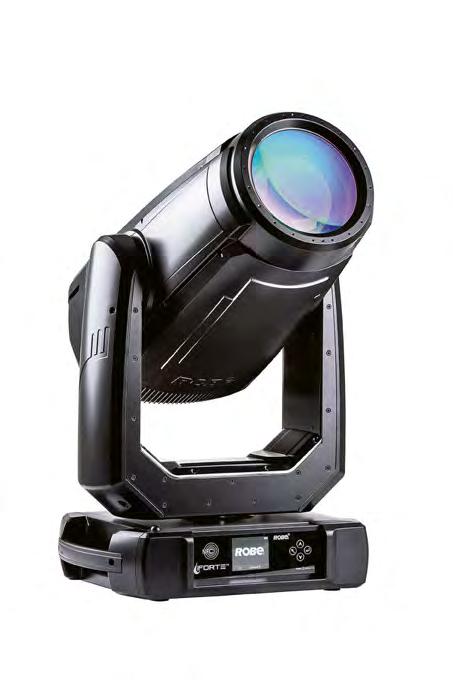
Supporting wall-mounted, corner, convex and concave installations, and with full front and rear installation and service, the display is said to be flexible enough to create a videowall of nearly any size. It features an IP65 Ingress Protection
1mm. The new Black Diamond series uses flip-chip technology that reportedly results in higher stability and reliability than previous SMD LEDs, together with three times the contrast ratio and twice the brightness. The result is uniform light distribution with lower power consumption.
The Black Diamond series makes use of a common cathode driver IC and ASIC display control chip with independent intellectual property rights which results in a 27% power consumption reduction compared to a common anode driver design when running at 600–800-nit brightness. It’s also capable of 2,000-nit peak brightness at peak power consumption. Advanced image processing technology is also reportedly capable of achieving 100% of the DCI-P3 colour gamut with twice the colour purity.
sz.leyard.comThe modular input and output matrix of Ultrix allows unique I/O cards to be inserted. Customisation of the Ultrix Connectivity
The smart door also serves as an LCD display that monitors the system and serves as an interface for configuring via a highresolution, full-size touchscreen panel. The FR12 includes up to 288x288 SDI ports with a 6144x6144 TDM audio fabric, up to 288 frame syncs and 288 switches. Independent and individual control is enhanced with up to 48 independent multiviewer heads in the 12U chassis, with each head supporting up to 100 pips. Routing, processing and configuration down to a mono channel can be performed regardless of I/O. With an optional UltriMixMXR licence added to the fabric, a virtual, fully routable audio mixer is enabled, promoting audio flexibility and capability to the Ultrix chassis.
Platform as a 12G-capable router, multiviewer and signal processing platform, a hybrid-IP switcher or a signal-processing hub is promoted as the cards are compatible with each other on a single chassis.
AN IP65 variant of
Forte moving light has been unveiled
the Czech manufacturer. The iForte combines the same high output as the original model, as it uses the same Transferable Engine LED, and combines its outdoor protection in a package that’s just 1.5kg heavier. The ingress protection system integrated into the fixture reportedly allows standard maintenance and preparation procedures –such as
Transferable Engine exchange or gobo replacement – to be onducted onsite and without any additional tools.
The onboard RAINS (Robe Automatic Ingress Neutralisation System) manages humidity, temperature and pressure control, using active monitoring to automatically remove any moisture detected within the fixture. Ongoing monitoring also ensures peak performance of the
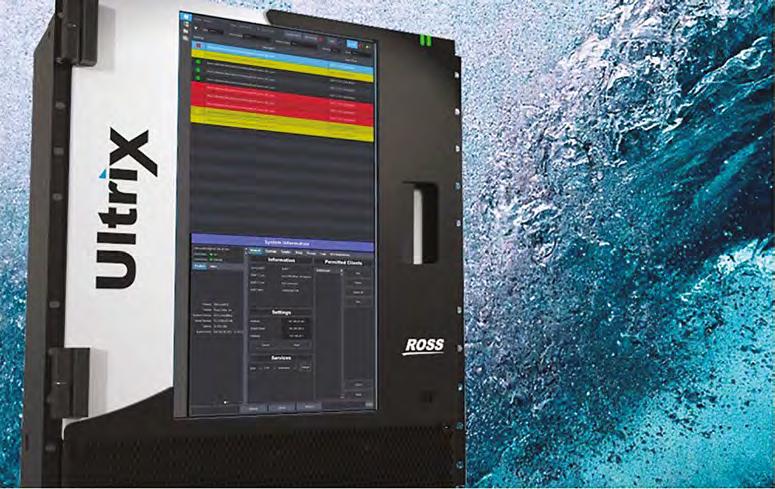
www.robe.cz
Supporting a mix of SDI, fibre and IP signal I/O, the engineering design focuses on the workflow so that Ultrix can be configured as a single frame solution or as part of a multi-frame distributed architecture. Termed as “production in a box”, the hyperconverged design incorporates video/audio routing, multiviewers,
Up to eight SDPE blades can be configured as a single 8ME Ross Acuity switcher, eight independent Ross Carbonites or a combination of a 4ME Acuity and four independent Carbonites. Designed to perform in harsh environments, the hardware integrates thermal management, locking card guides and edge connections, together with an advanced internal smart fabric.
www.rossvideo.com
DESCRIBED AS a powerful 70,000-lumen LED wash fixture, the Proteus Brutus is an IP65-rated moving head capable of producing piercing beams and high-intensity washes and forms the latest addition to the Proteus lineup along with the Proteus Rayzor 1960 wash effects fixture.
Suitable for any outdoor application requiring superior output, bright and powerful wash,
and quiet operation, the Proteus Brutus houses a 1,200W 6,500K white LED engine offering CMY colour mixing, variable CTO and a six-position colour wheel, with an effects system that features rotating gobos, animation, iris and frost. An optional indexable framing module is also available. With a zoom range from 4–45° and a 220mm front lens, the Proteus Brutus has
the Robe byDESIGNED FOR outdoor use in events and livestreams, Cameo has expanded its product portfolio of IP65-certified LED soft panels with the S Series. Creating a limelight with a natural, diffuse light, the S4 IP model features colour rendering. Drawing upon a wide range of accessories, the compact S4 IP is based on 544 single SMD LEDs per colour (RGBWW) arranged in a cluster of four. In combination with the integrated calibration chip, the S4 IP exudes natural colour rendering (CRI 95, TLCI 91) in addition to an extended Rec. 2020 colour space of 85%. With its wide range of 1,800–10,000K, the adjustable colour temperature promotes its use in all environments. Fixed handles on the sides
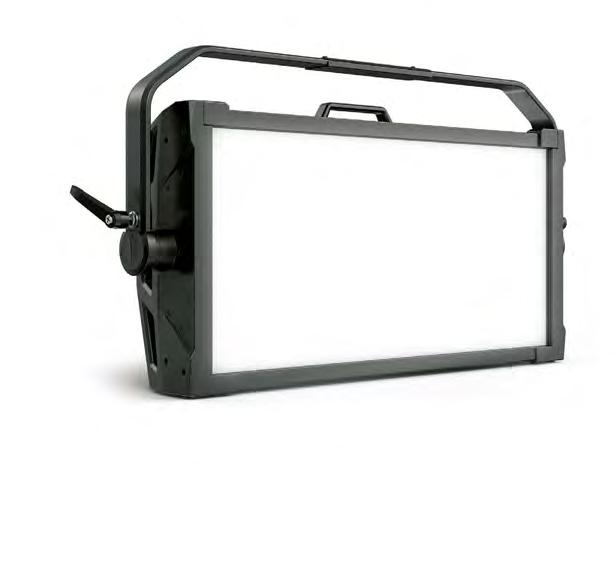
www.cameolight.com
CHRISTIE HAS added the CounterAct UR10 to its line of commercial UVC disinfection light fixtures for occupied indoor spaces. The CounterAct UR10 with UVC-LED is recommended for commercial offices, government facilities, schools, transit hubs, retail shops and medical centres and builds on the release of the CA20, Christie’s first far-UVC disinfection fixture. Combining filtered Care222 farUVC light with upper room high-power mercury-free UVC-LED, the CounterAct UR10 is described by the manufacturer as an evolution in technology for treating both surfaces and air in occupied indoor spaces.
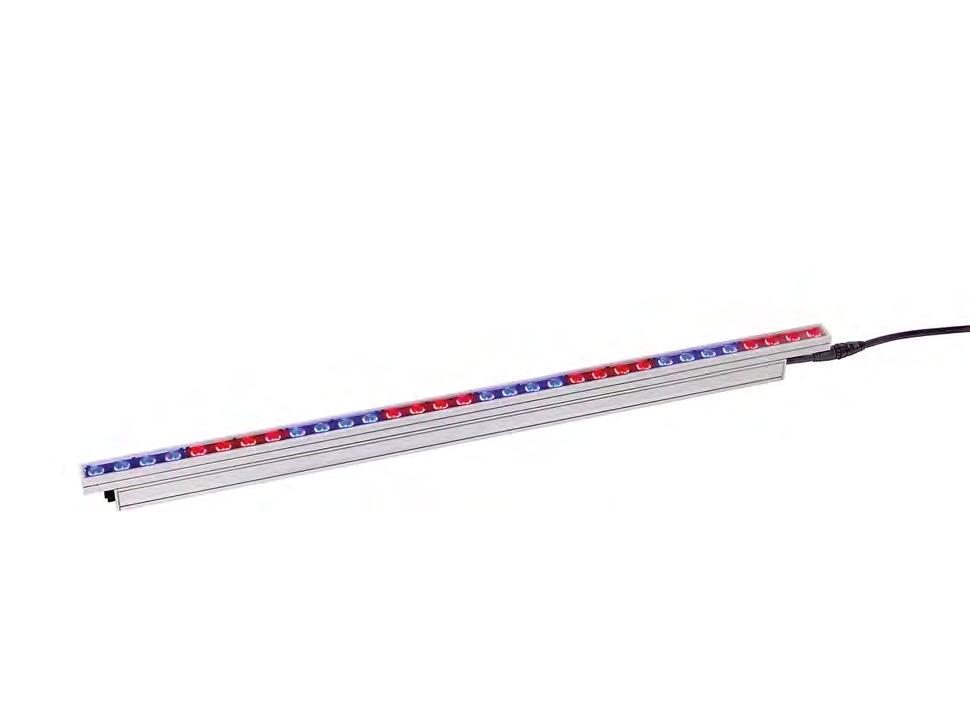

HARMAN PROFESSIONAL has introduced the Martin MAC Aura XIP, a premium moving head wash light that it states “raises the bar for optical quality” while featuring an even wash field with a soft edge, minimal stray light and highintensity mid-air beams. The fixture houses an aura filament effect, with improved light engine control and an outdoor rating with reportedly close to zero compromises in weight, size and aesthetics.
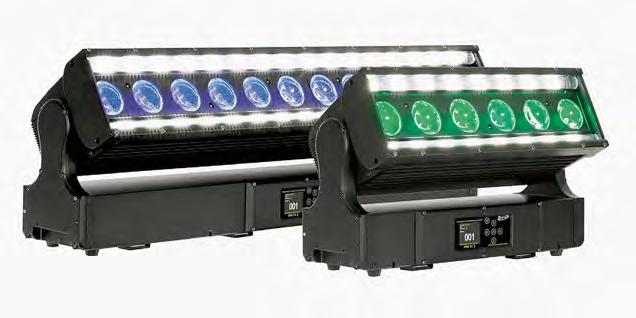
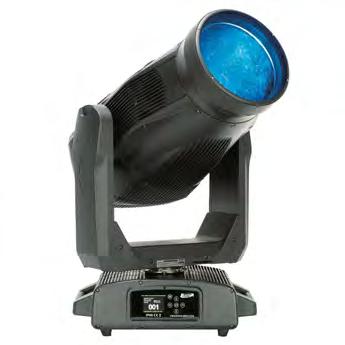
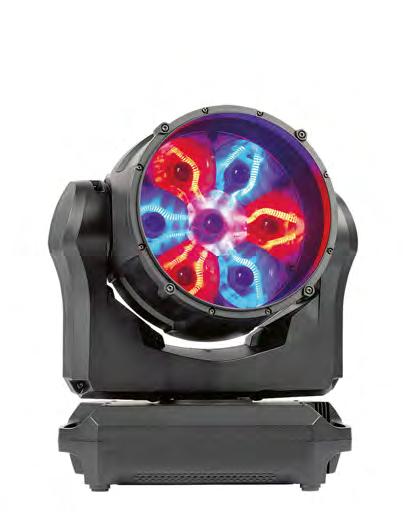
The MAC Aura XIP’s 12 Radical RGBW filaments are said to deliver a brighter aura backlight effect as well as the ability to show iconic aura filaments, promising new and exciting stage effects. The feature package covers both indoor and outdoor applications with optional high CRI, TM-30 and TLCI modes, LED frequency control for a flicker-free even wash light, RGBW colour
to increase confidence and improve wellbeing in our indoor spaces, such as meeting rooms, classrooms and other places people gather. Combining filtered Care222 far-UVC light with upper room high-power mercury-free UVC-LED, the CounterAct UR10 is described manufacturer as an evolution in technology for treating both surfaces and air in occupied indoor spaces.
airborne and surface pathogens, can be installed in rooms with ceiling heights between 3–7.6m, includes remote control features with iOS and Android support and can be integrated with building automation/management
sufficient power to cut through at great distances in any outdoor concert or special events and, with its fully dust and waterproof
design, is said to be an ideal fixture for any application that benefits from its sealed IP65 housing.
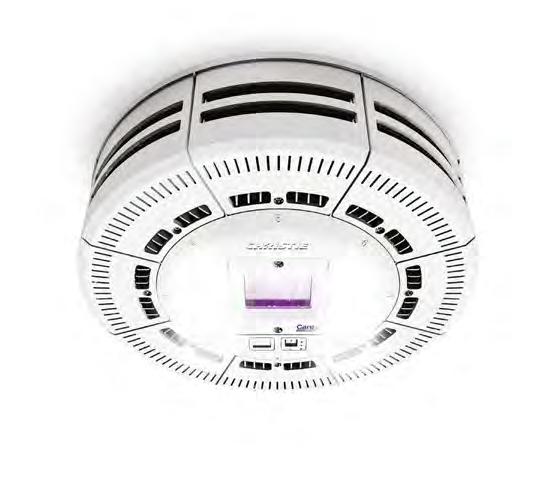
a 5.6–44° zoom capable of projecting well-defined mid-air beams, as well as wide and even wash coverage. Driven by 19 independently controlled 60W RGBW LEDs, the Proteus Rayzor 1960 provides a powerful beam (over 17,000 lumens) that stands out on any stage. The fixture’s oversized front lenses create a large surface enhanced by Elation’s SparkLED technology for an additional layer of effects.
www.elationlighting.com

HAS COME A LONG WAY since the Turing Machine proposal in 1936 – actually a mathematical proposal, not a real machine. But it proved that machines could fill in logical gaps in processing without human intervention, and that is precisely what makes AI so useful in AV. The more we can save labour, time and cost when setting up audiovisual connections of any kind, the more the CFOs like it. Equally happy are the integrators, who can leave things to their own devices, quite literally, while moving onto something else. So, how is AI being heralded in AV right now? It’s clearly bringing something to the party and appears to be providing applications with one kind of benefit or another. Take, for example, Williams AV’s Caption Assist, which promises real-time transcription of up to 73 languages and dialects. “Captioning” is a transcription of the speech in the soundtrack that appears on the screen; familiar in film and television but with applications in any AV context where language support is needed and there is a screen available to display it. In computer-based systems, the software can convert the speech into text in real time, even translating into different languages if required.
Caption Assist uses AI to caption live video feeds. The audio is taken from a microphone or line source and processed in the cloud, the machine having “learned” many different languages for translation as well as transcription. “The educational benefits of open captioning,” according to Williams AV, “make Caption Assist a great fit for people who are visual learners, learning a new language or in an environment that isn’t suitable for sound reinforcement. Caption Assist is also an alternative solution for assistive listening needs and caters to people in the deaf community who don’t know sign language.”
A different product, Convey Video, translates up to 109 languages and 28 dialects into subtitles as you watch. But other manufacturers are using AI to improve sound quality in a variety of applications, with conferencing at the forefront of innovations designed to increase clarity, understanding and interpretation.
Danish headset and earpiece manufacturer EPOS has products that separate human voices from extraneous sounds using the company’s trademarked EPOS AI. The company’s latest headset, the Adapt 660, claims to be the world’s first UC-compatible headset with “machine learning” – namely, an enhanced voice pickup that has “learned” the difference between the human voice and the kinds of ambient sounds that usually accompany dialogue. It adds this to the more established technology of active noise cancellation, so building up a set of features with obvious benefits.
Biamp has its own solution along these lines, called Launch. This is described as “an automated one button solution to better room audio” and is already enjoyed by the Parlé VBC 2500 videoconferencing bar. Biamp refers to “advanced signal processing intelligence” and all of the company’s products that support it can offer automatic room tuning and post-tuning reports – as well as integration with SageVue, Biamp’s monitoring and management platform. Launch uses a deep machine learning algorithm that can identify human speech and disregard “all forms of unwanted sound like keyboard tapping and paper shuffling”. The Parlé VBC 2500, in particular, has microphone clusters that track delegates around a room, having divided the room into zones for the optimal coverage of multiple voices. Biamp calls its AI “Biamp Audio Intelligence”, but the VBC 2500 adds a wide angle 4K ePTZ camera too, with a 12MP sensor enabling a 120° field of vision.

Going a step further into cross-brand collaboration, Shure’s recent optimisation of room setup with IntelliMix Room 4.0 includes a new integration with Crestron’s XiO Cloud management platform for device monitoring. Clearly, it’s a solution that maximises efficiency, speeds up planning and streamlines the functions of the technology, so how does AI achieve these goals? “Some AI is built on rules that encode human decision-making processes and some on machine learning – machines trained by data scientists,” explains Dan Law, Shure’s senior director of strategic software. “IntelliMix Room has both flavours. Some tasks are human; some are ‘superhuman’ – no human can remove noise from audio in real time.”
Adds Lauren Simmen, director of product marketing at Crestron: “We sometimes take chipsets that do this, but planning and testing is critical. If you want to build AI algorithms into a device, you have to make sure everything down the line is compatible. That’s why I believe AI will be driven at a proprietary level.”
Sam Kennedy, Crestron’s senior director, product marketing, sums up the importance of getting AI just right. “People’s voices are being heard, and people’s faces are being seen, leveraging our technology,” he says. “In fact, it’s part of how, in our space, we’re delivering the best experience to the user.”

“And the integrator,” adds Simmen. “The XiO-IntelliMix Room relationship is another side to that experience. The predictive maintenance possible means preventative health for the system, and the system can make changes without human interaction. Our integrators get the advantages at the back end too. They know that the rooms can heal themselves.”
www.crestron.com www.shure.com


The Adamson Fletcher Machine is an audio rendering processor offering incredibly simple operation with highly efficient spatialization tools, with hardware models offering 32, 64, or 128 inputs and outputs. To learn more about the Adamson Fletcher Machine visit our website at www.adamsonsystems.com

Don’t miss us at: ISE 2023 | Jan 31 - Feb 3 Booth 7F200









Think differently about how amplifiers should work: Explicitly designed for installation environments, LA7.16i is a multitasker with 16 output channels, each able to produce 1300w at 8 ohms.
Multi-Channel, Multi-Type, Multi-Time, Multi-Signal.
